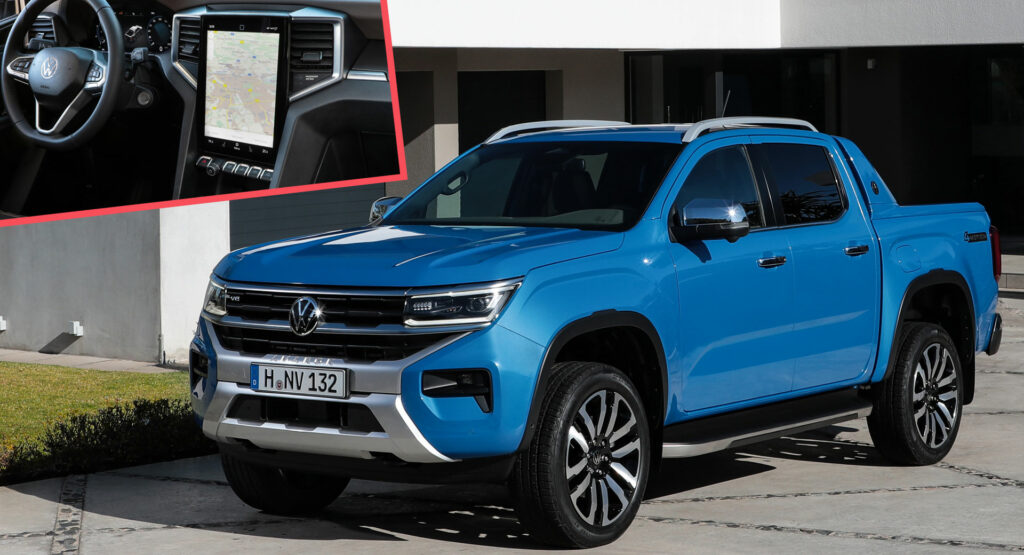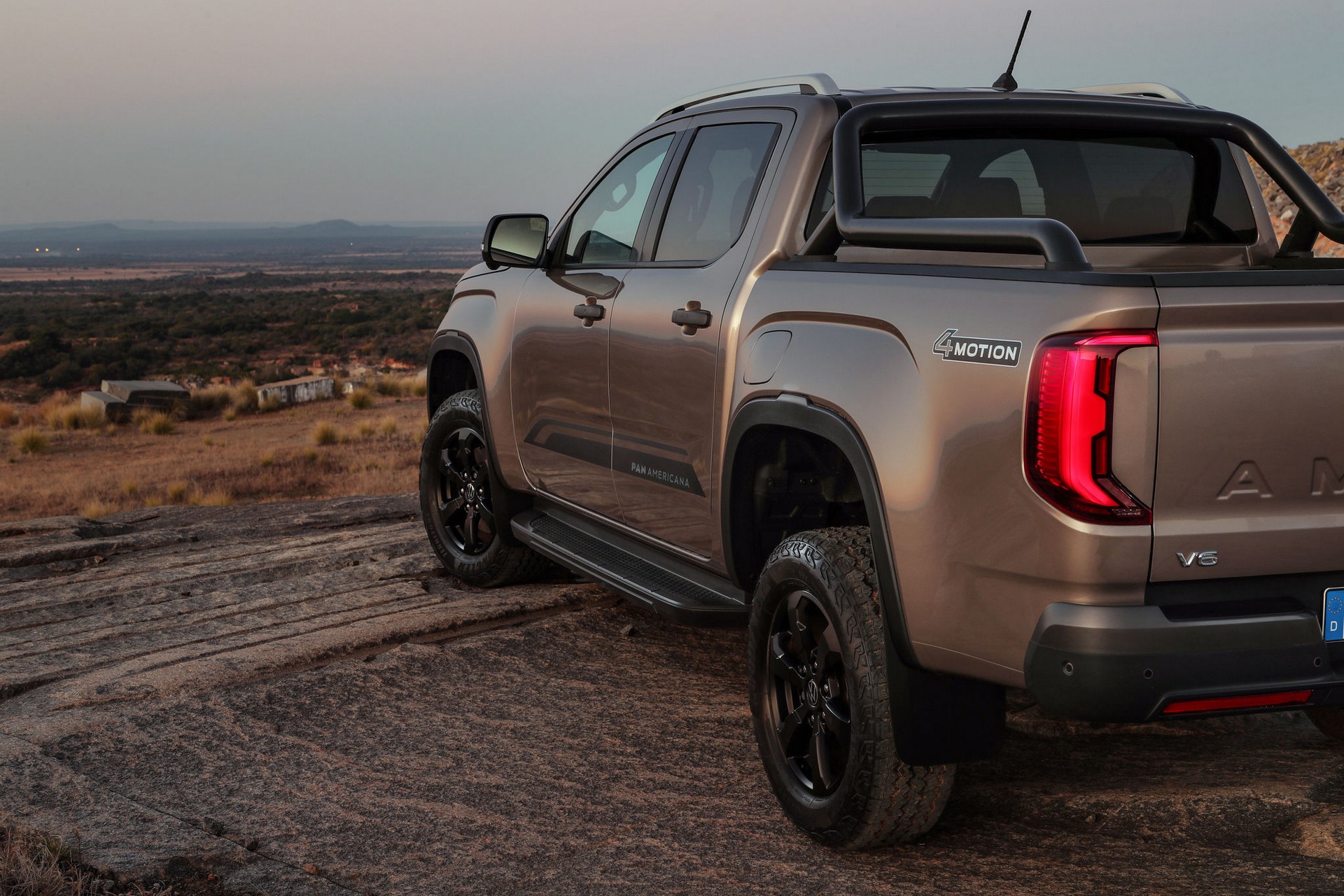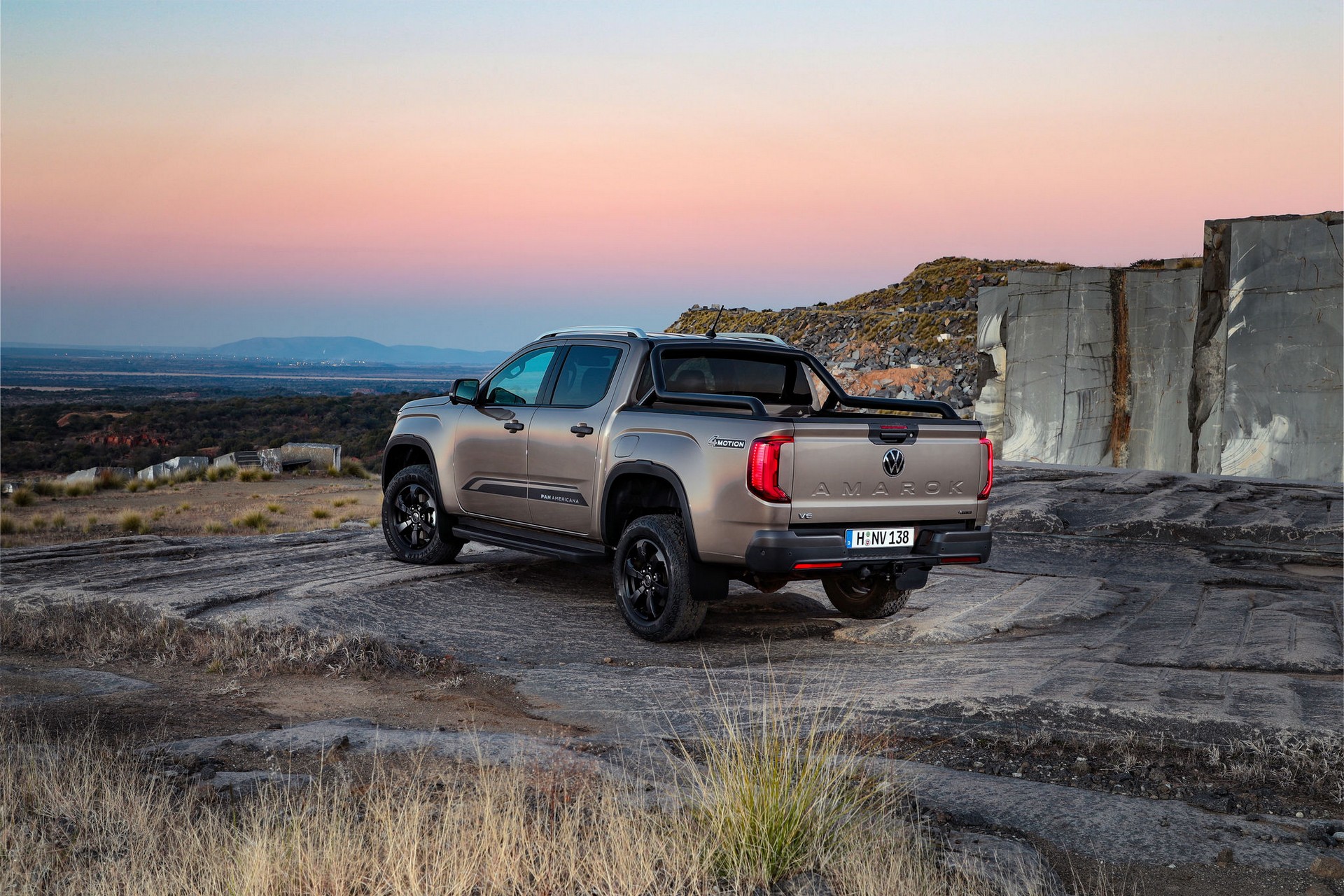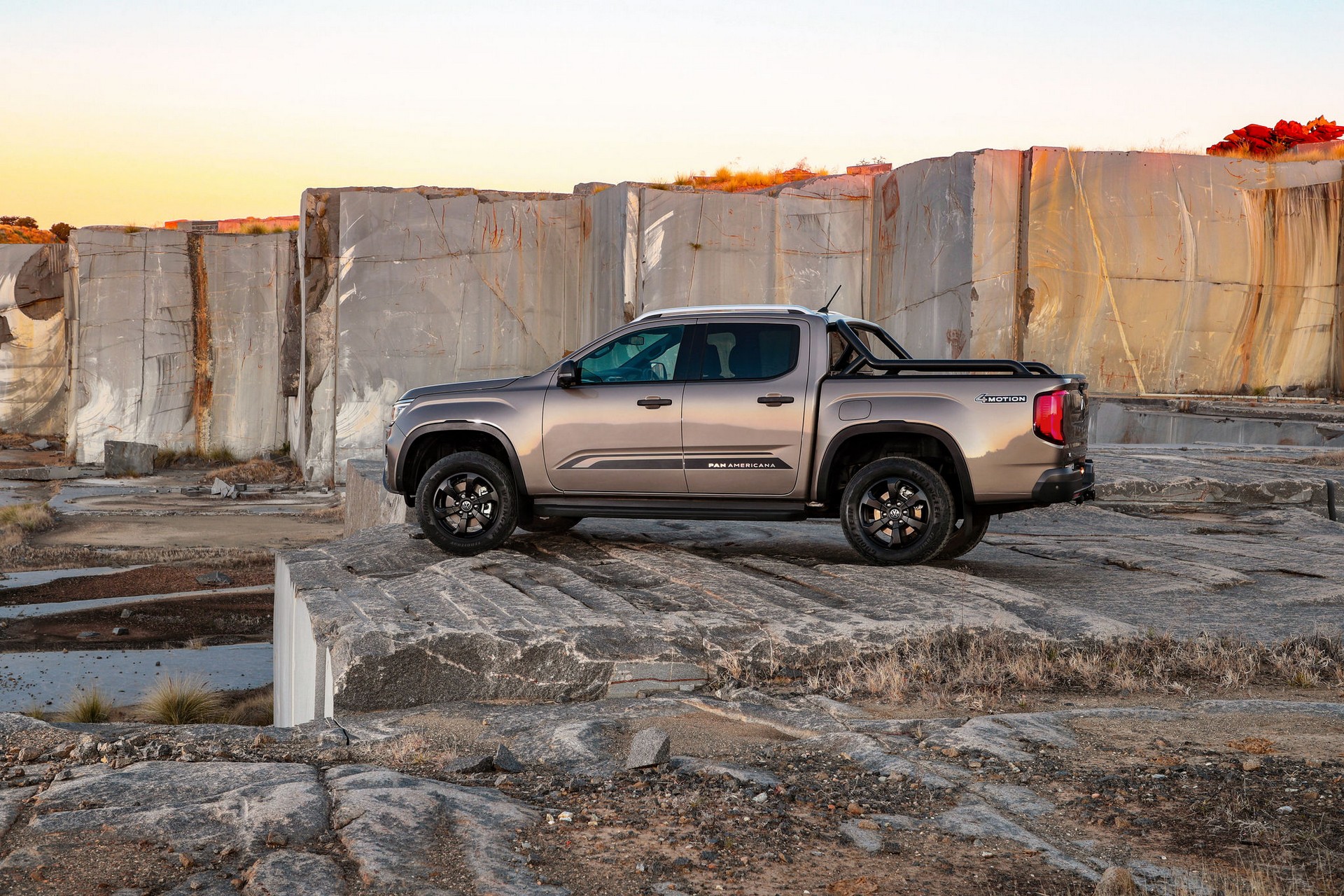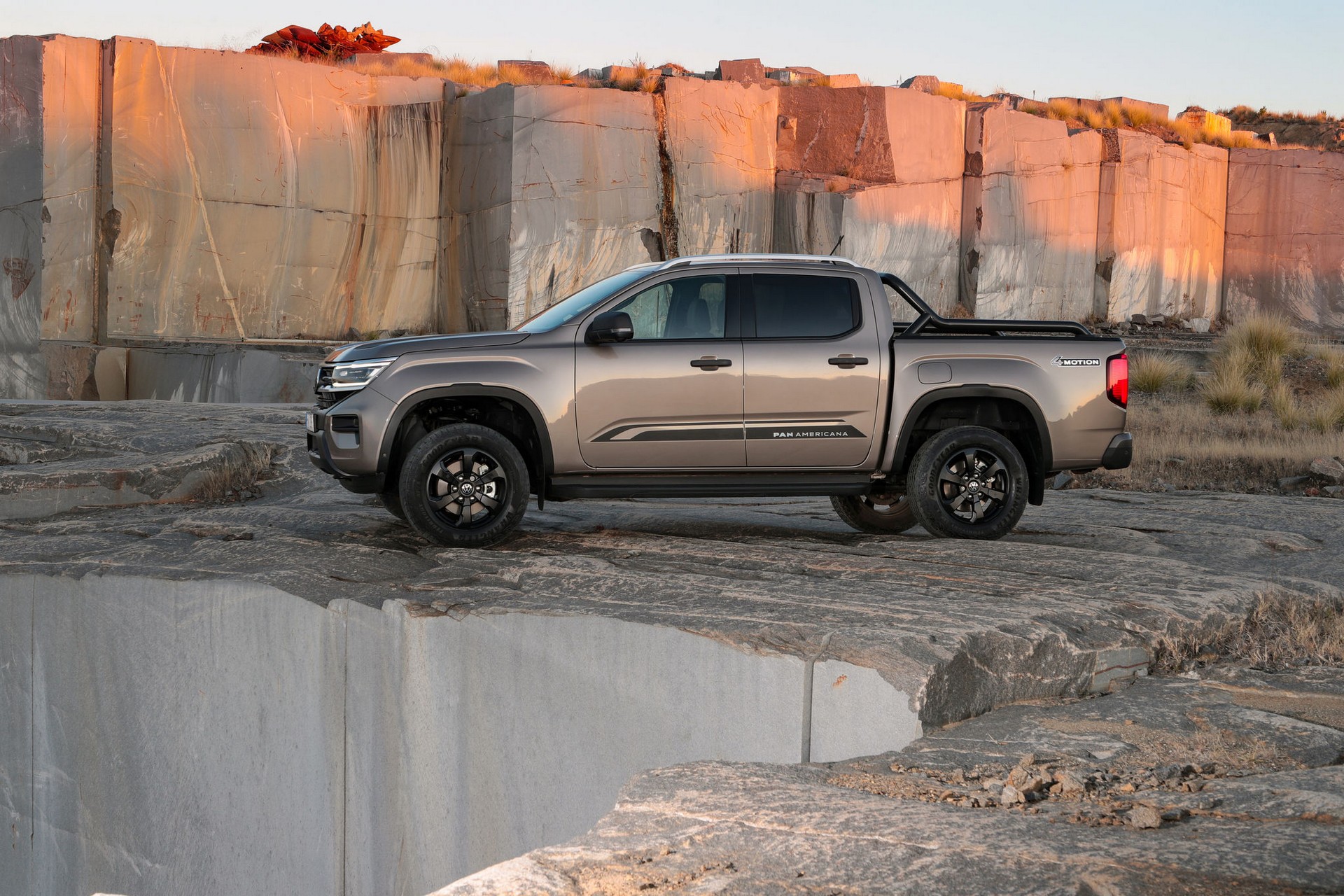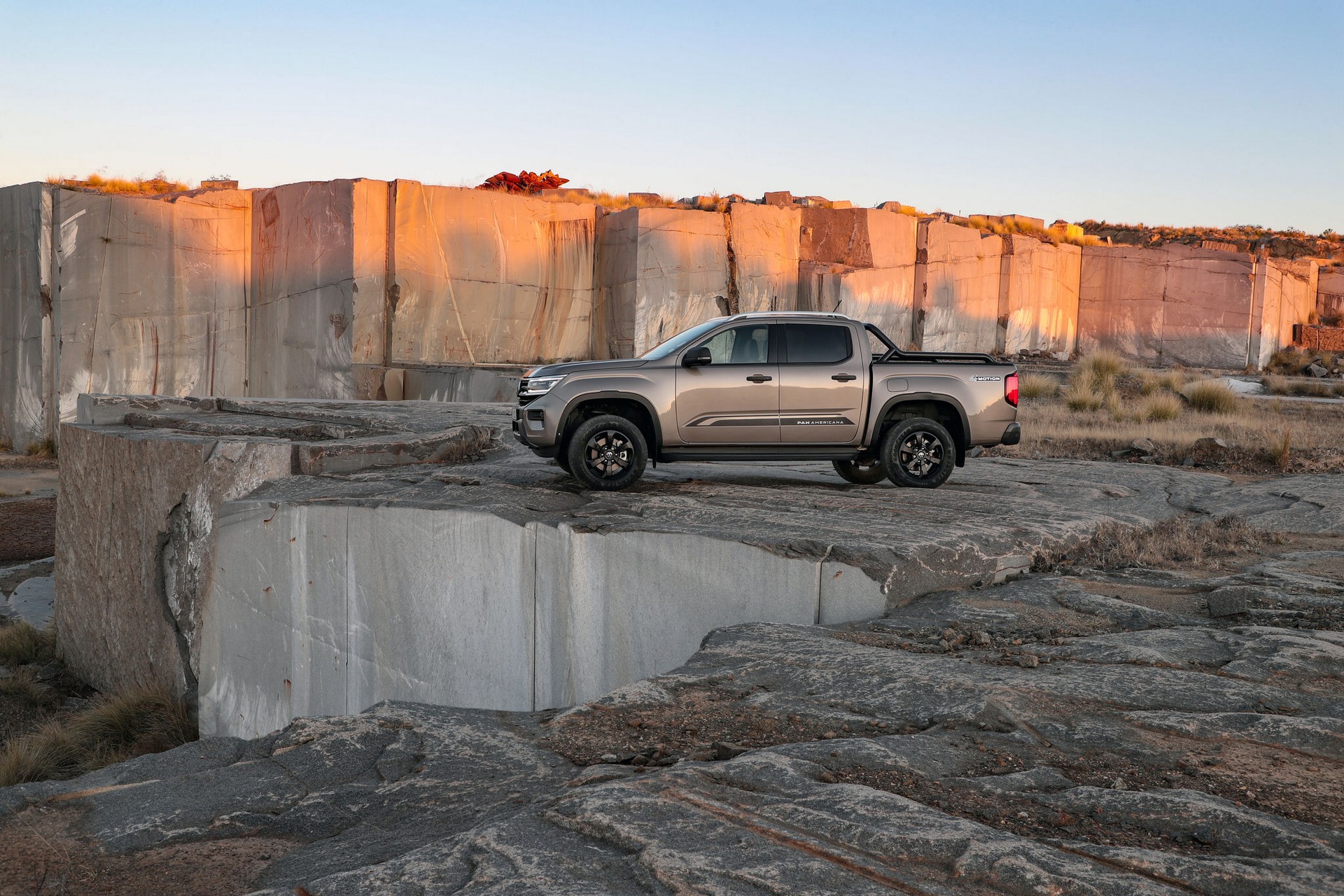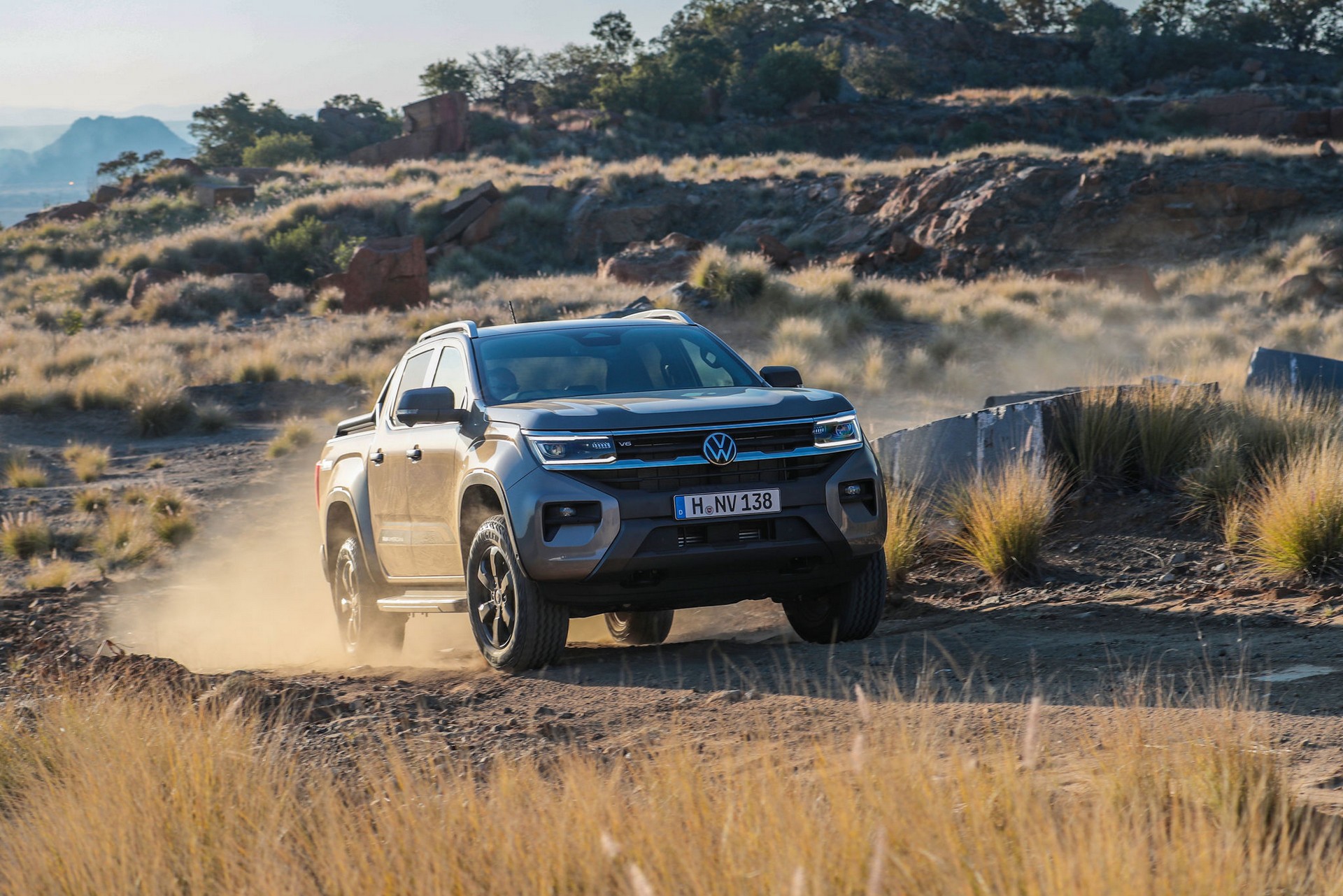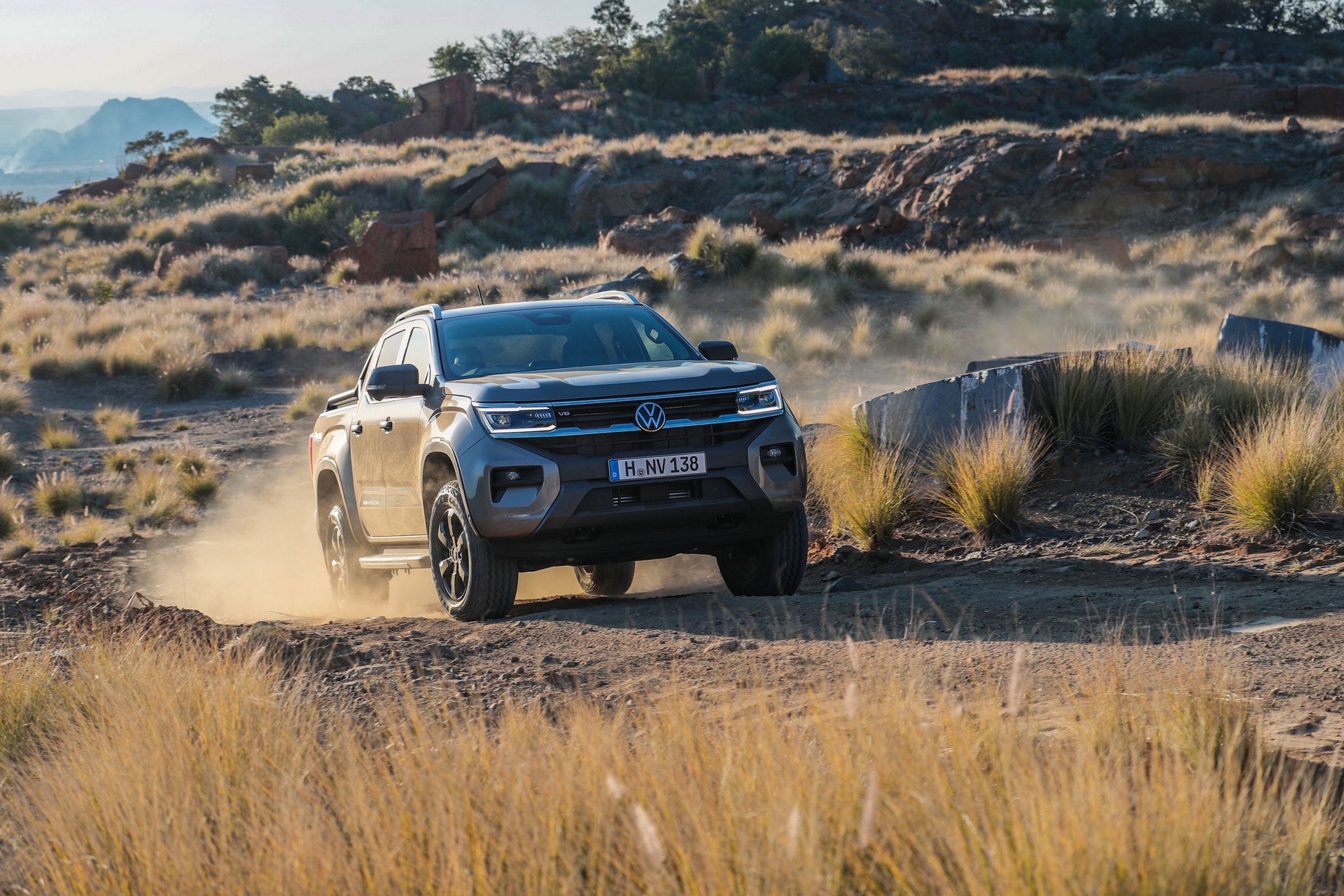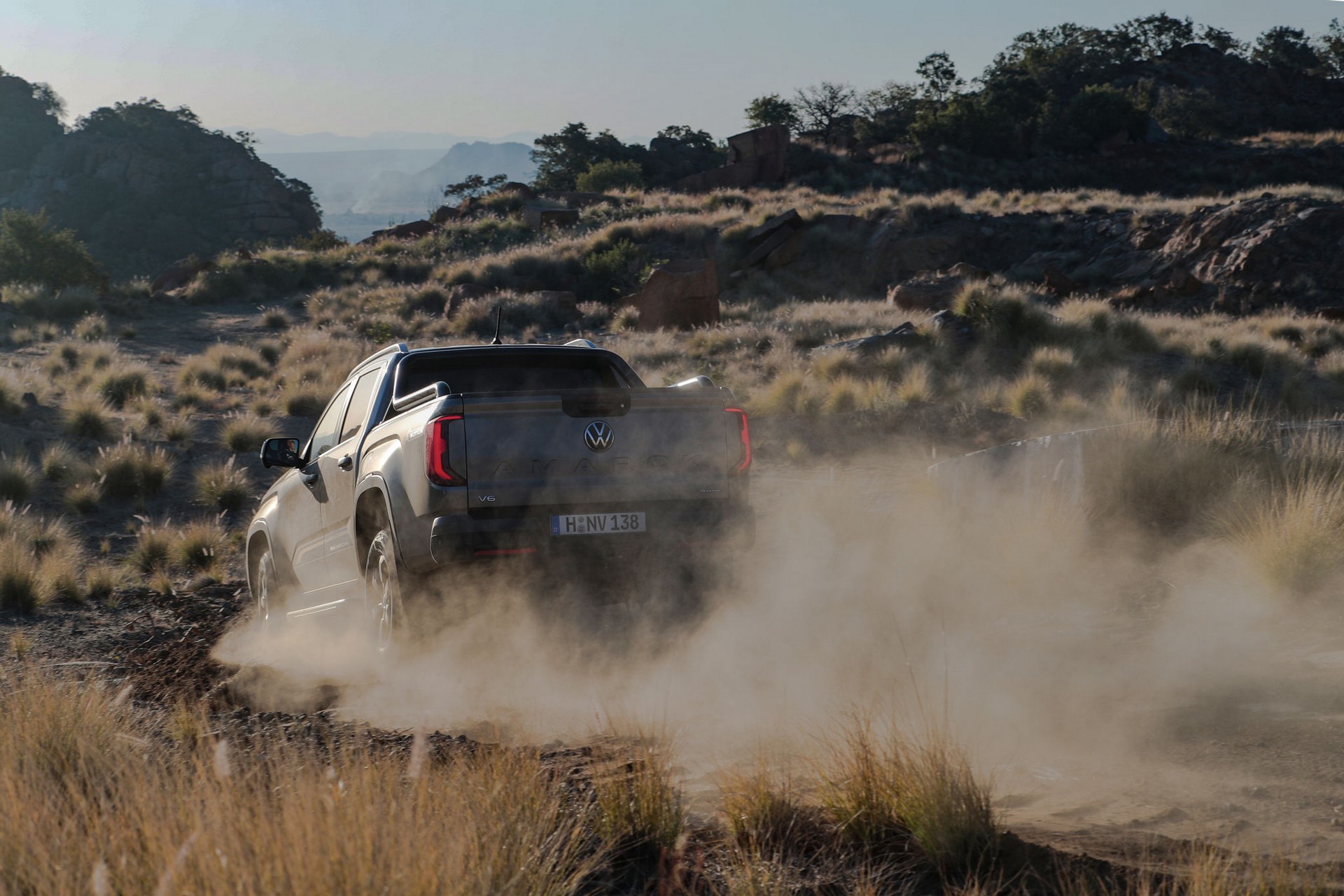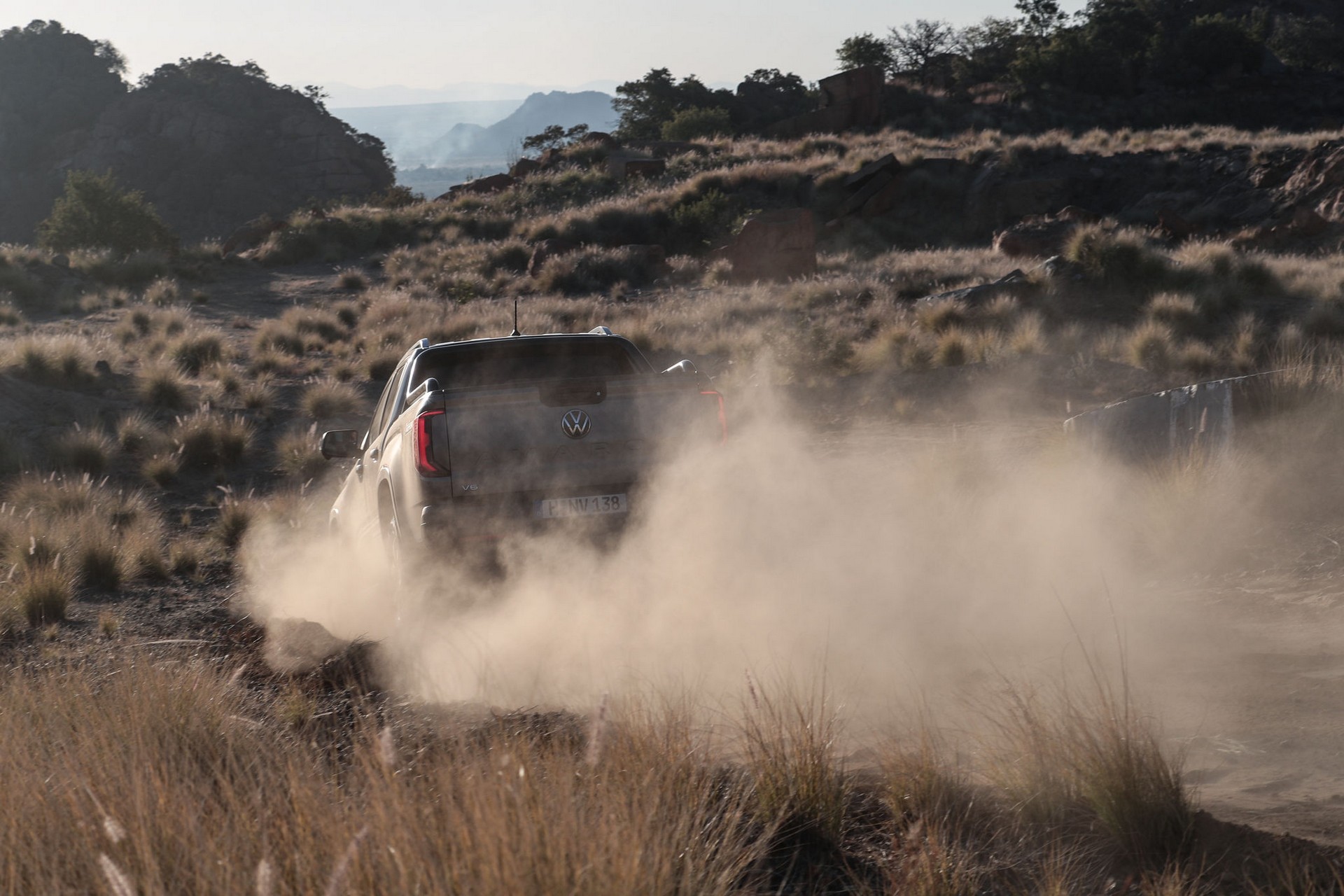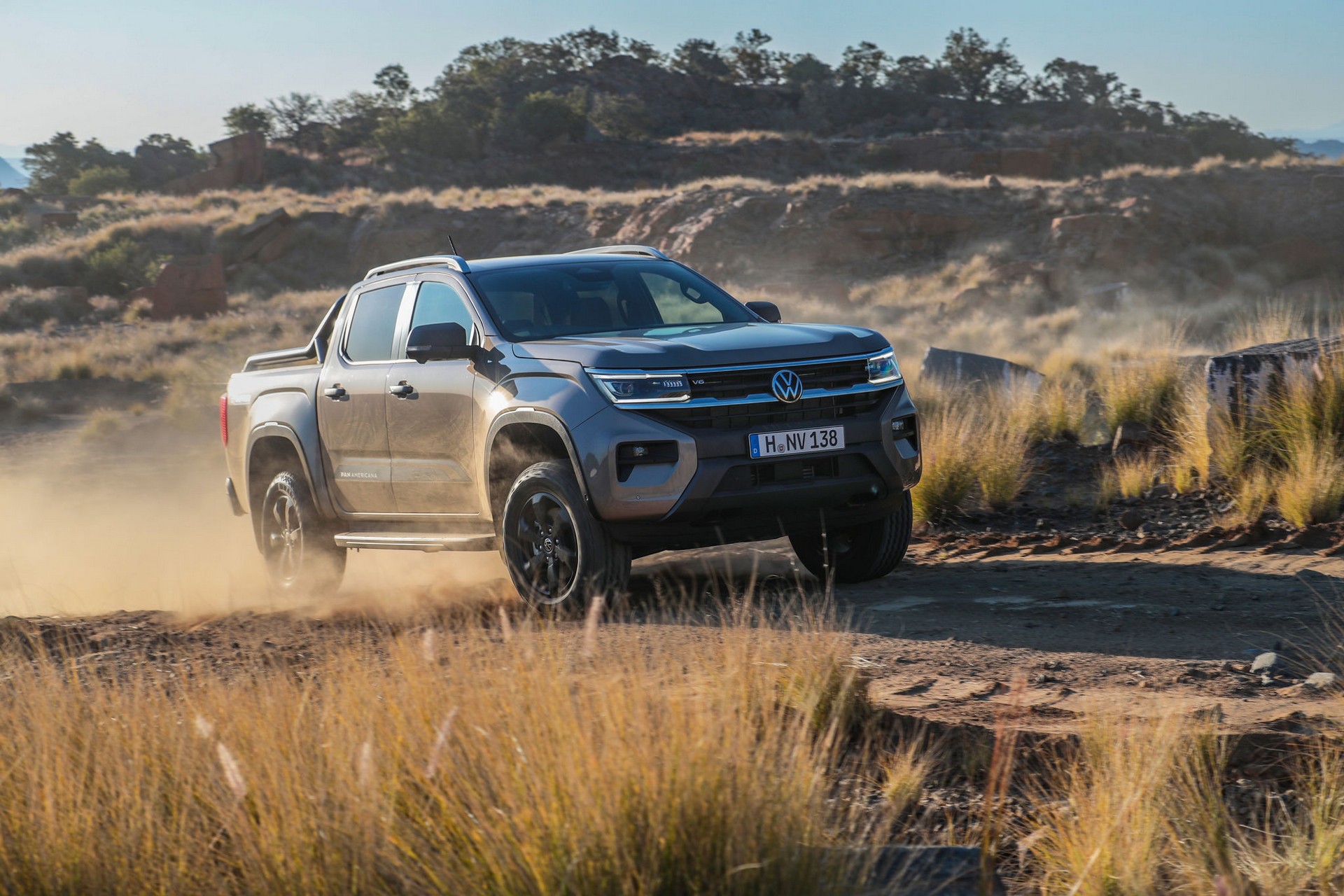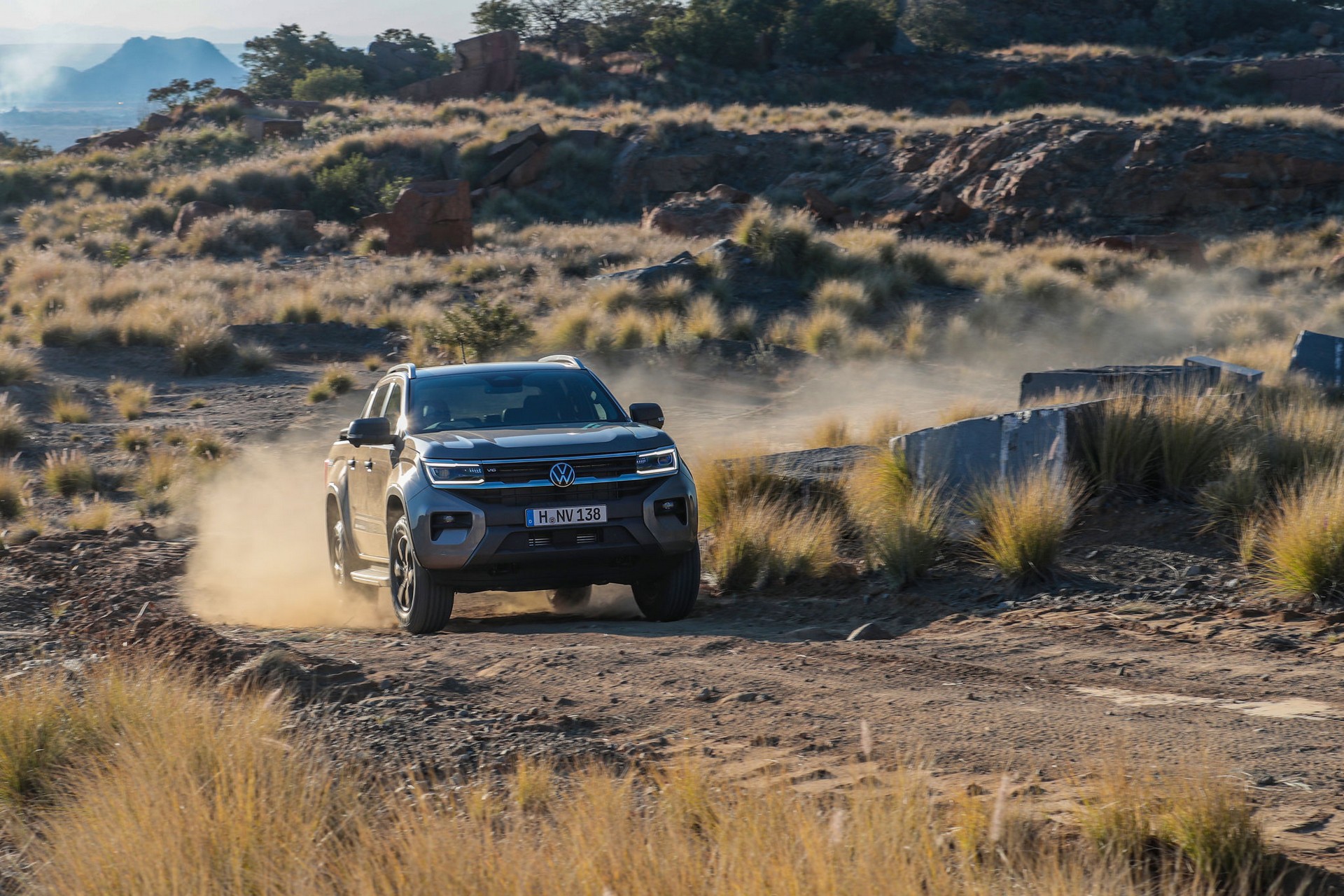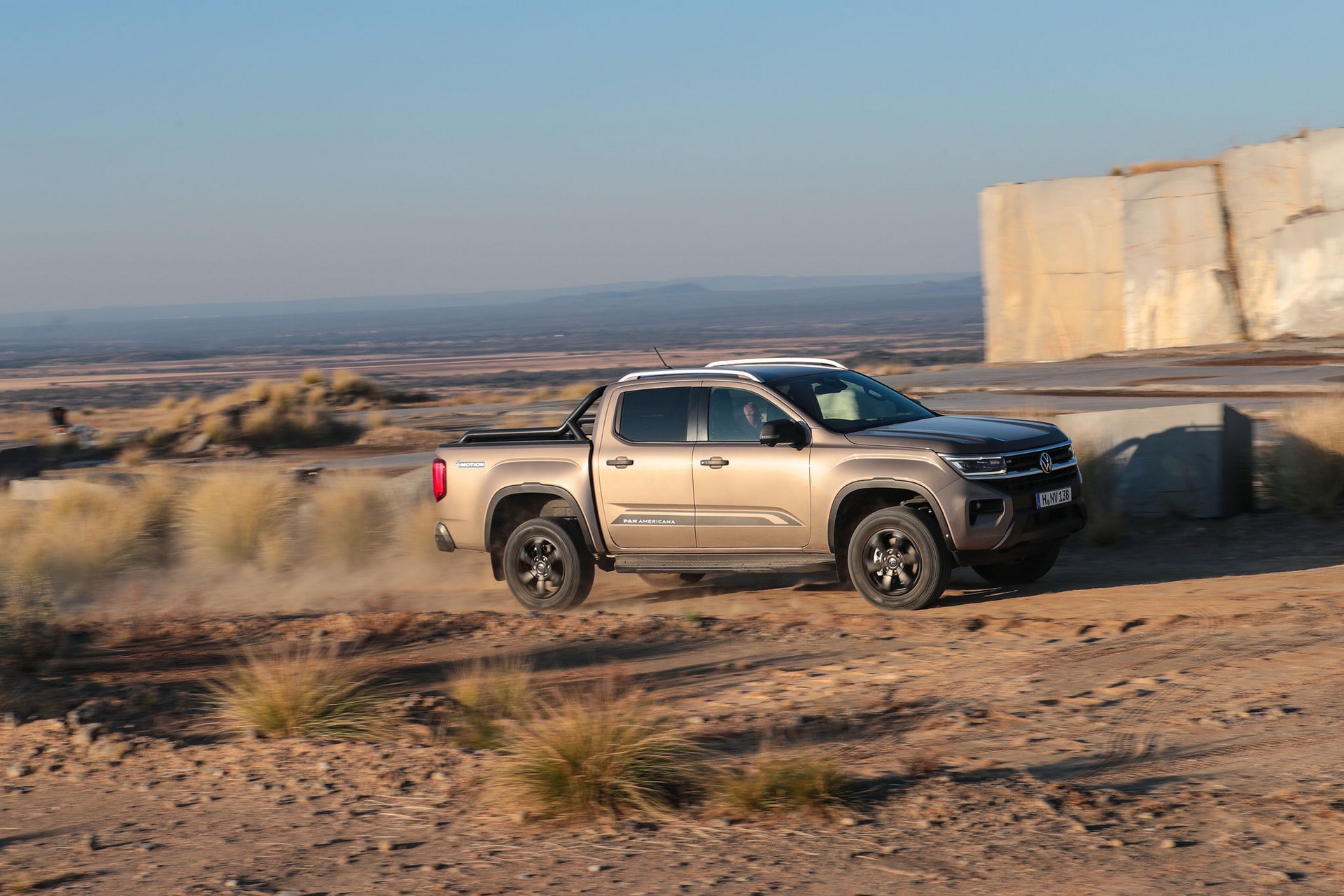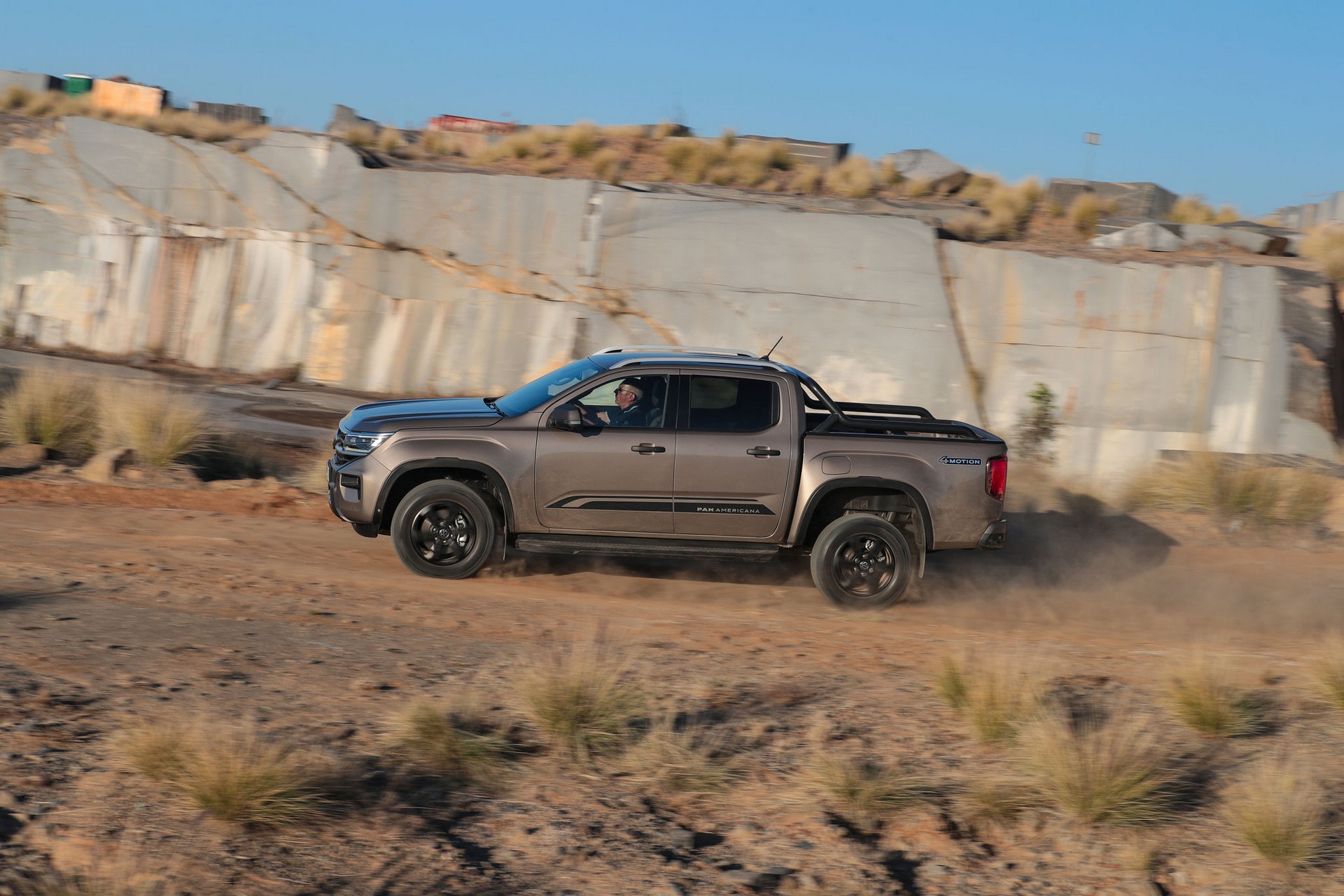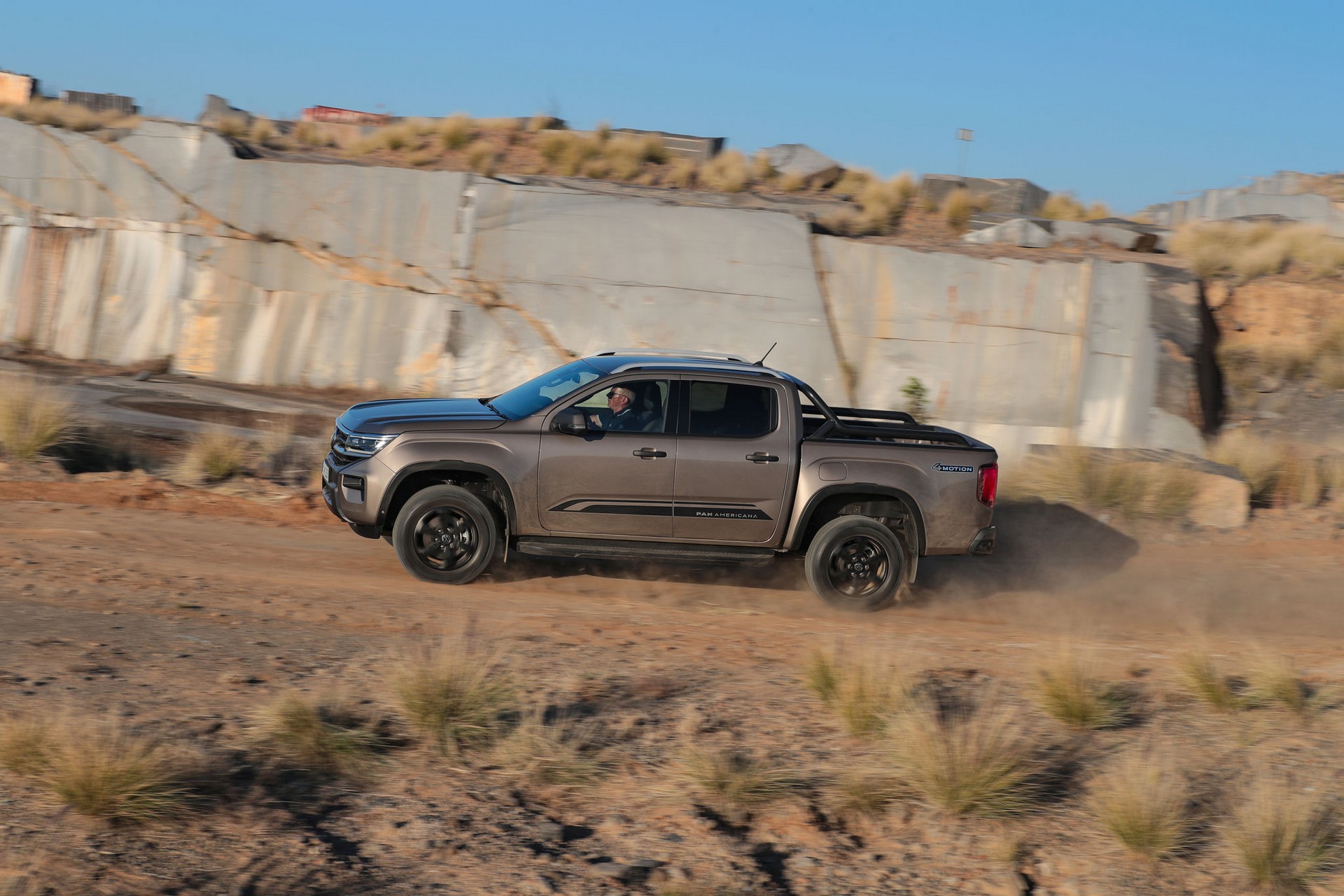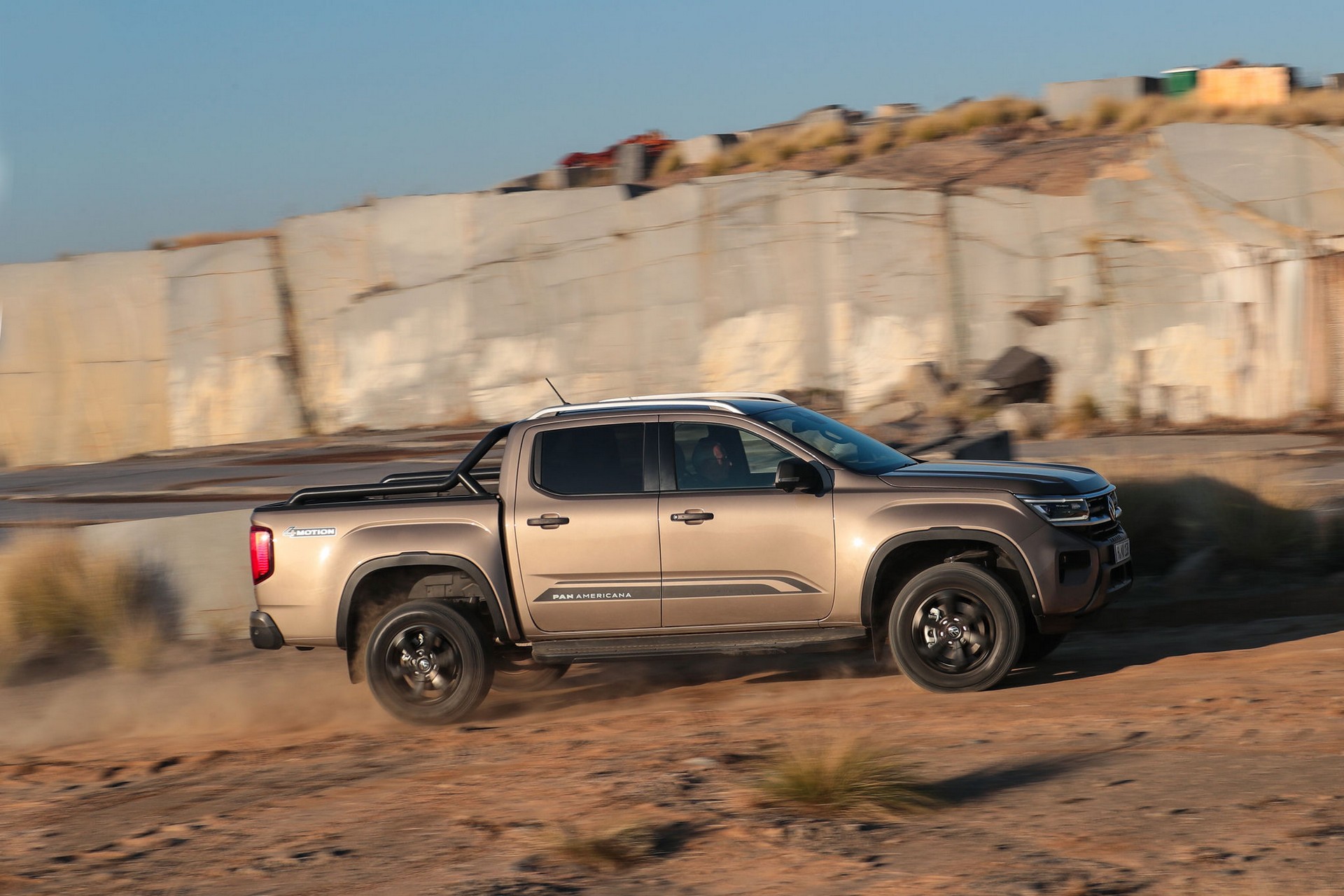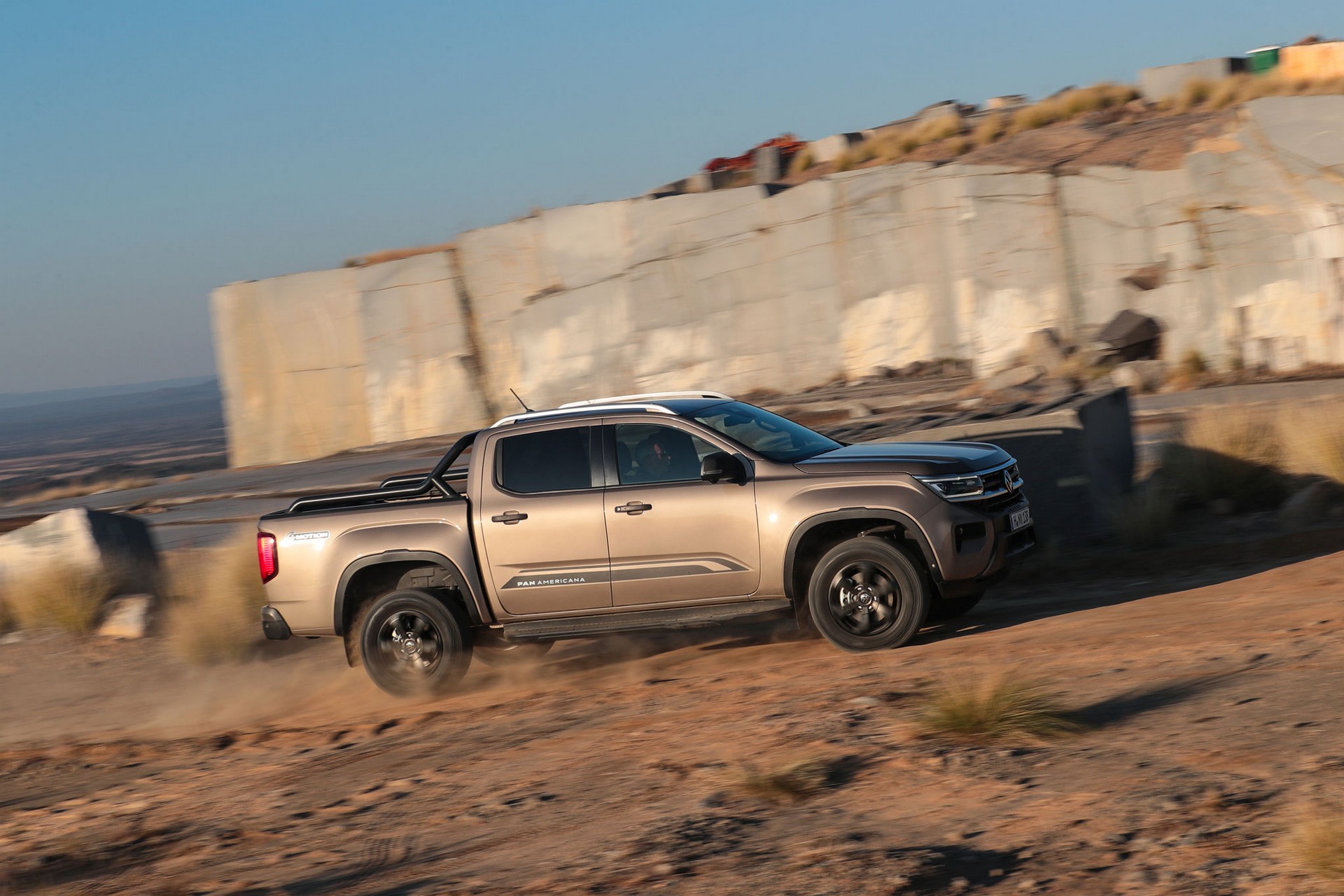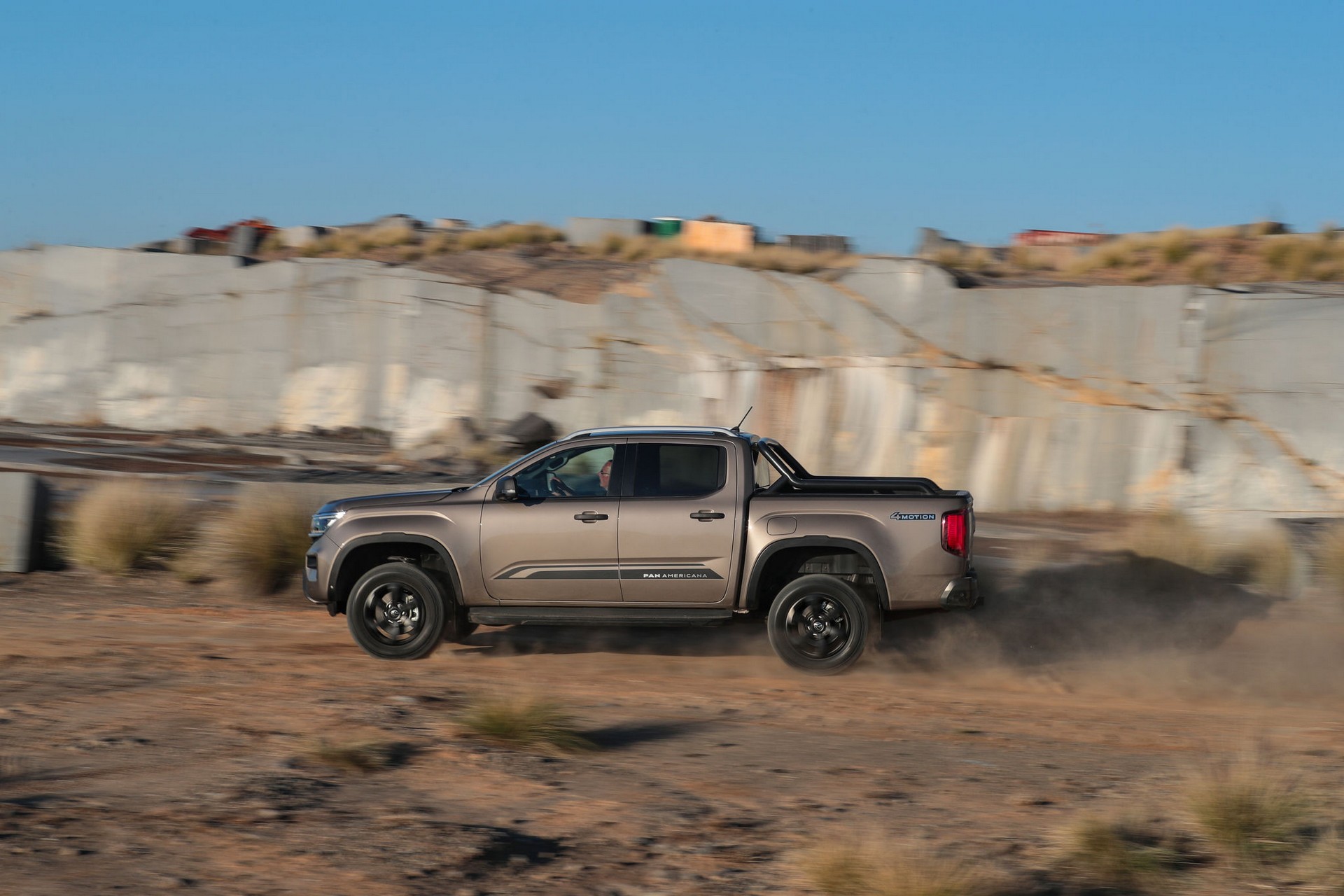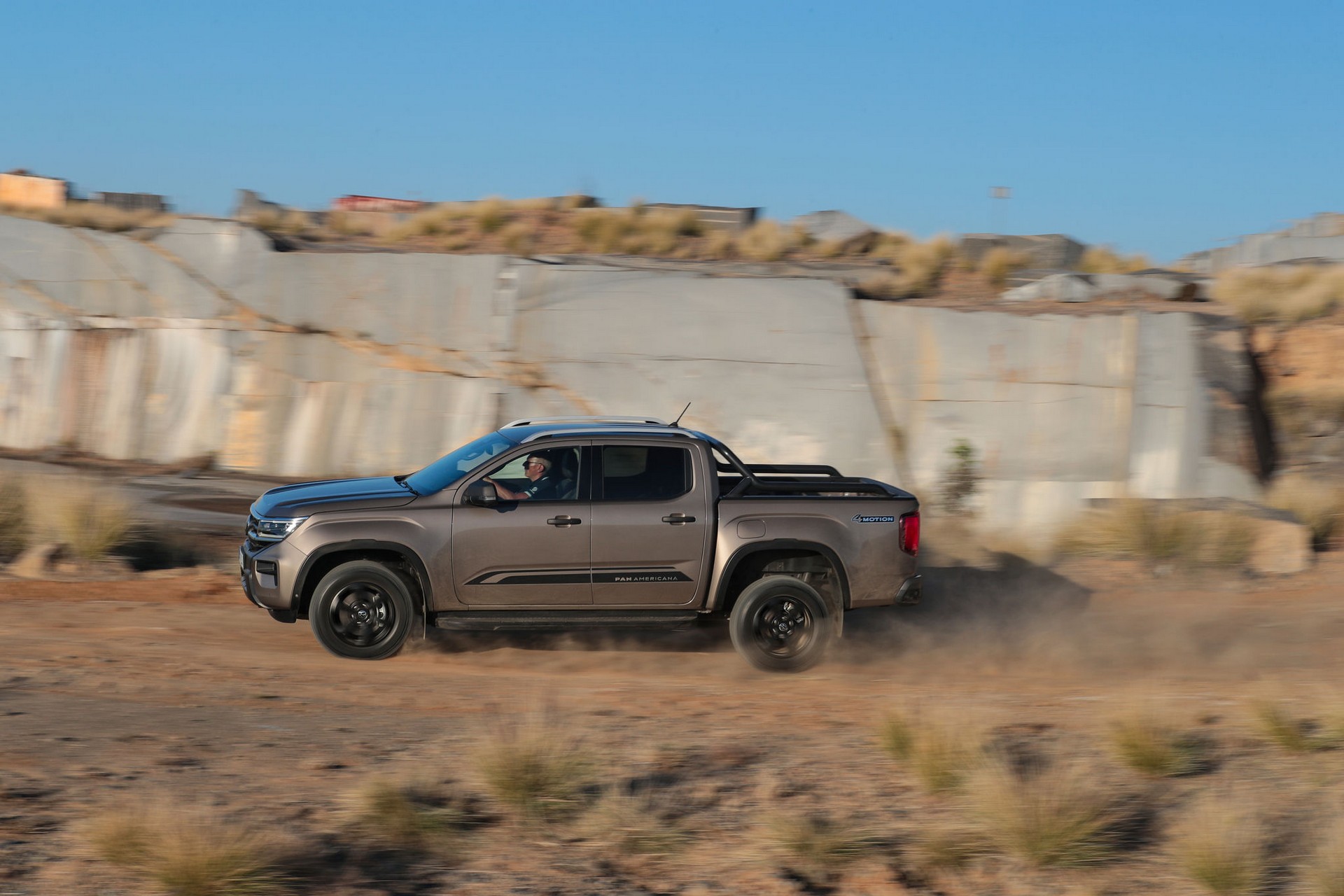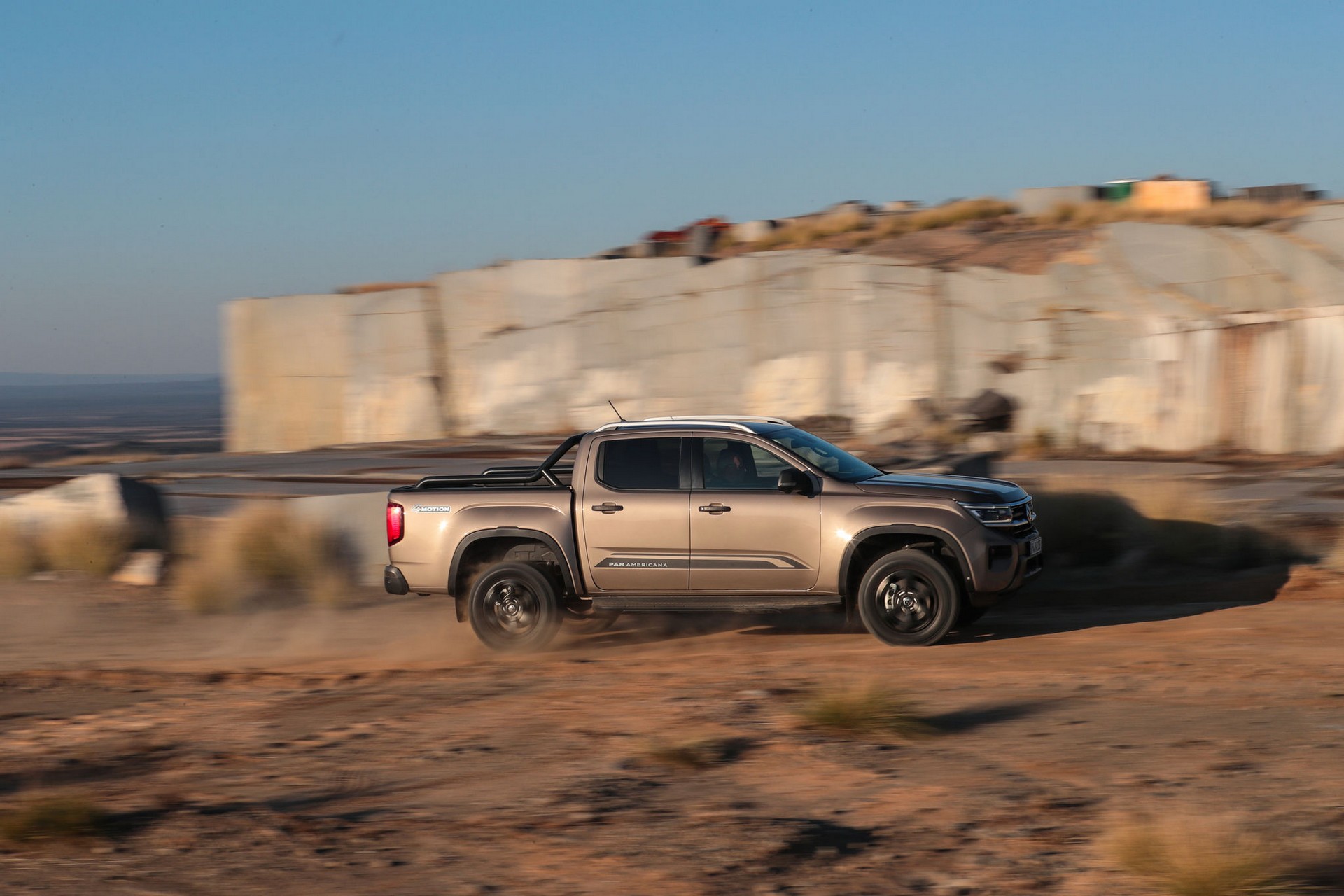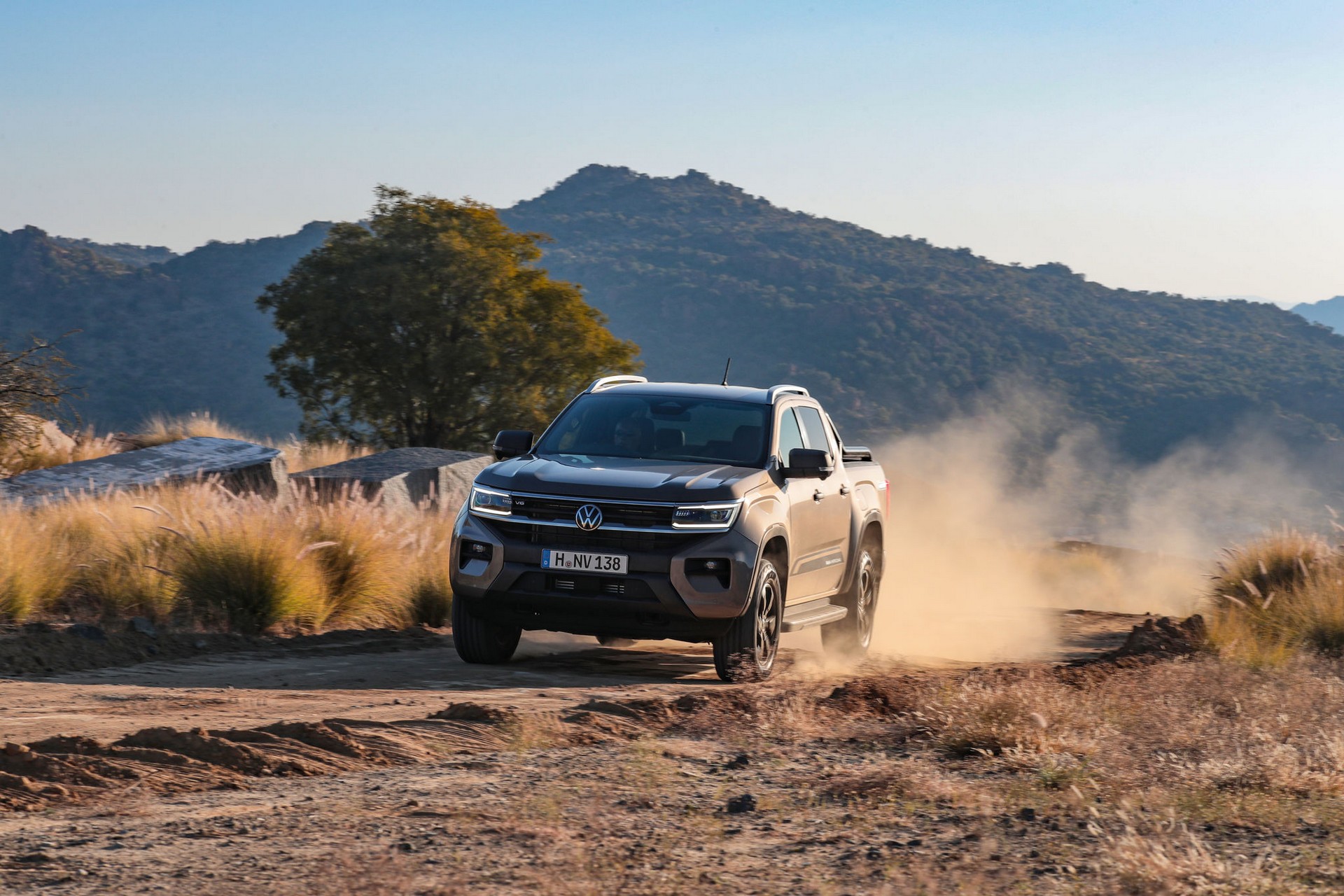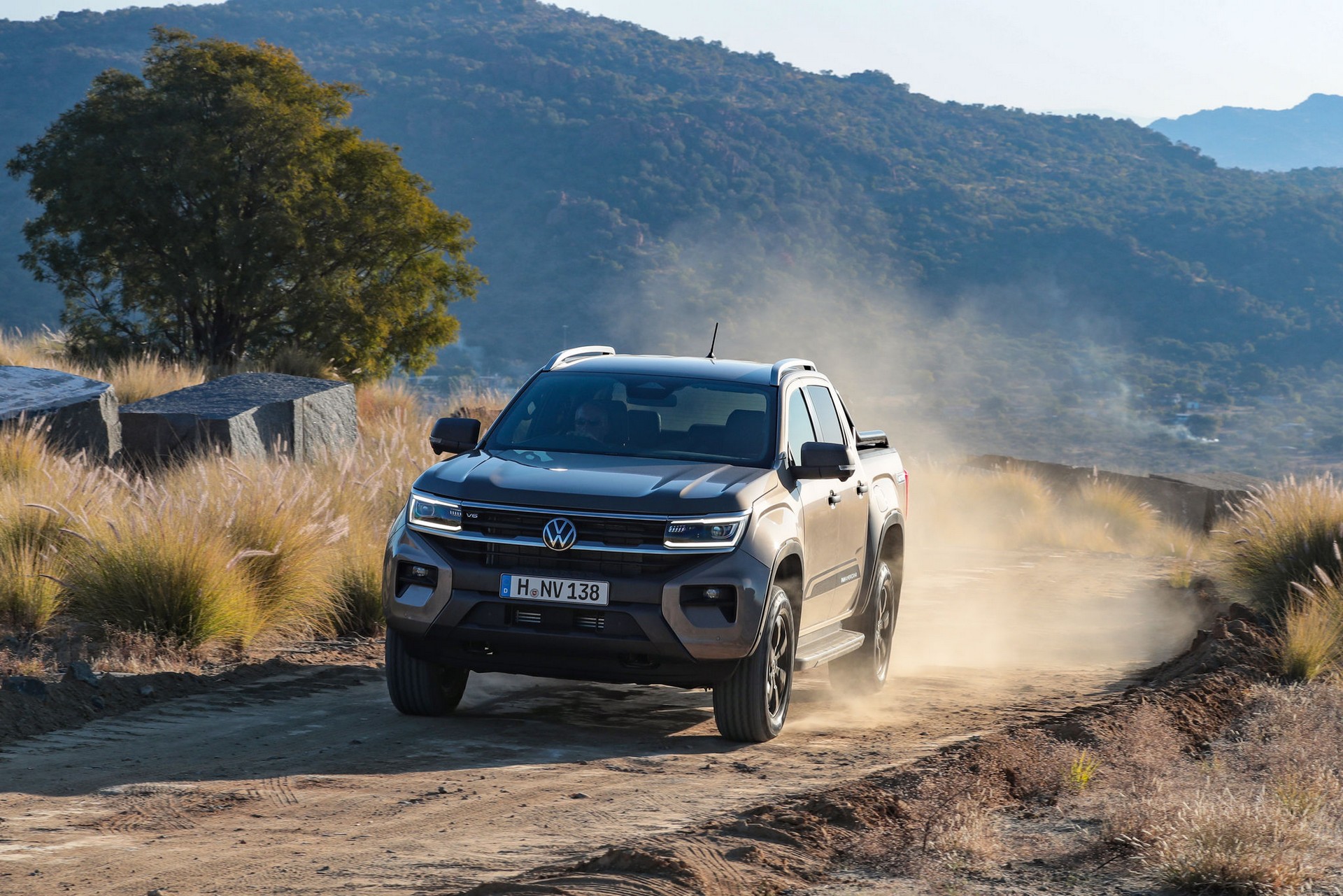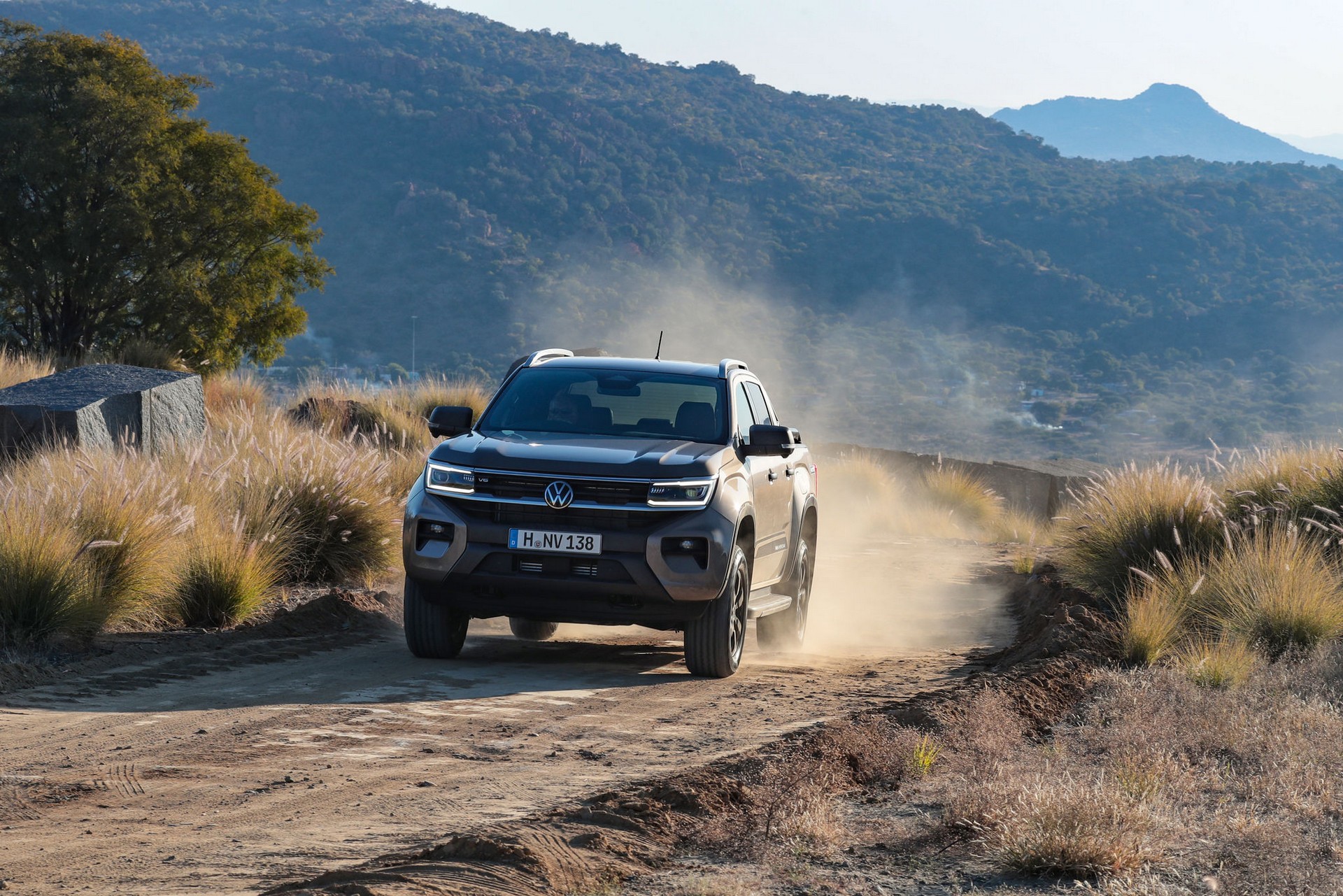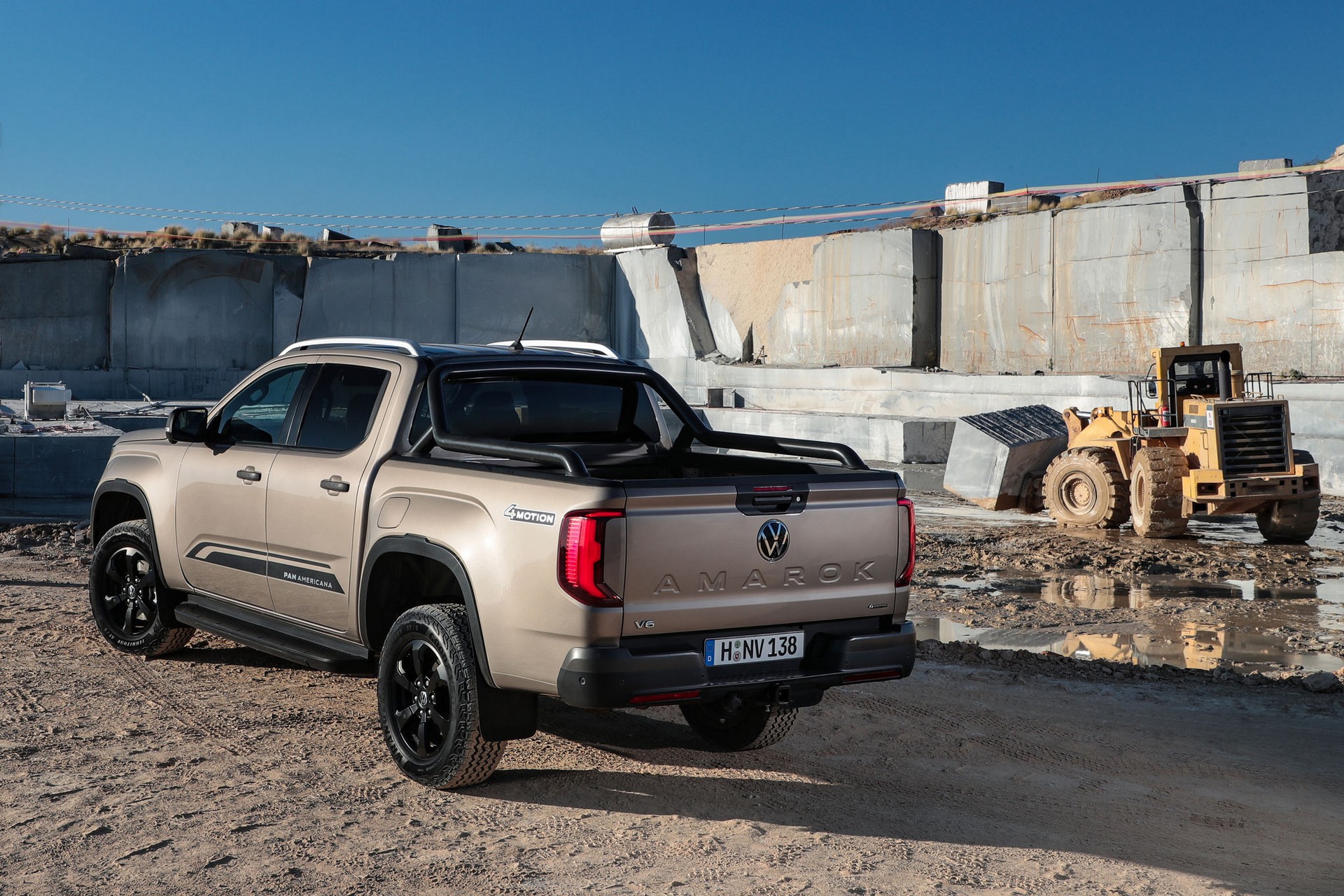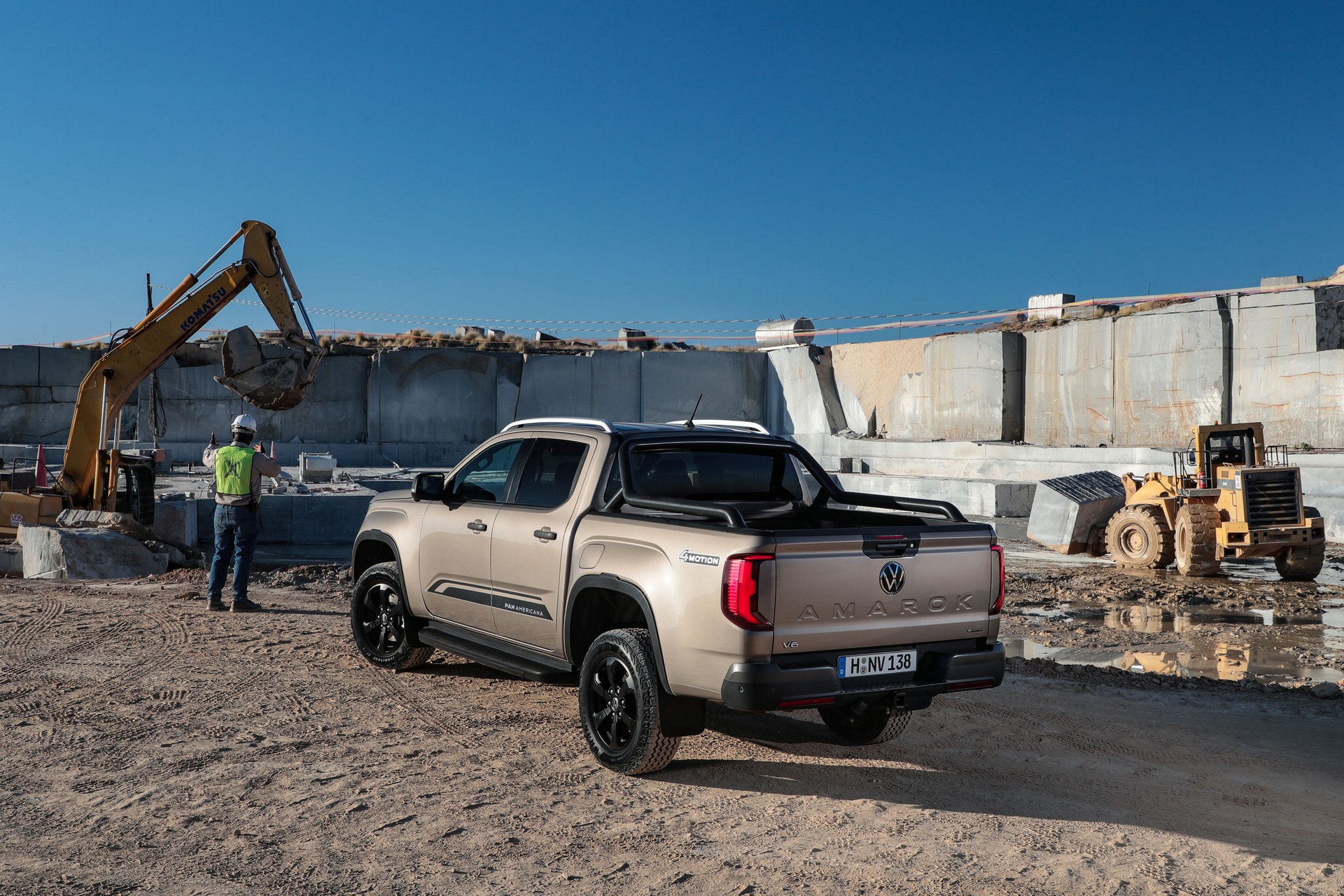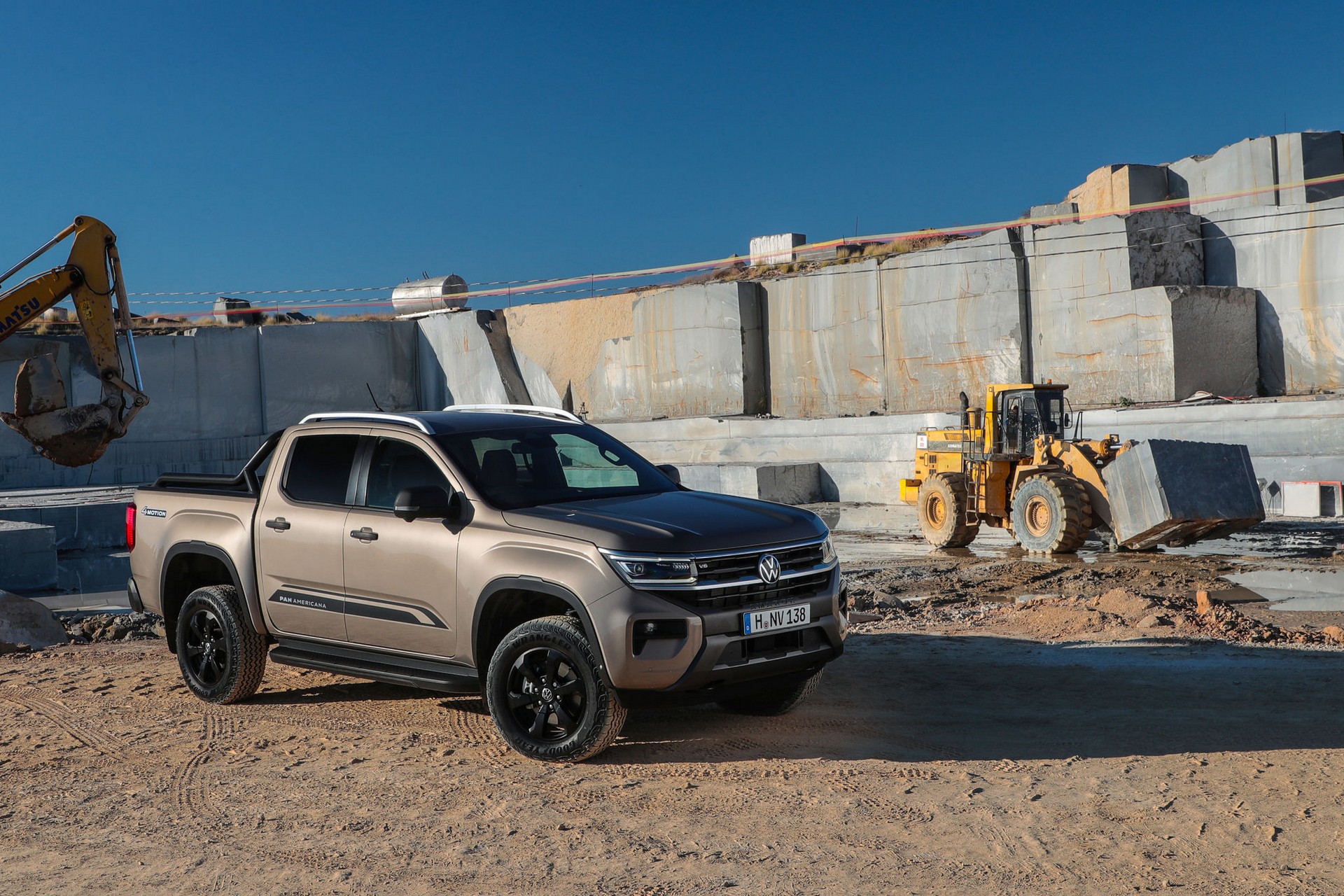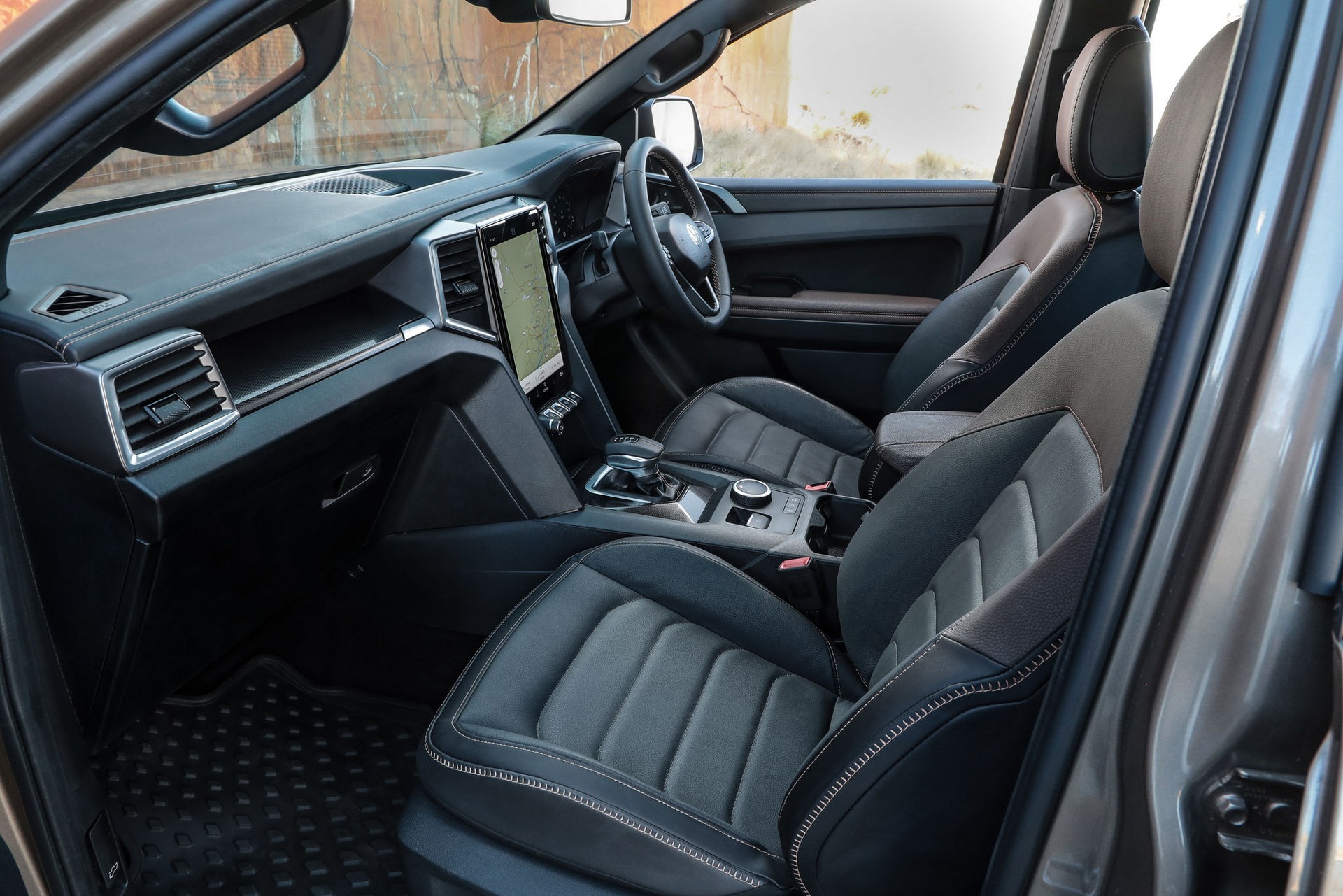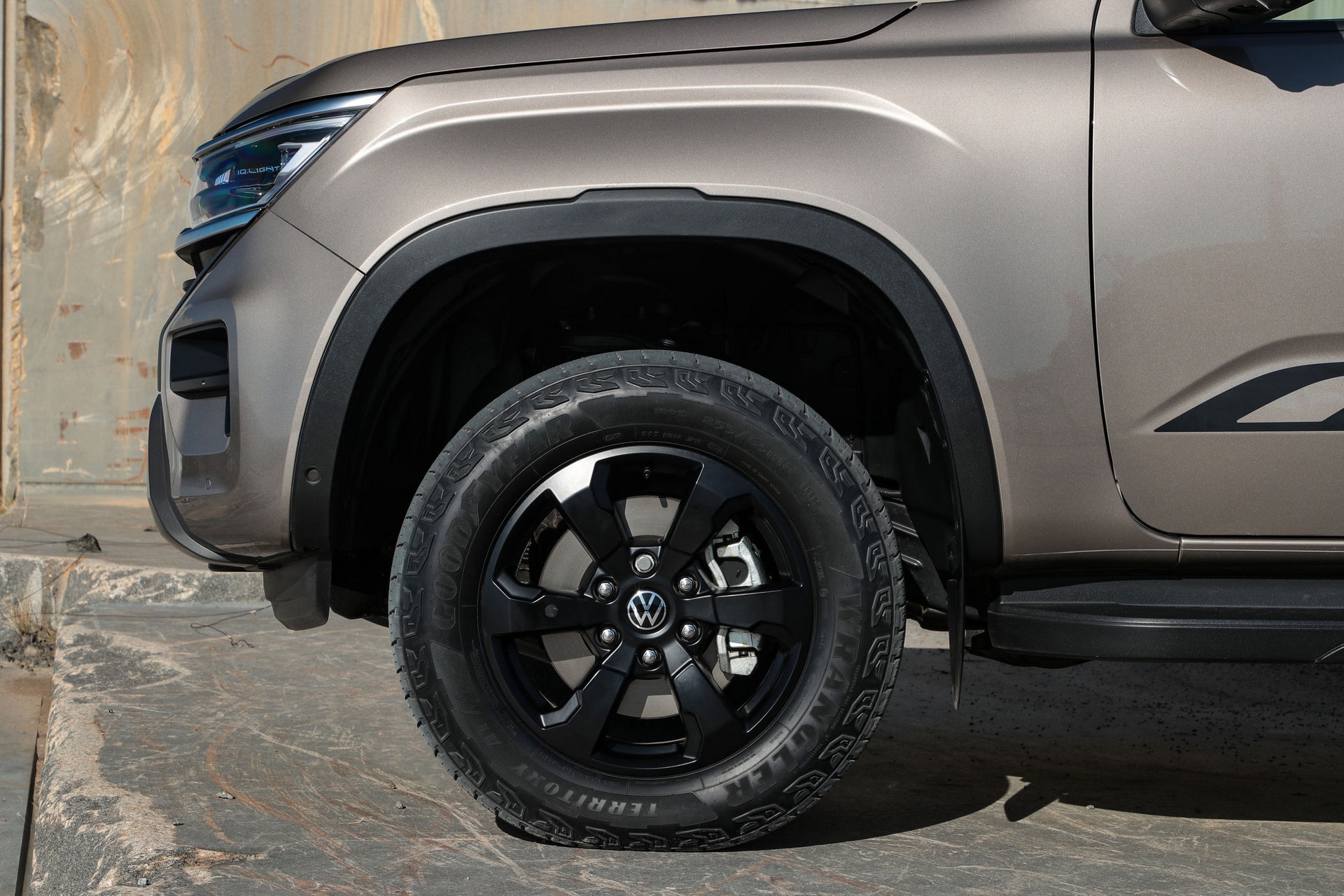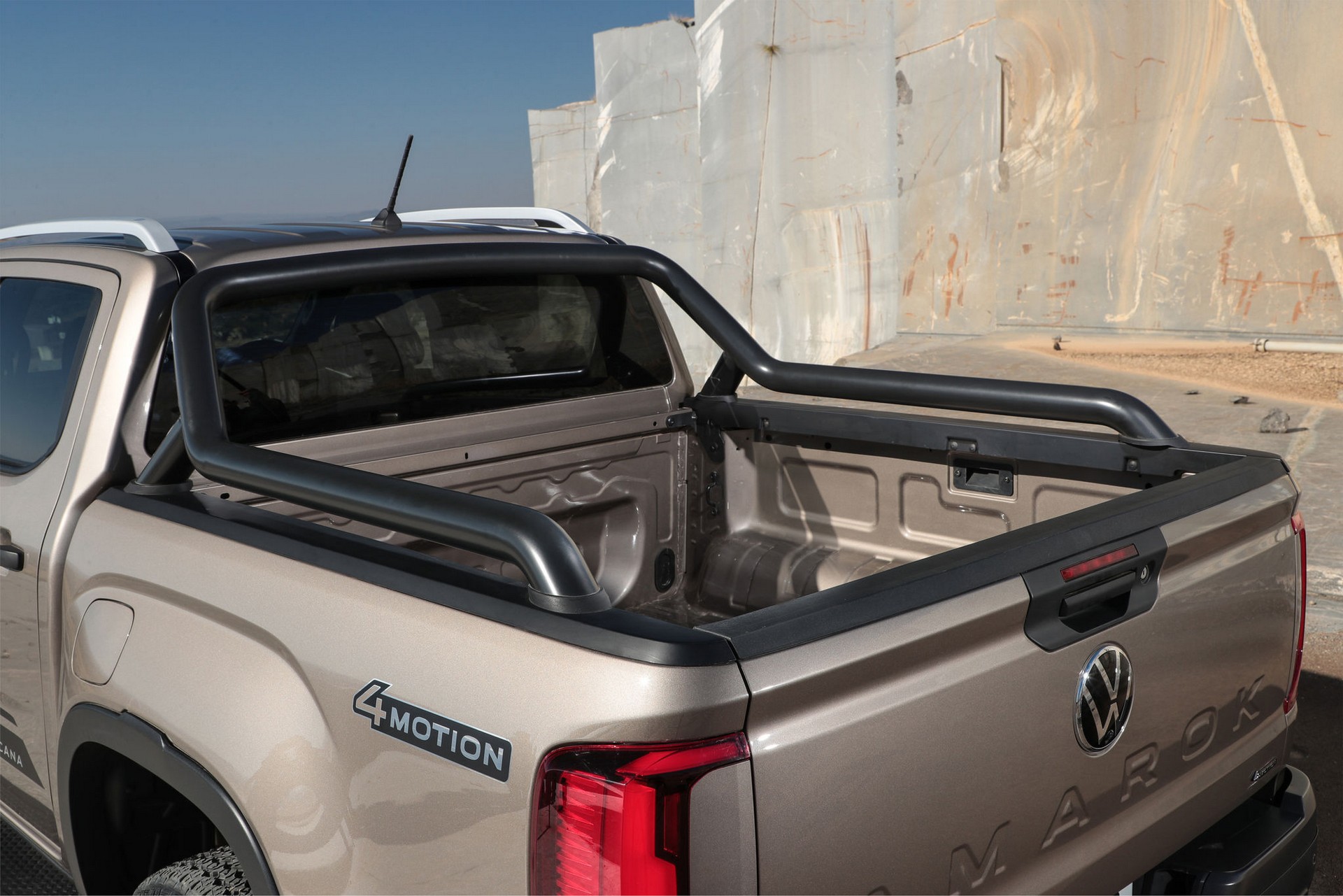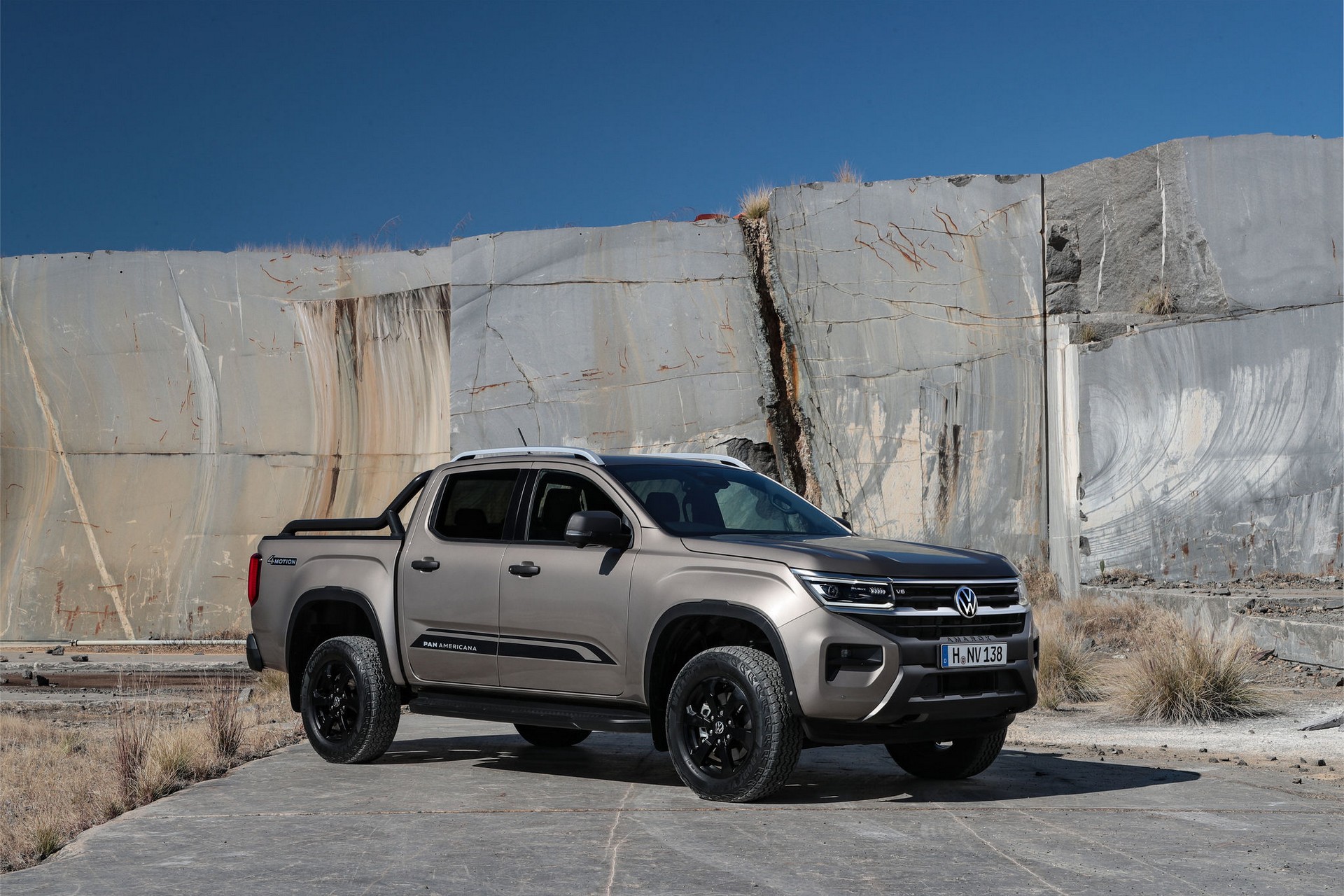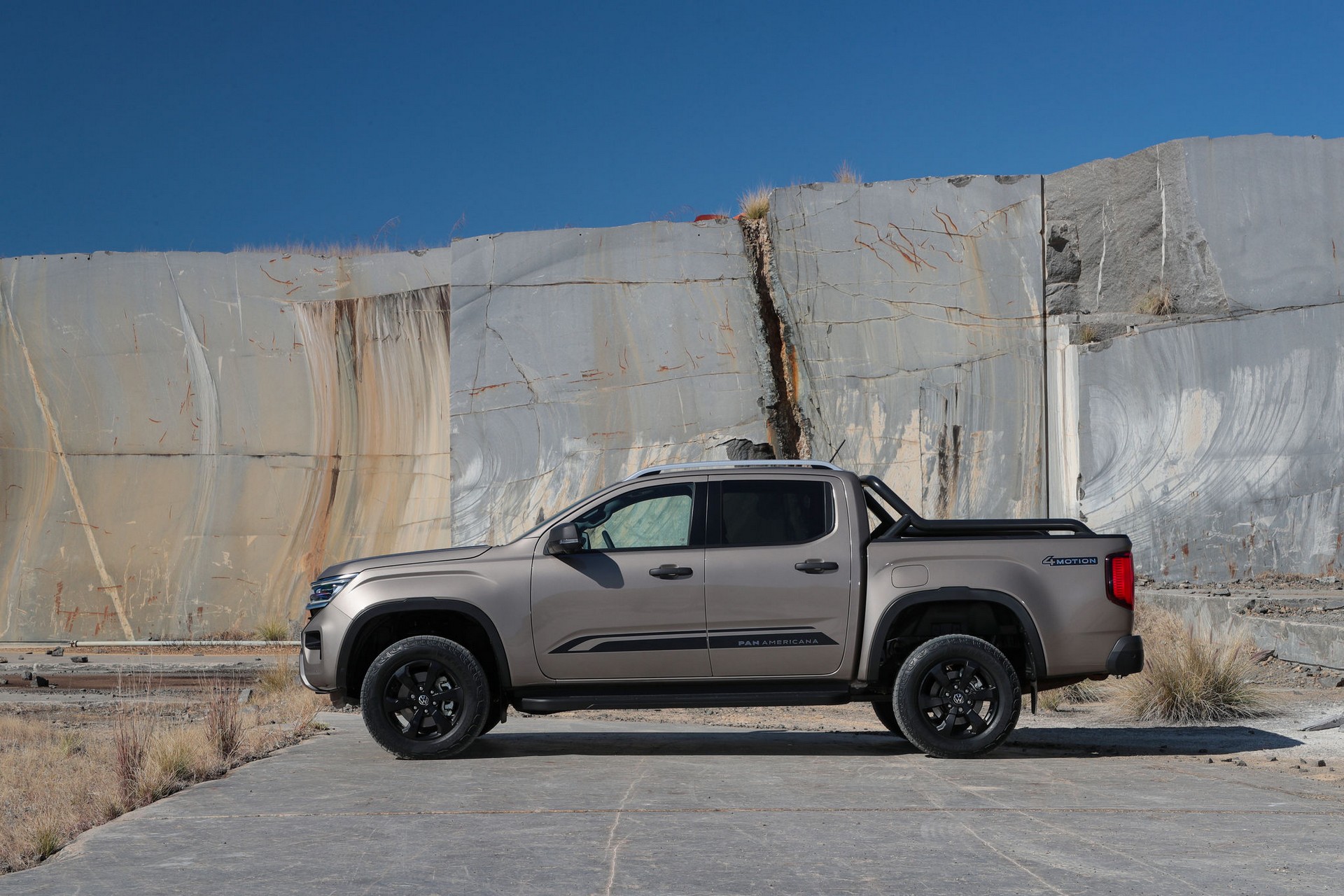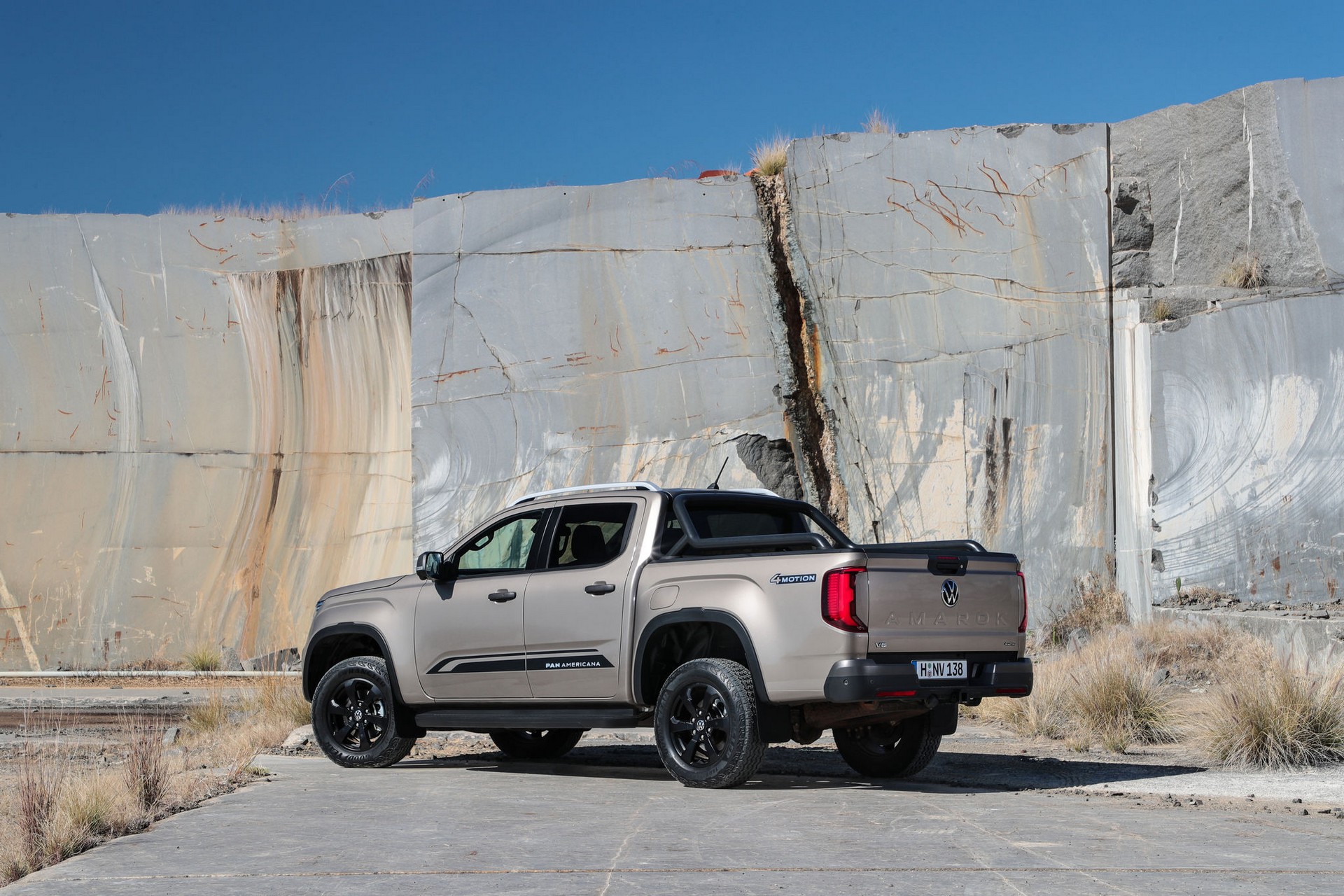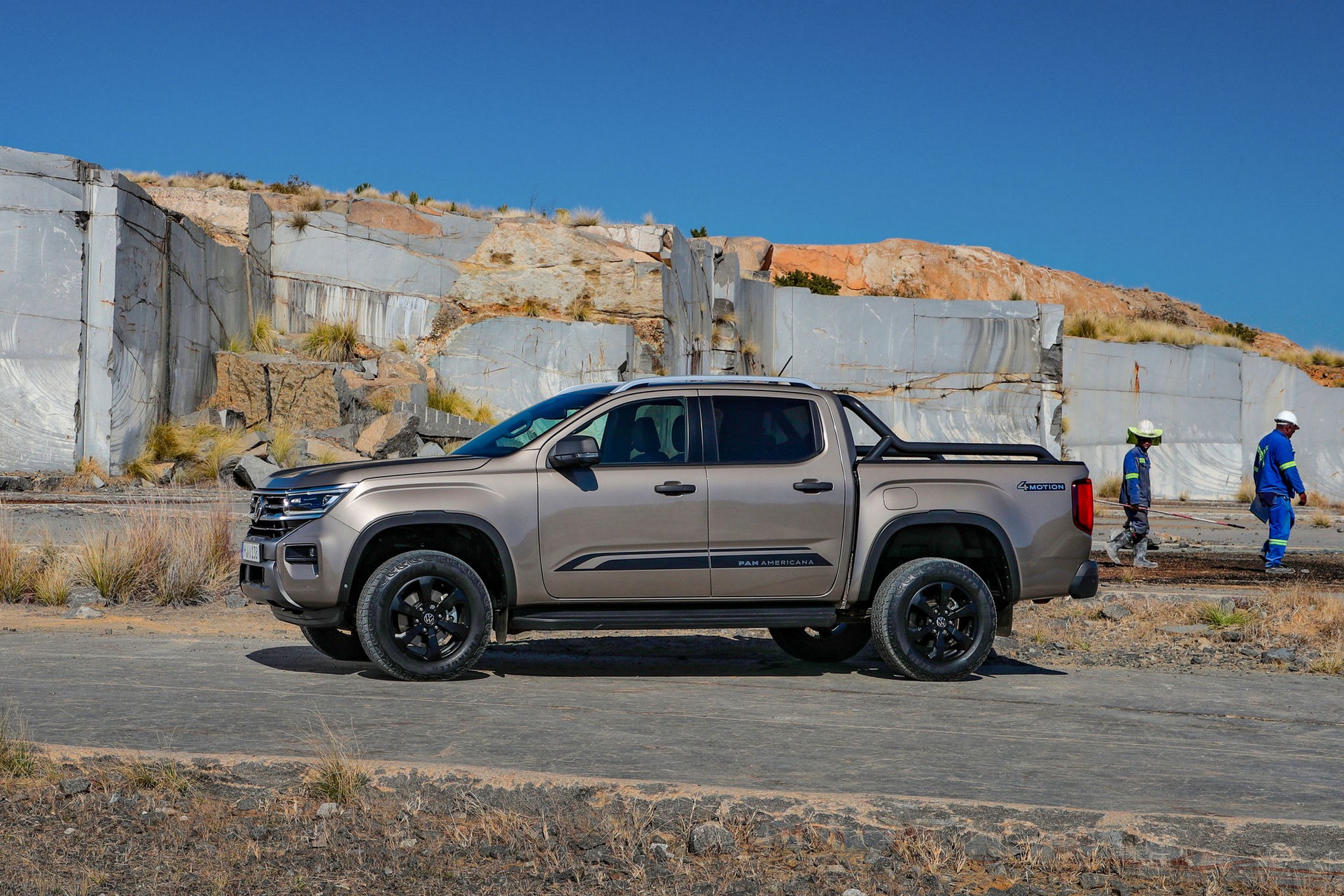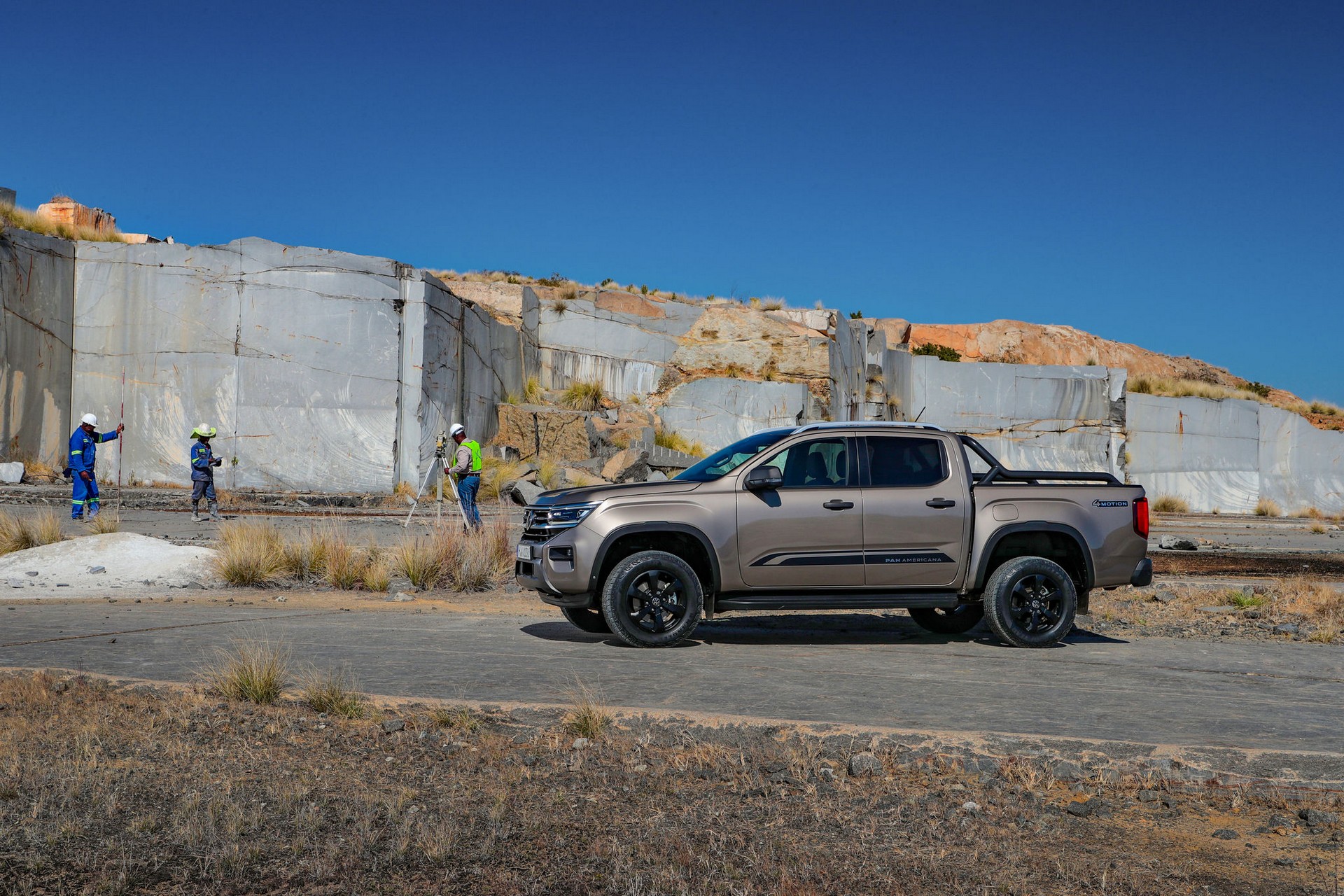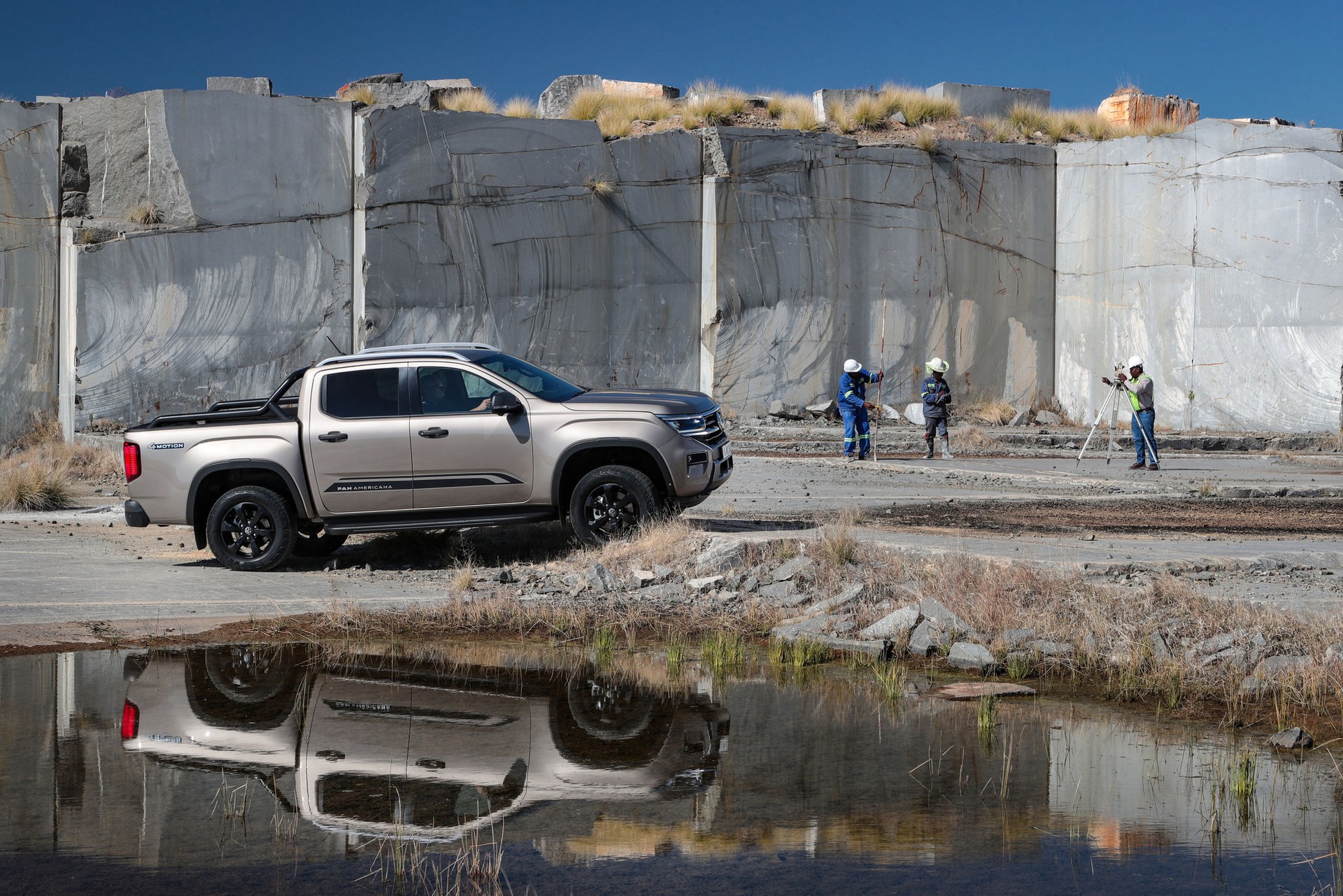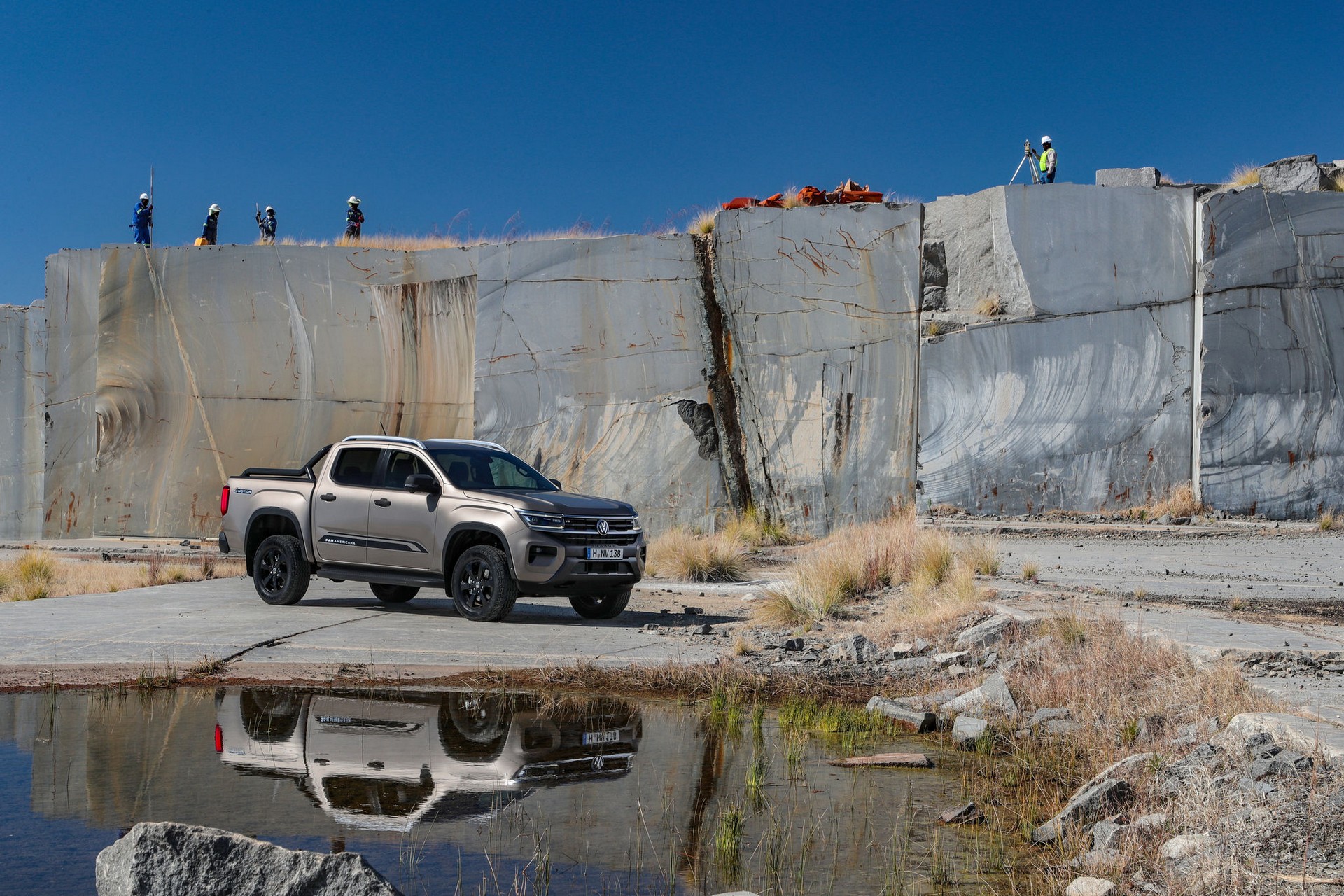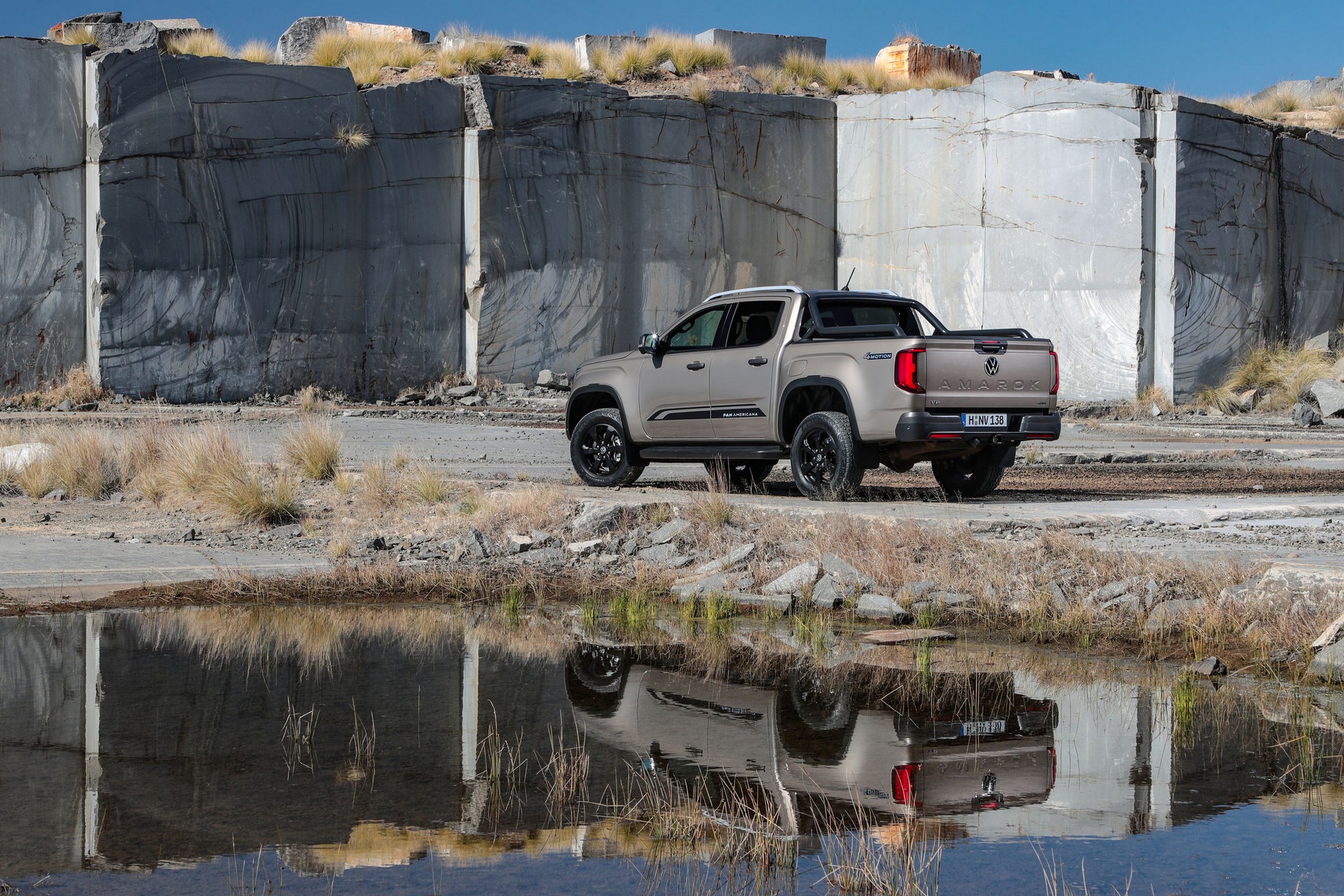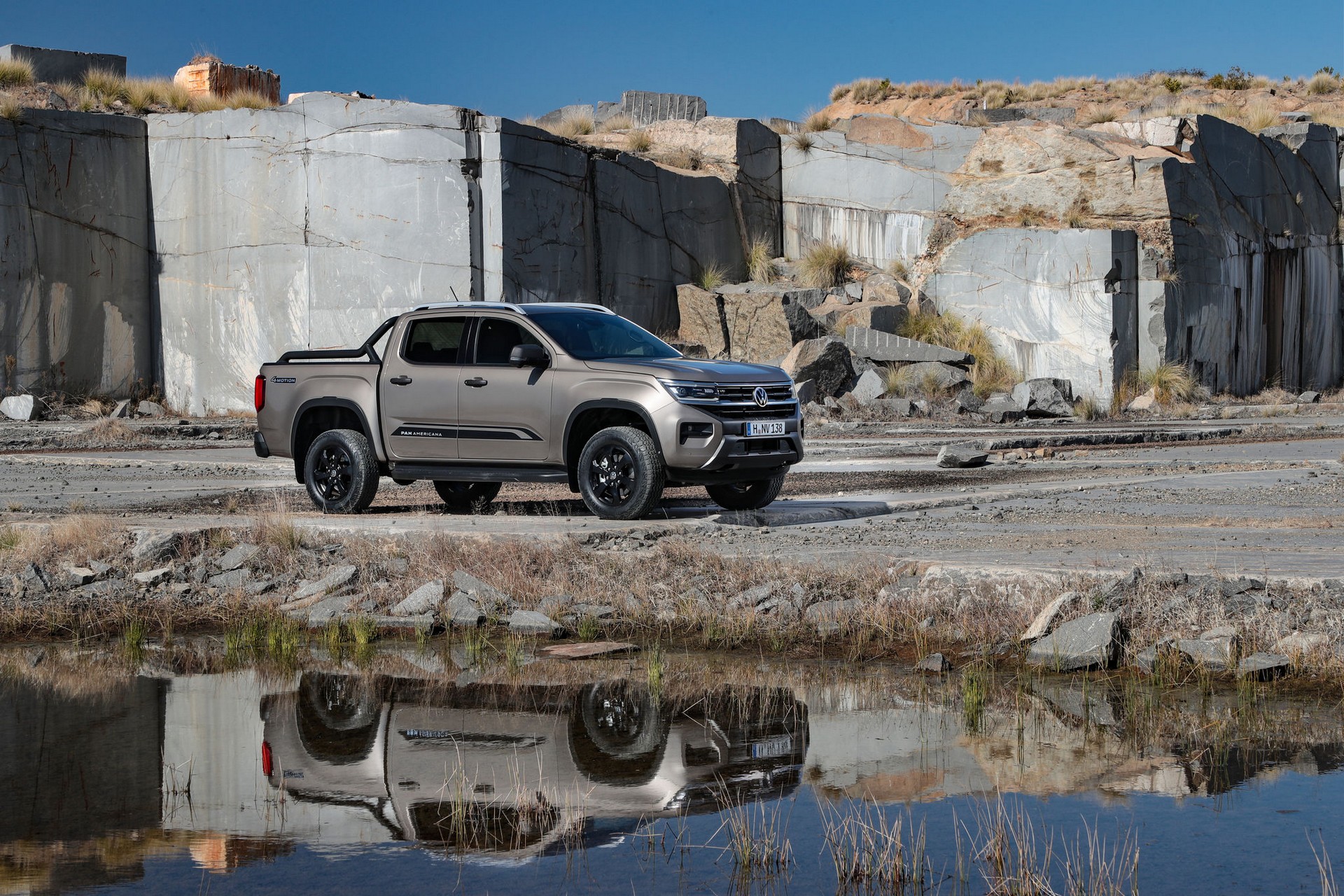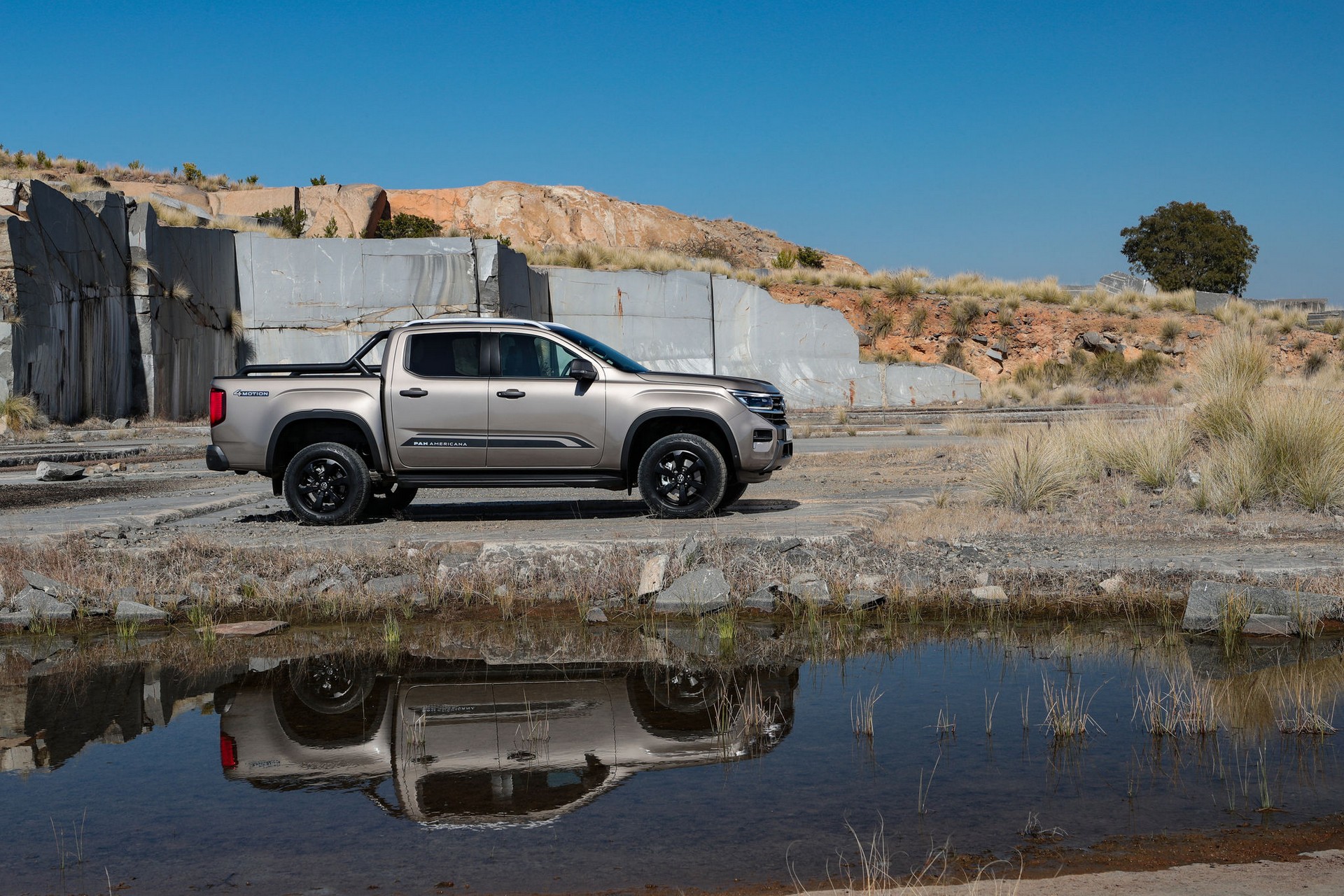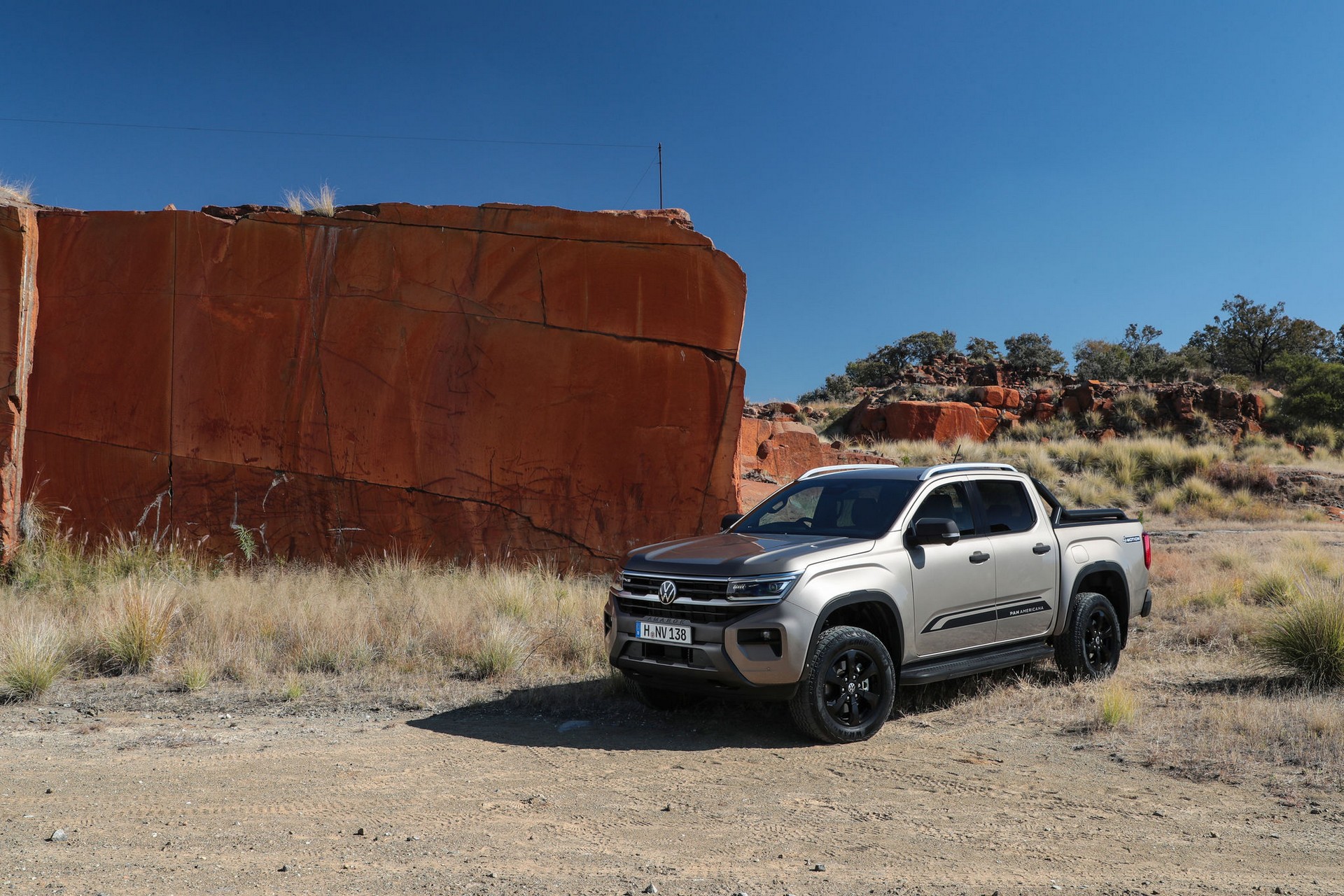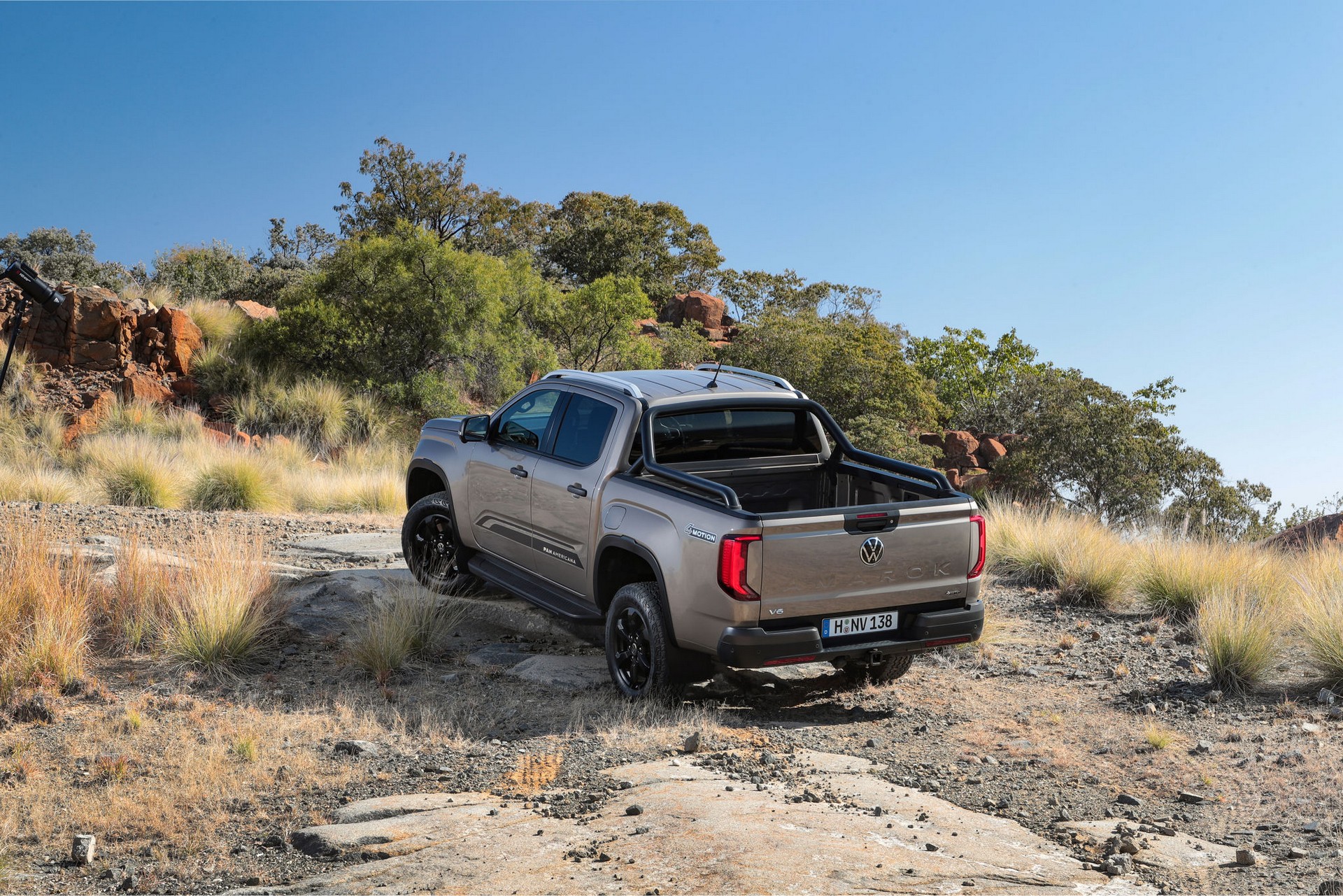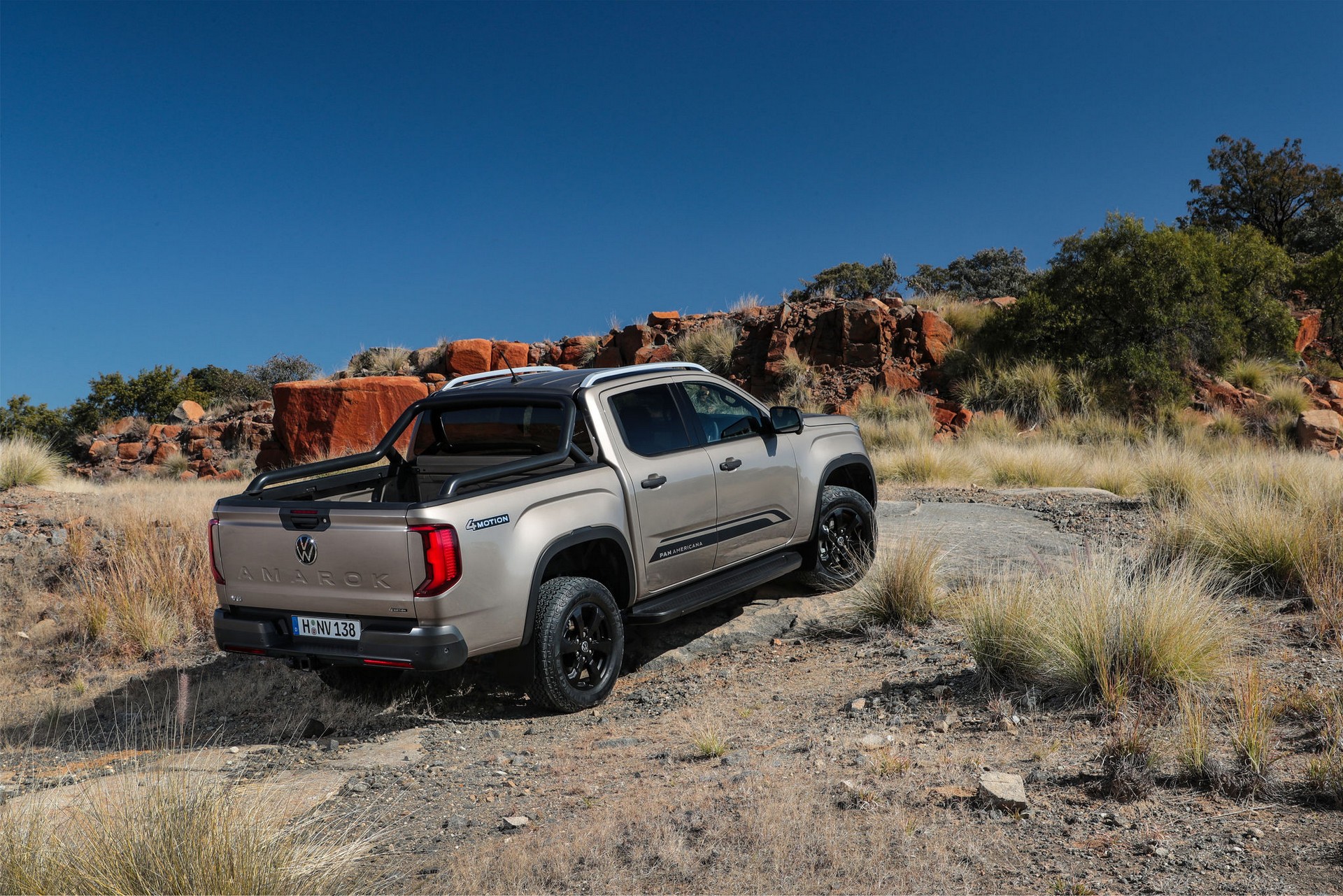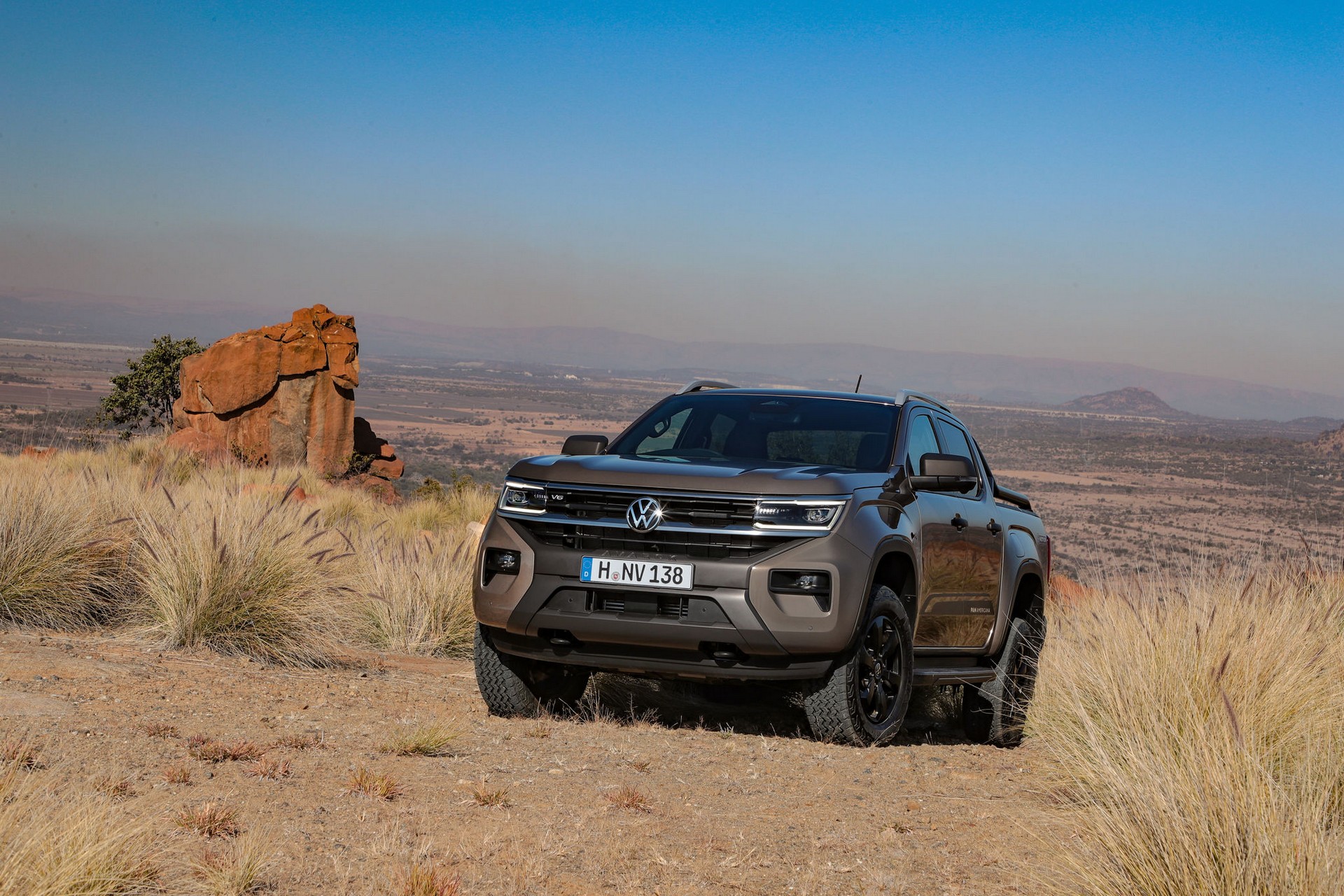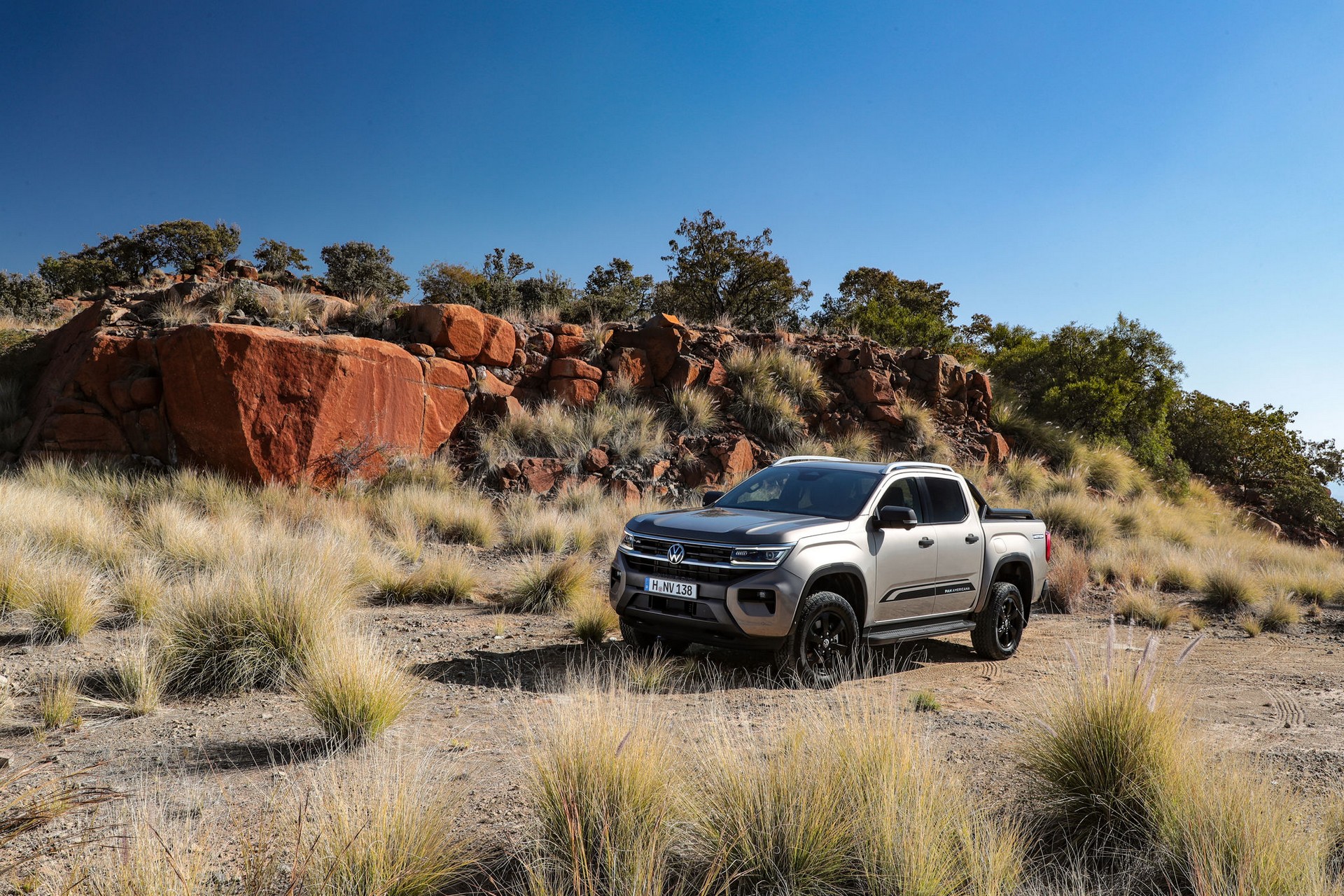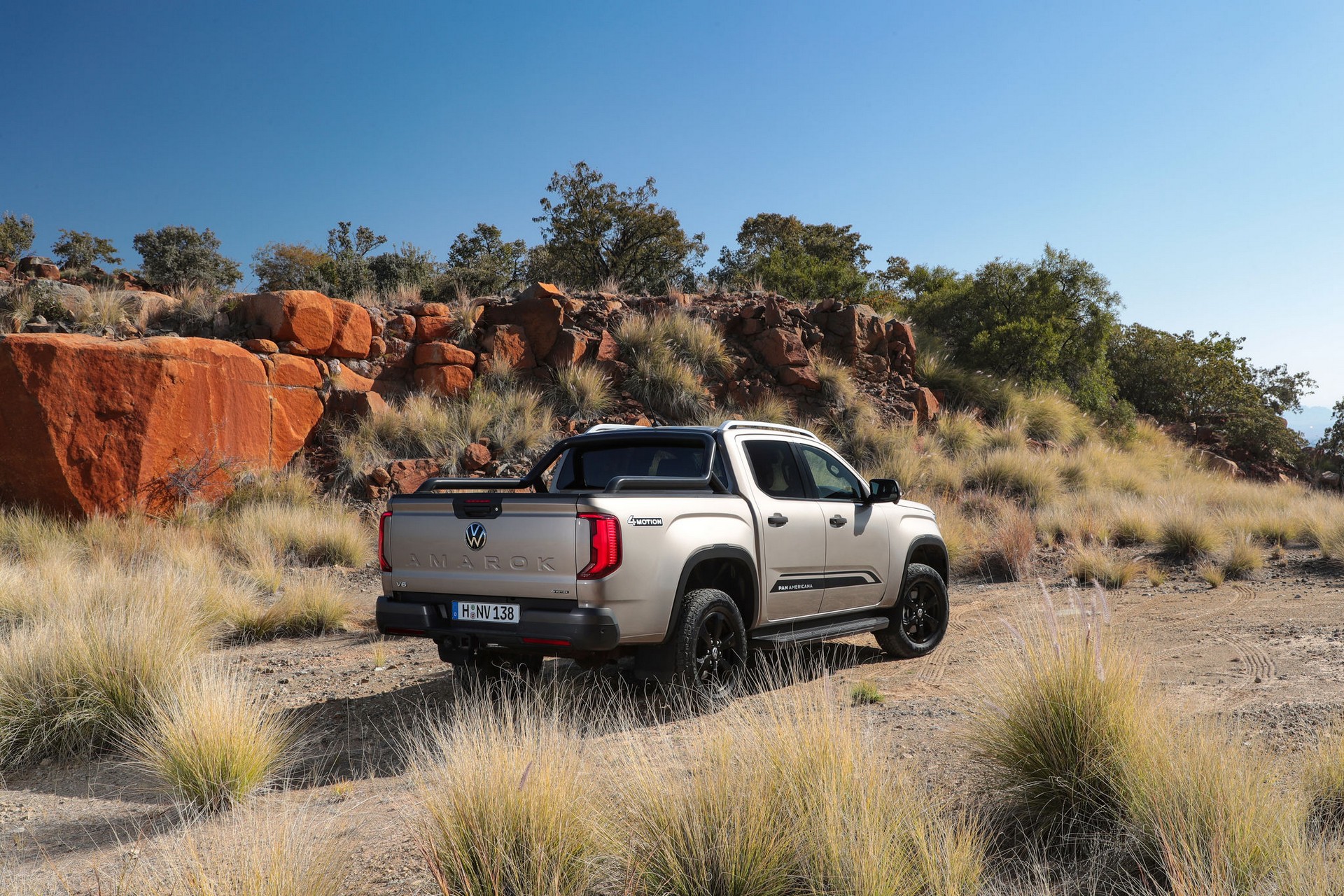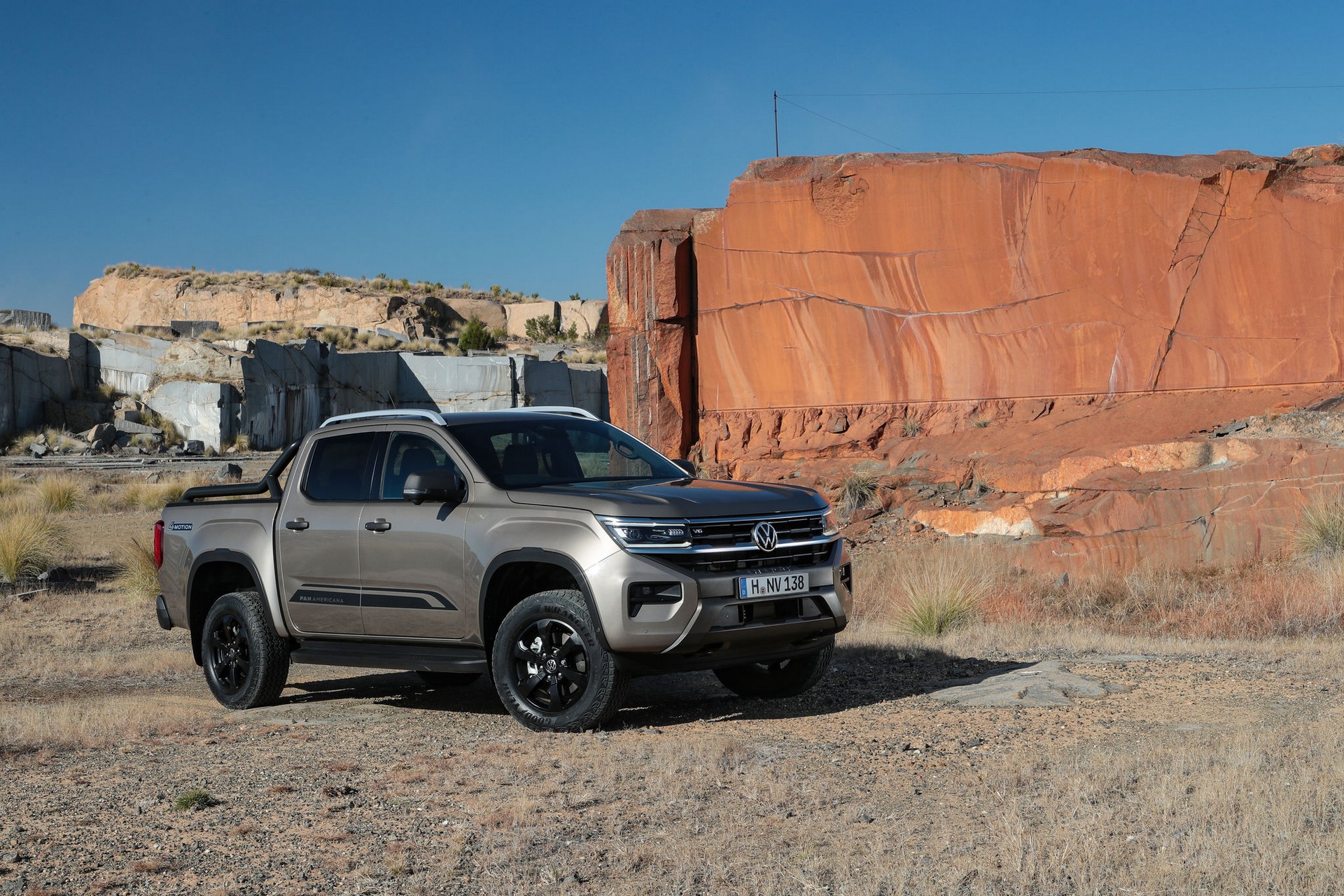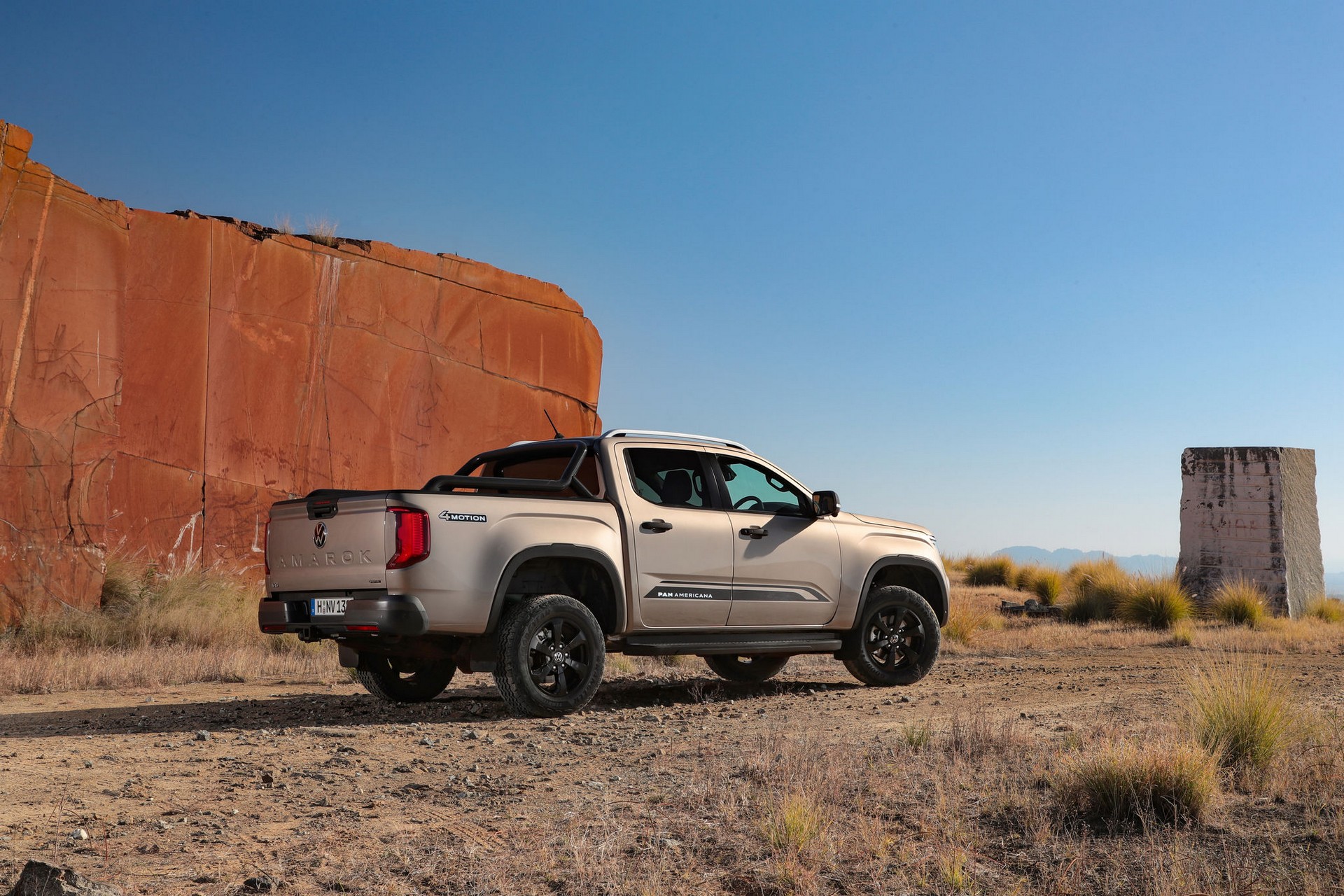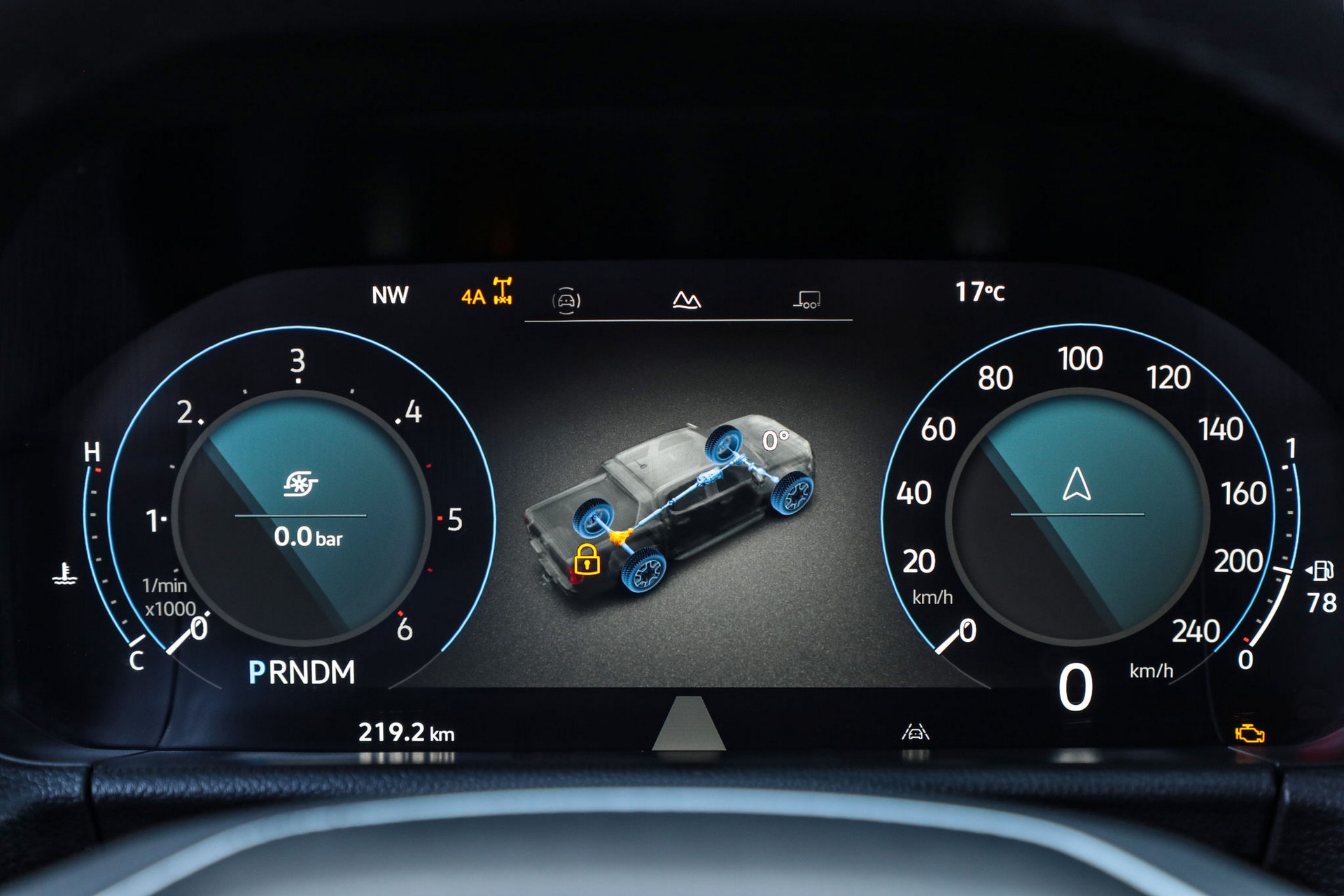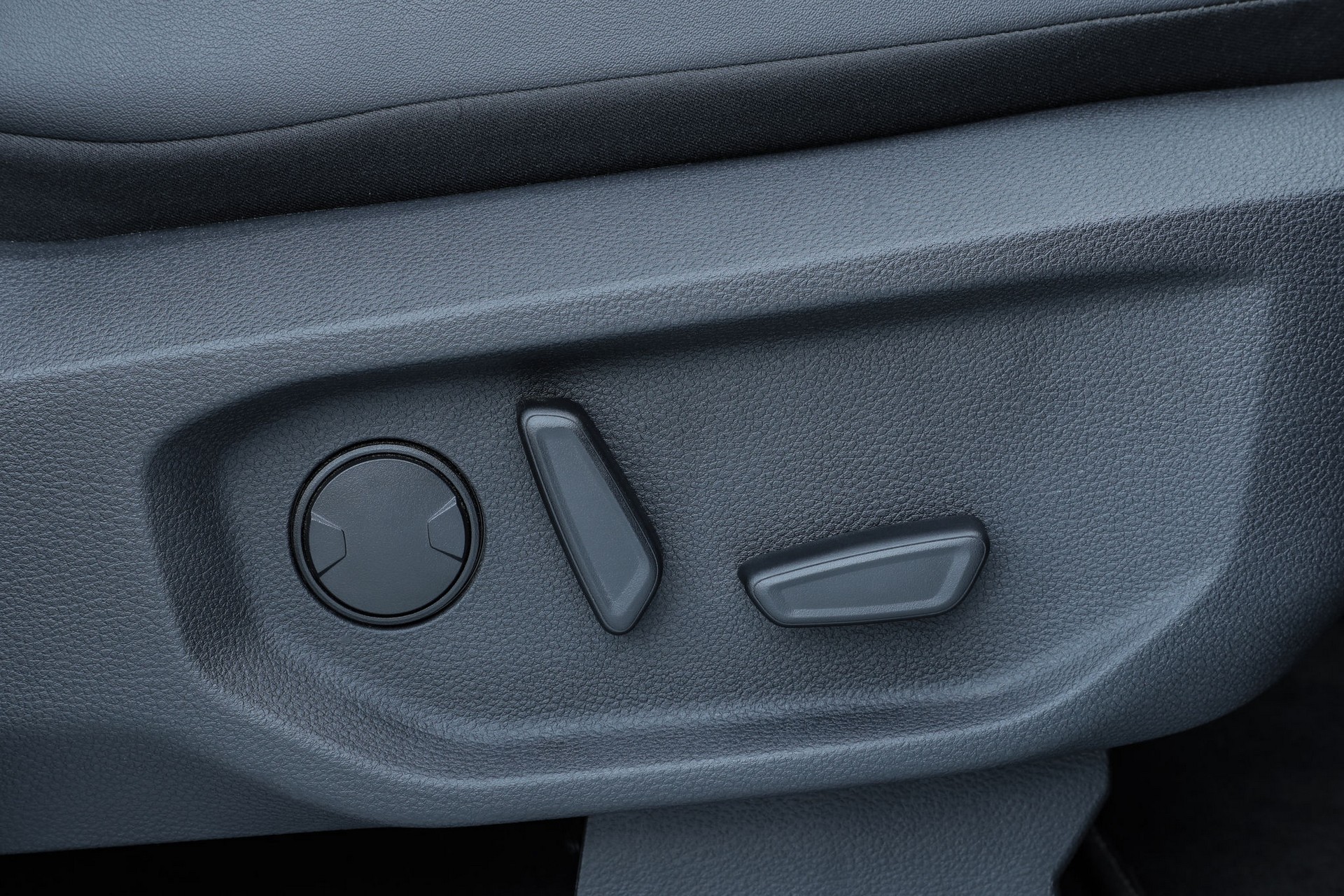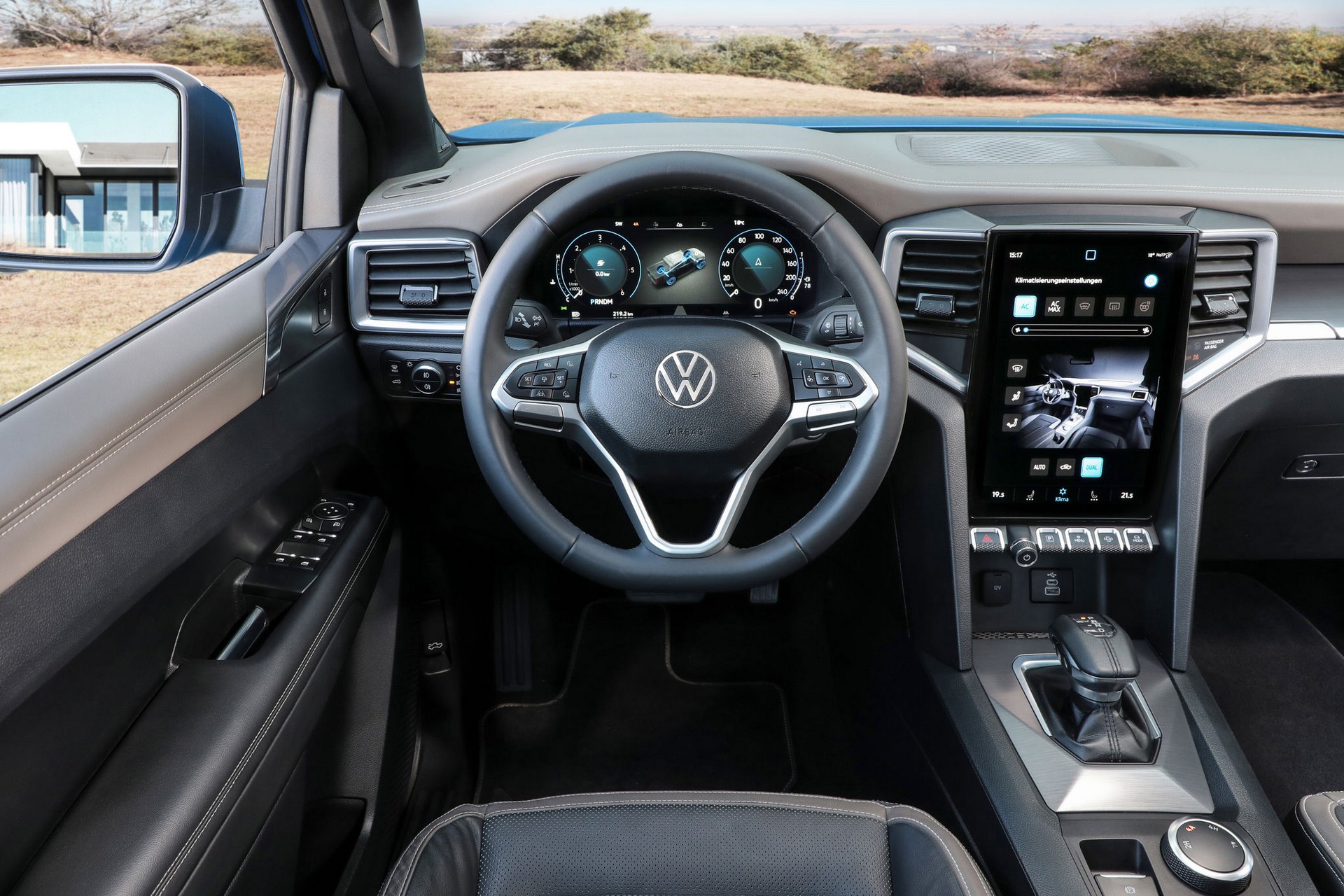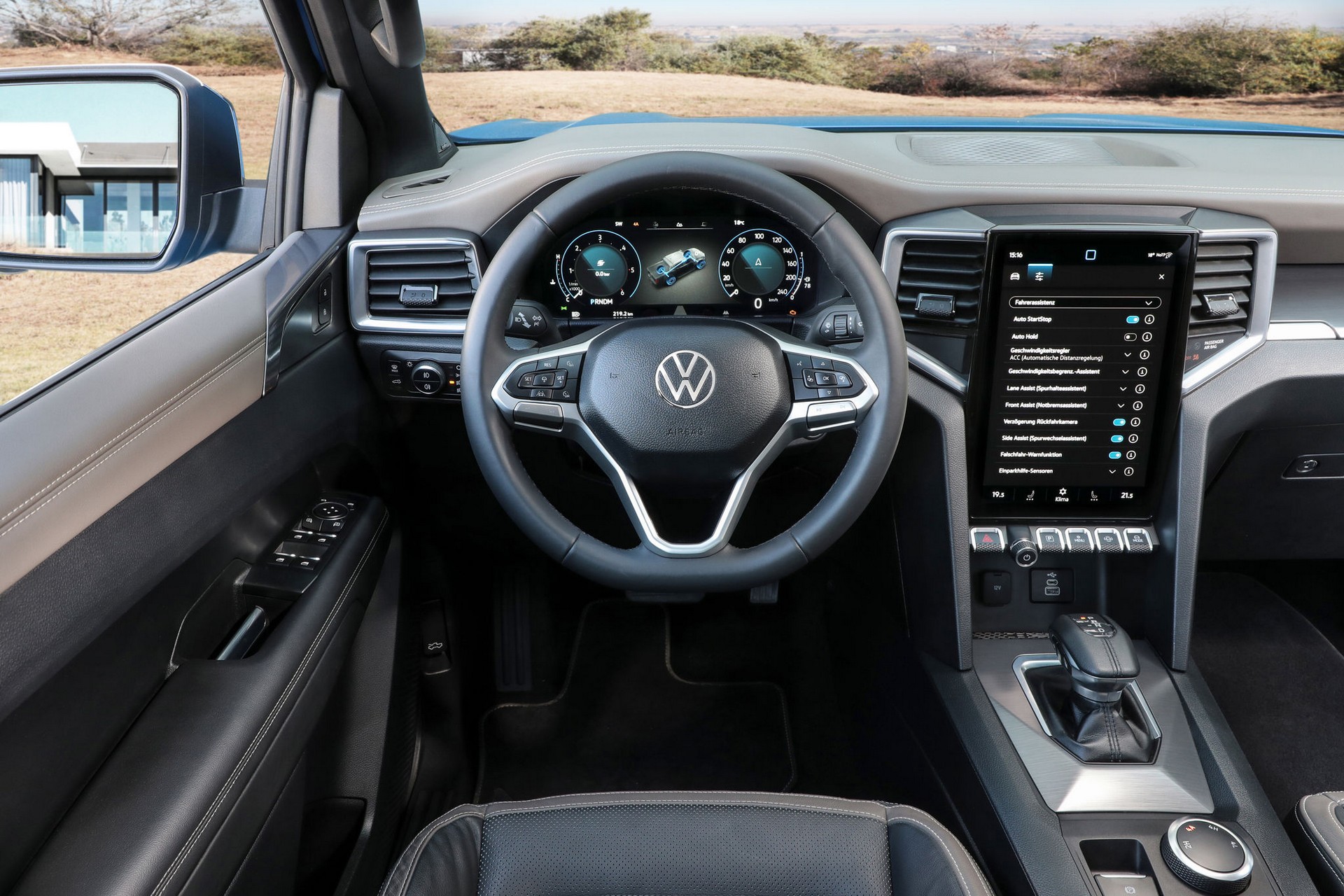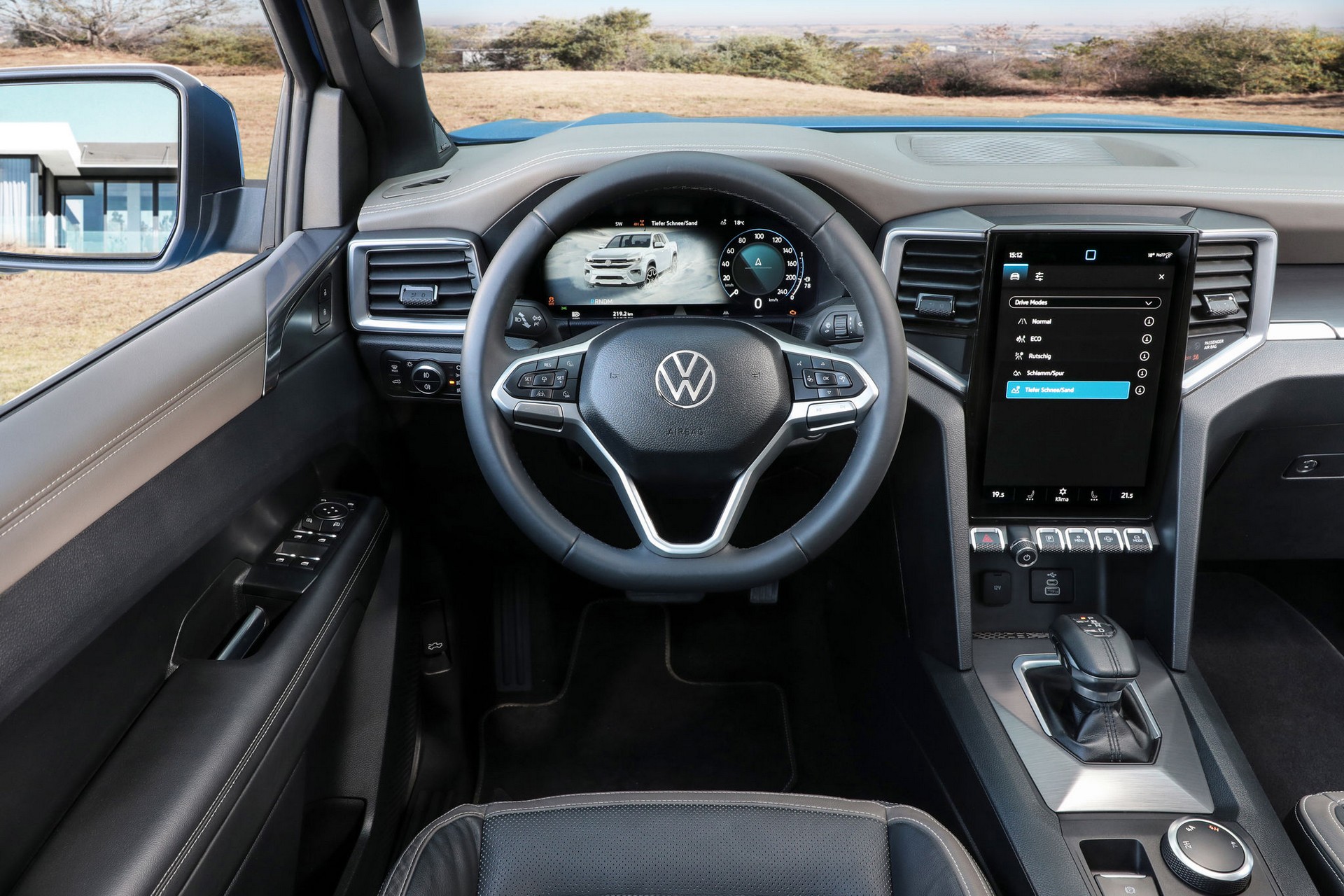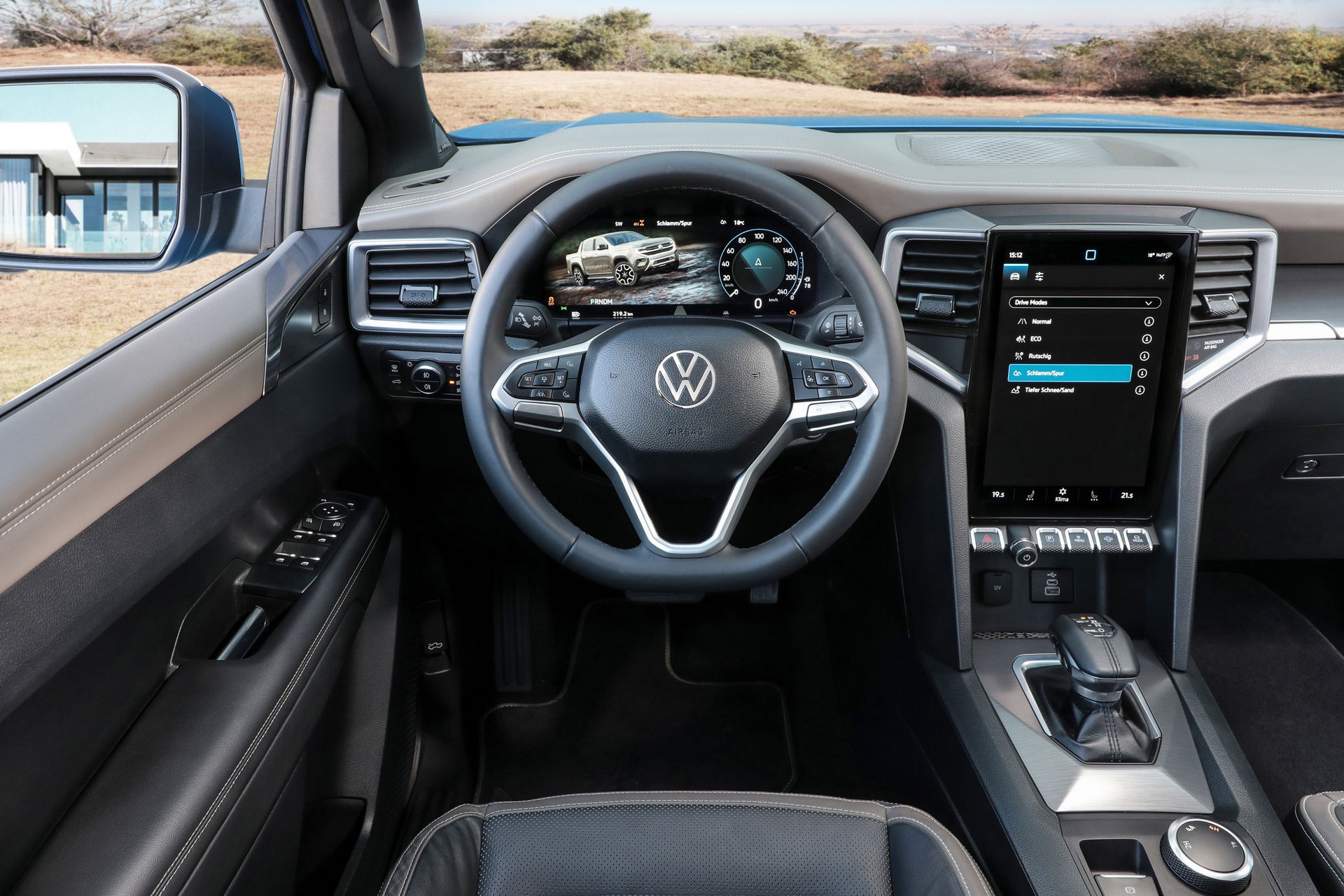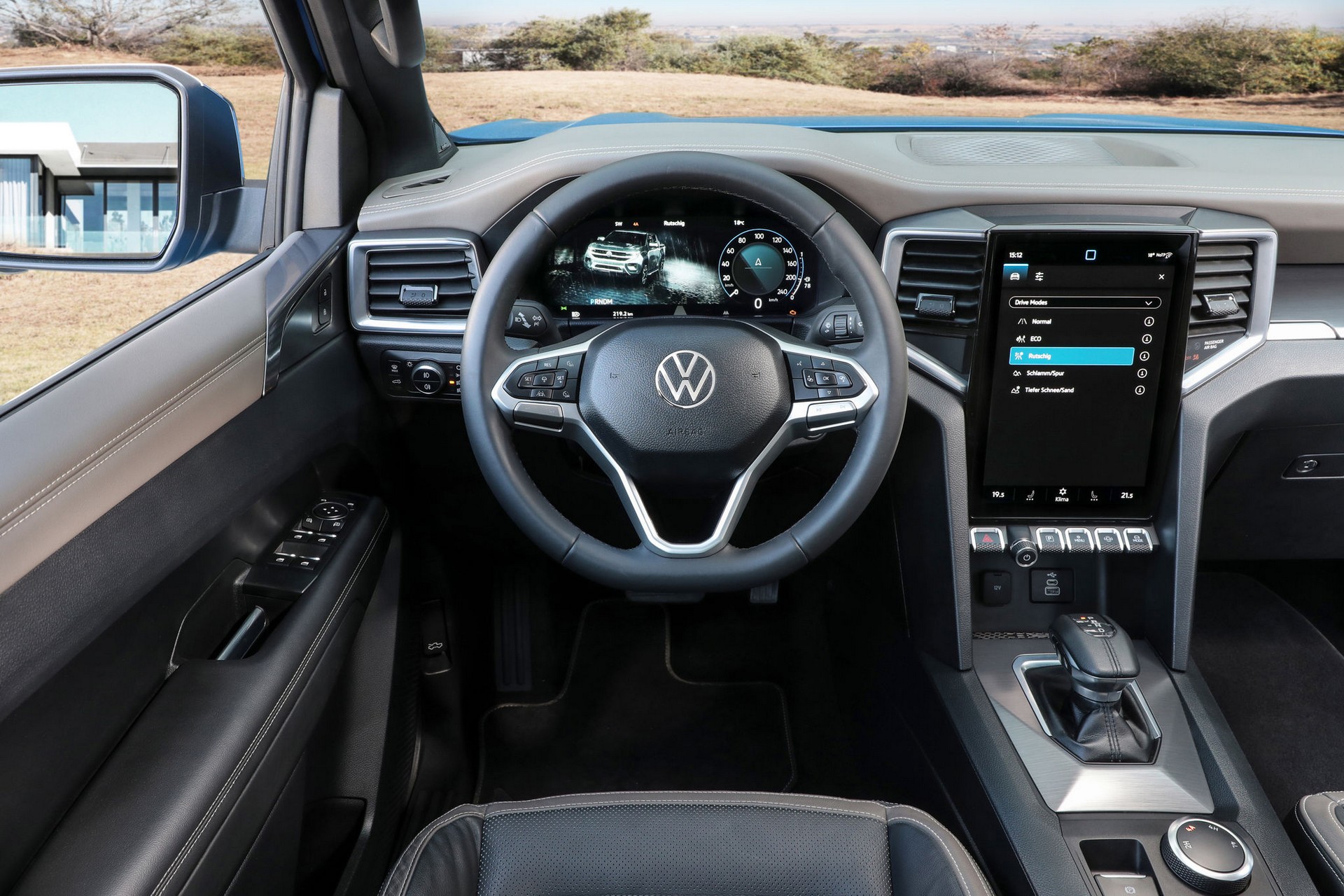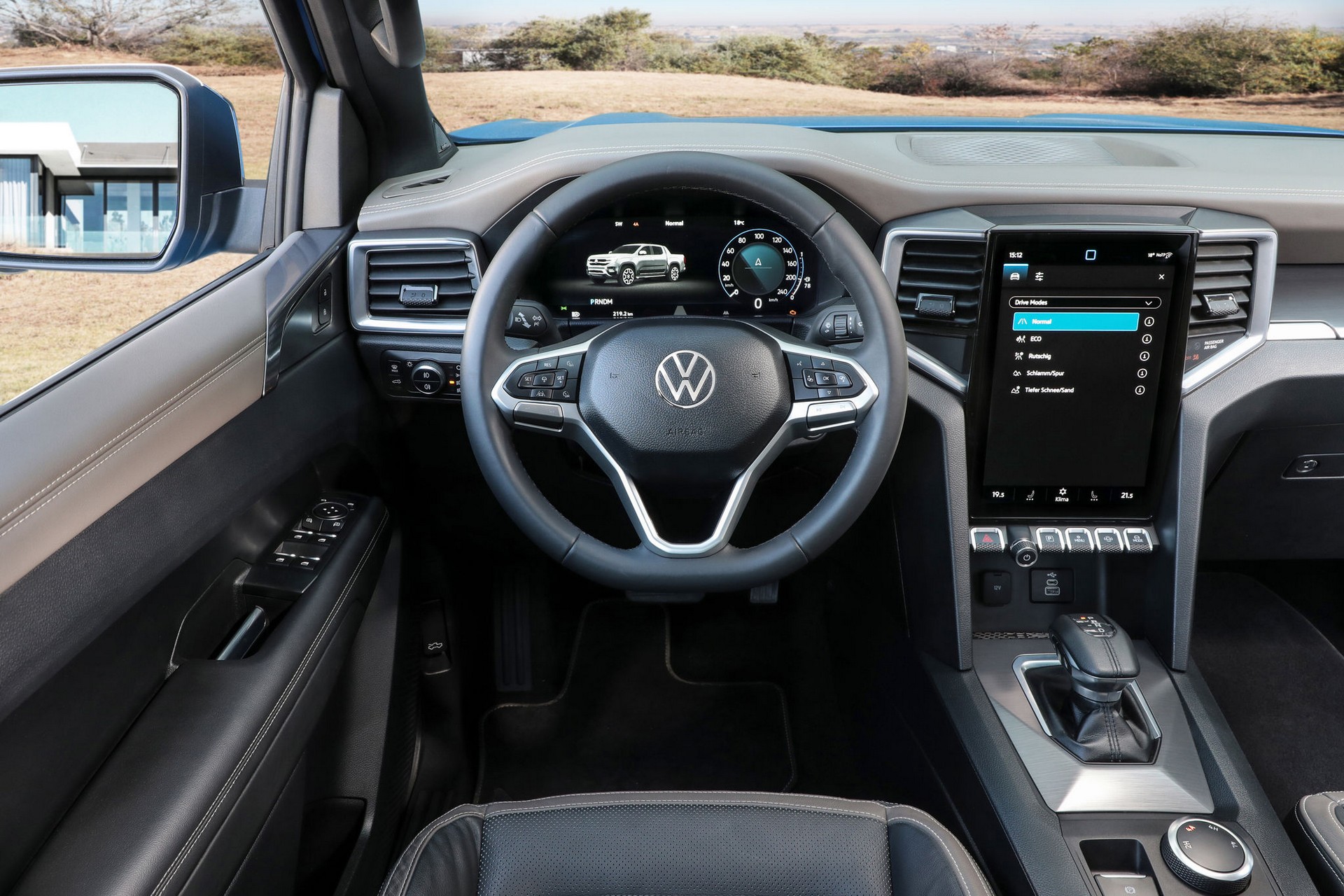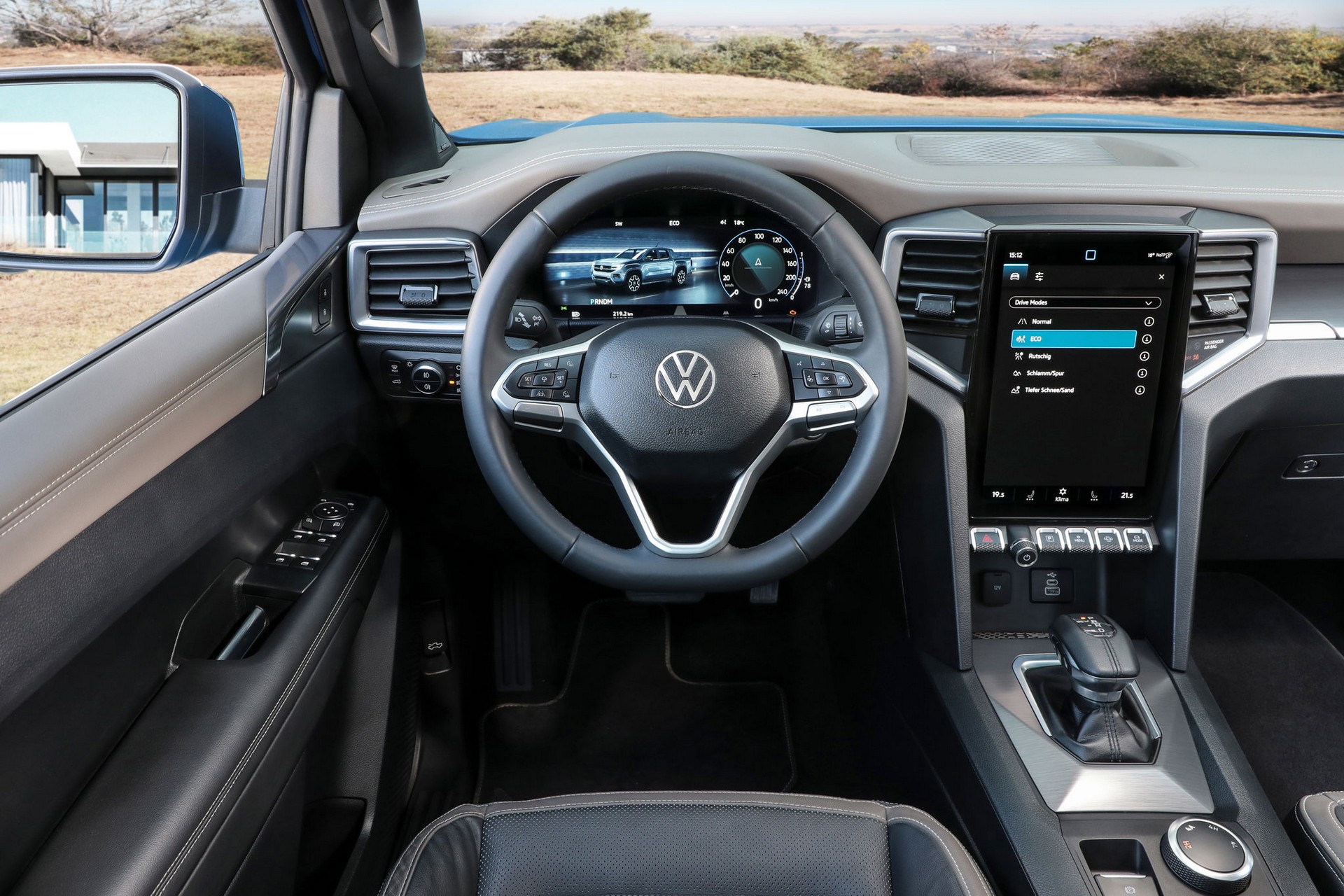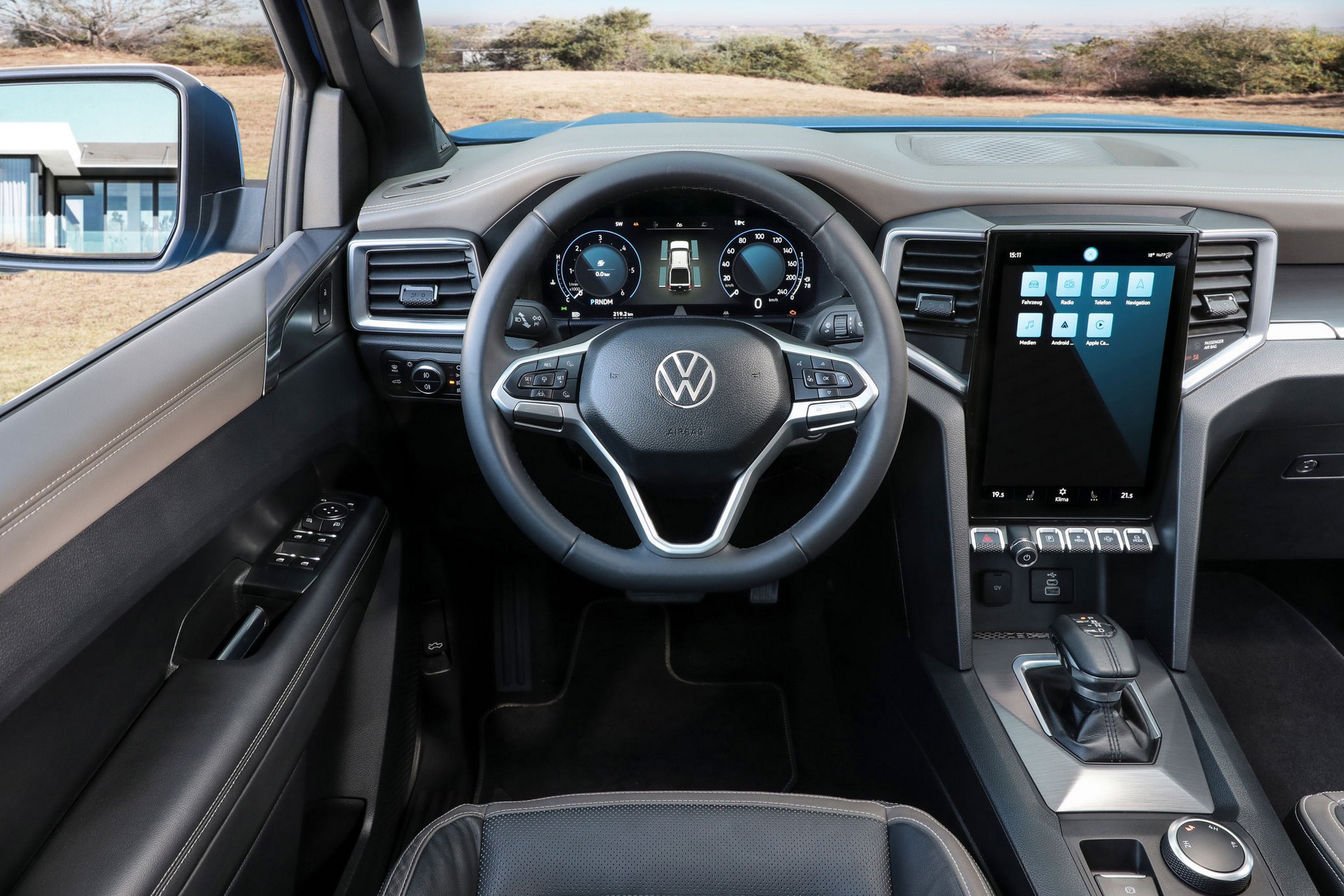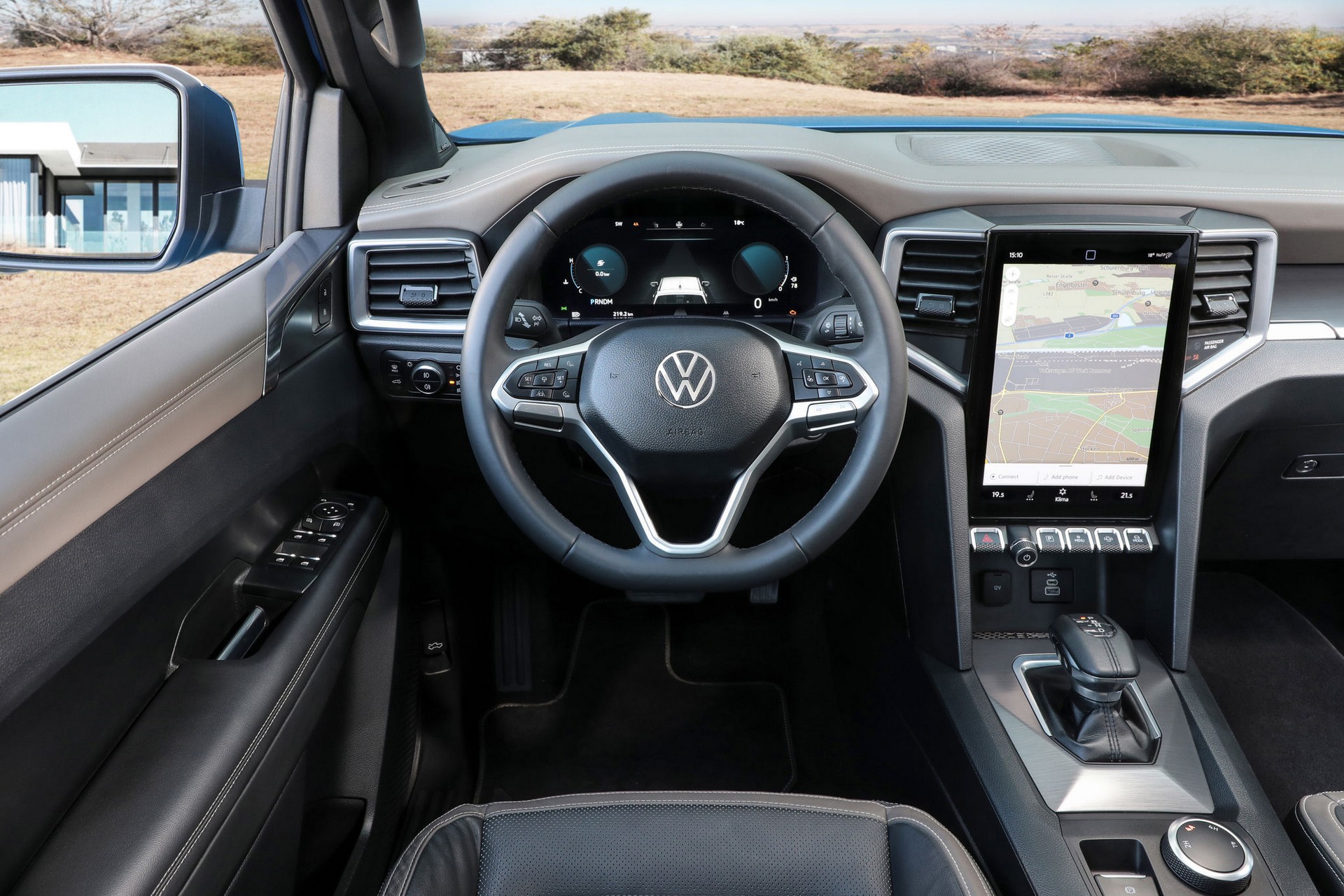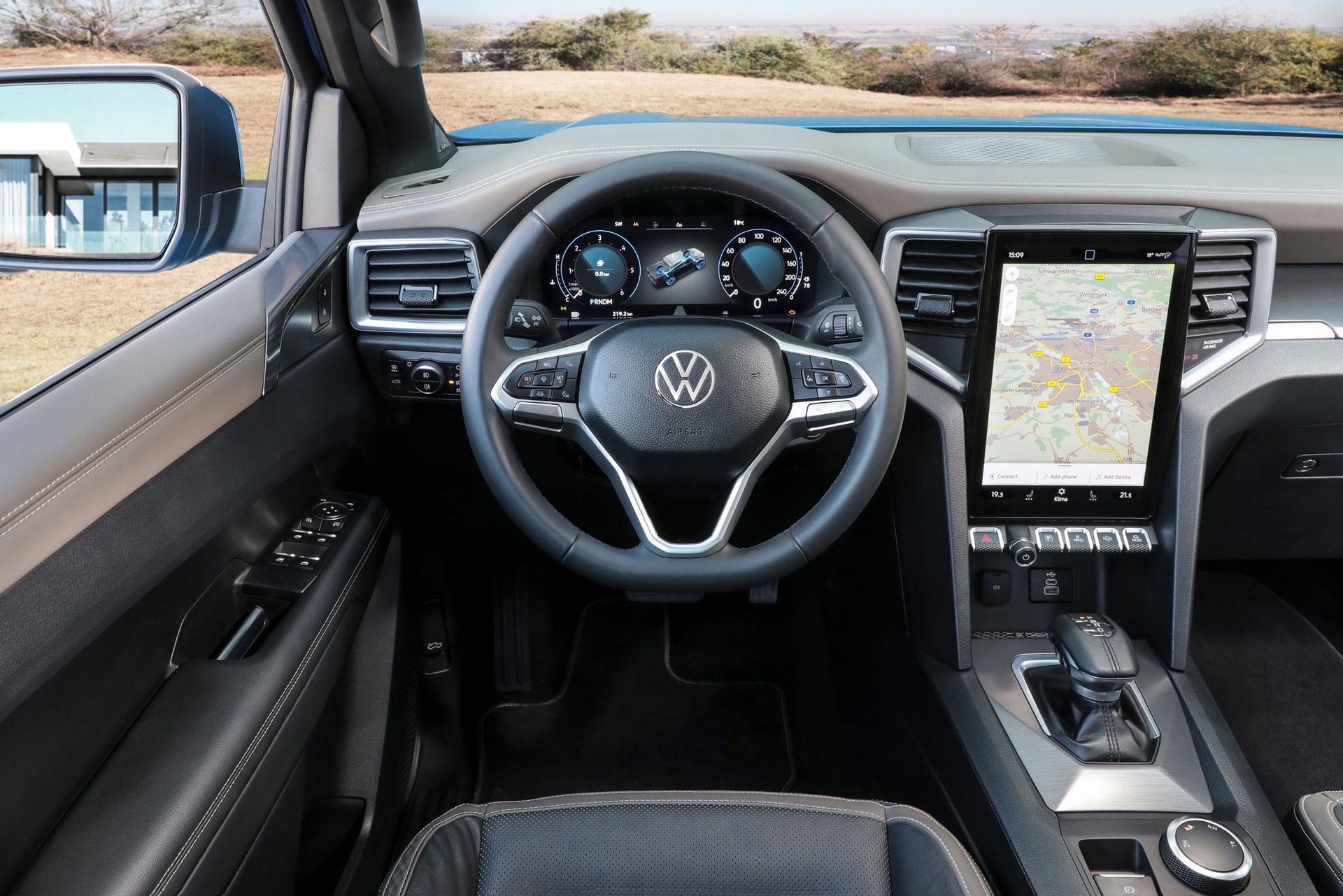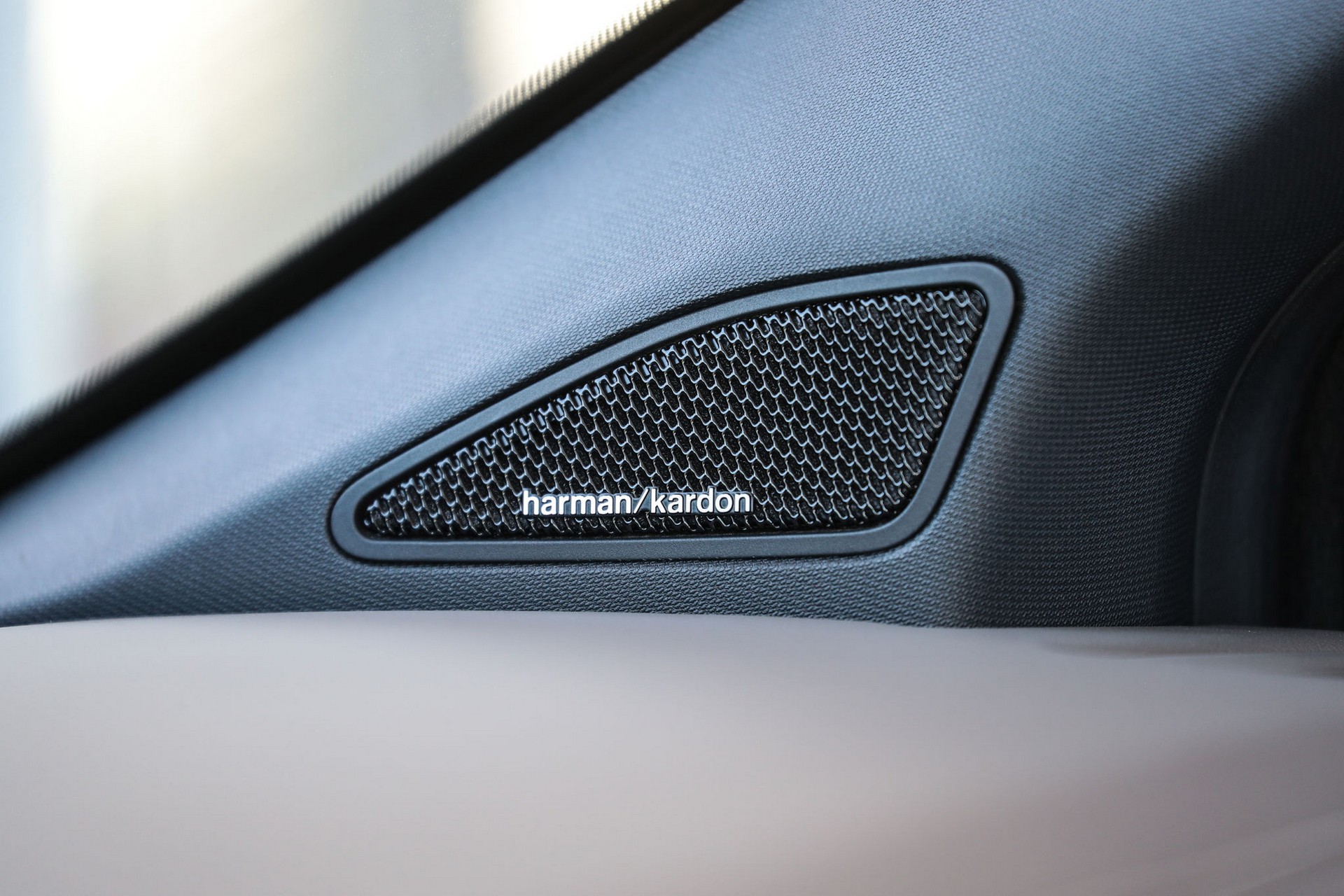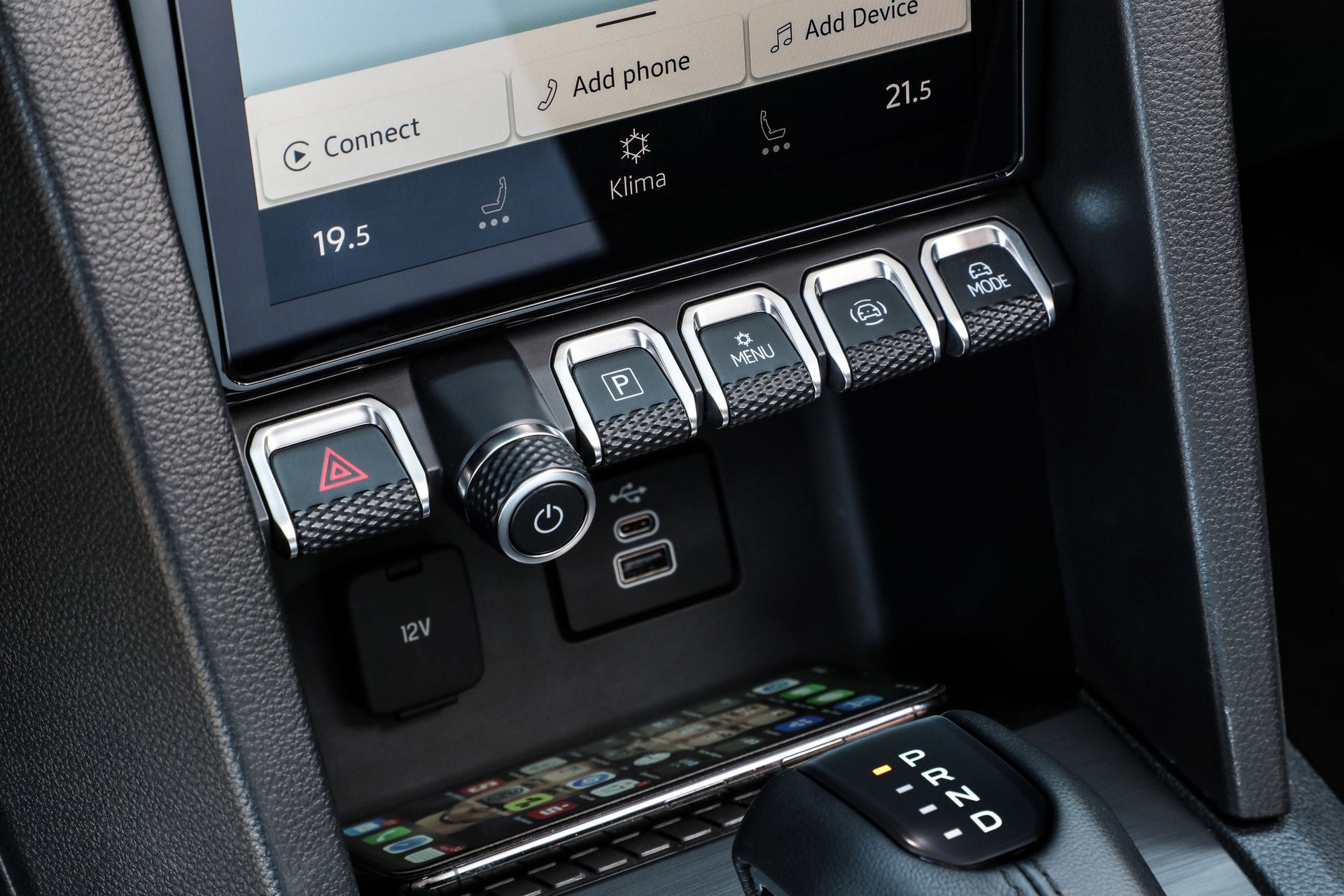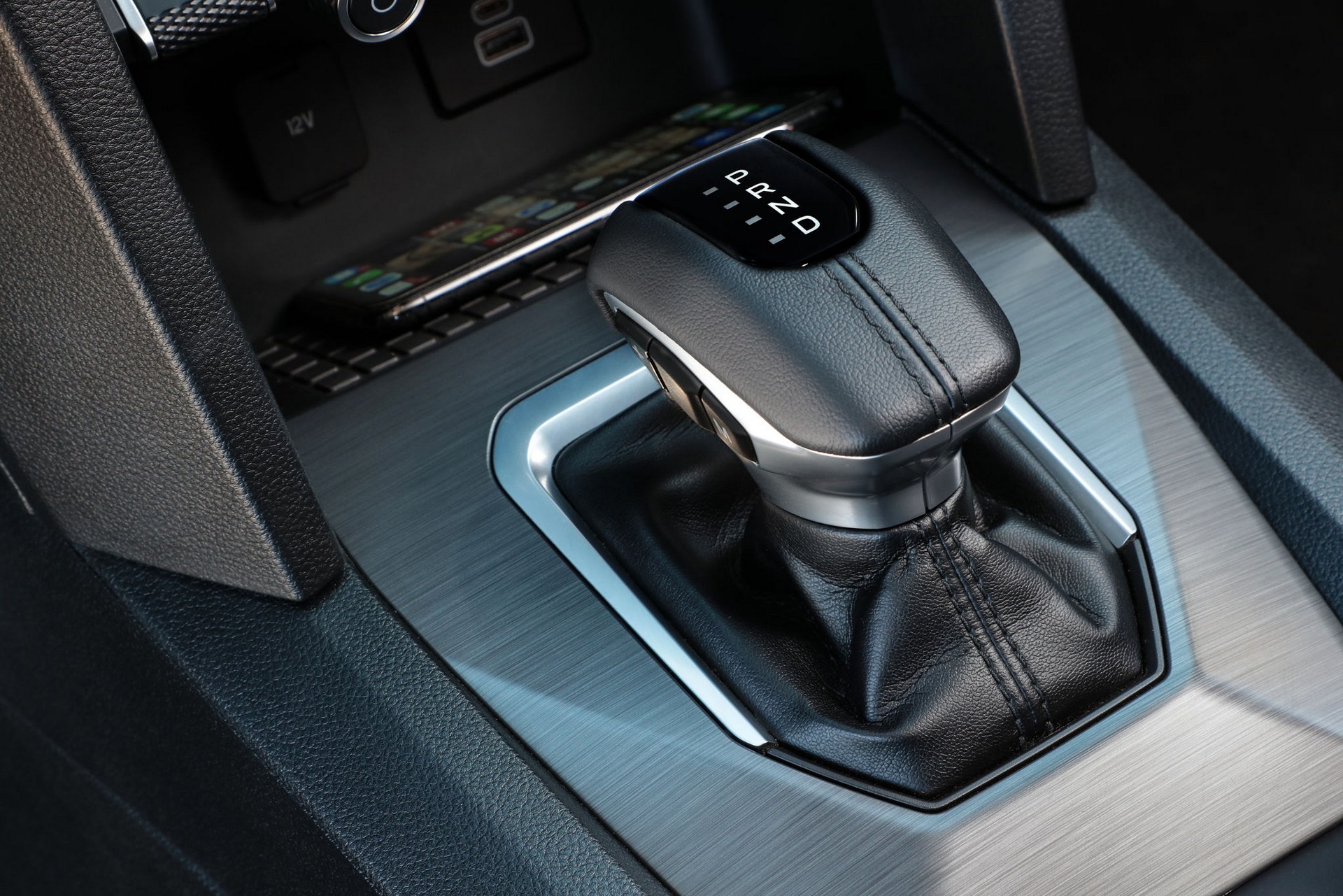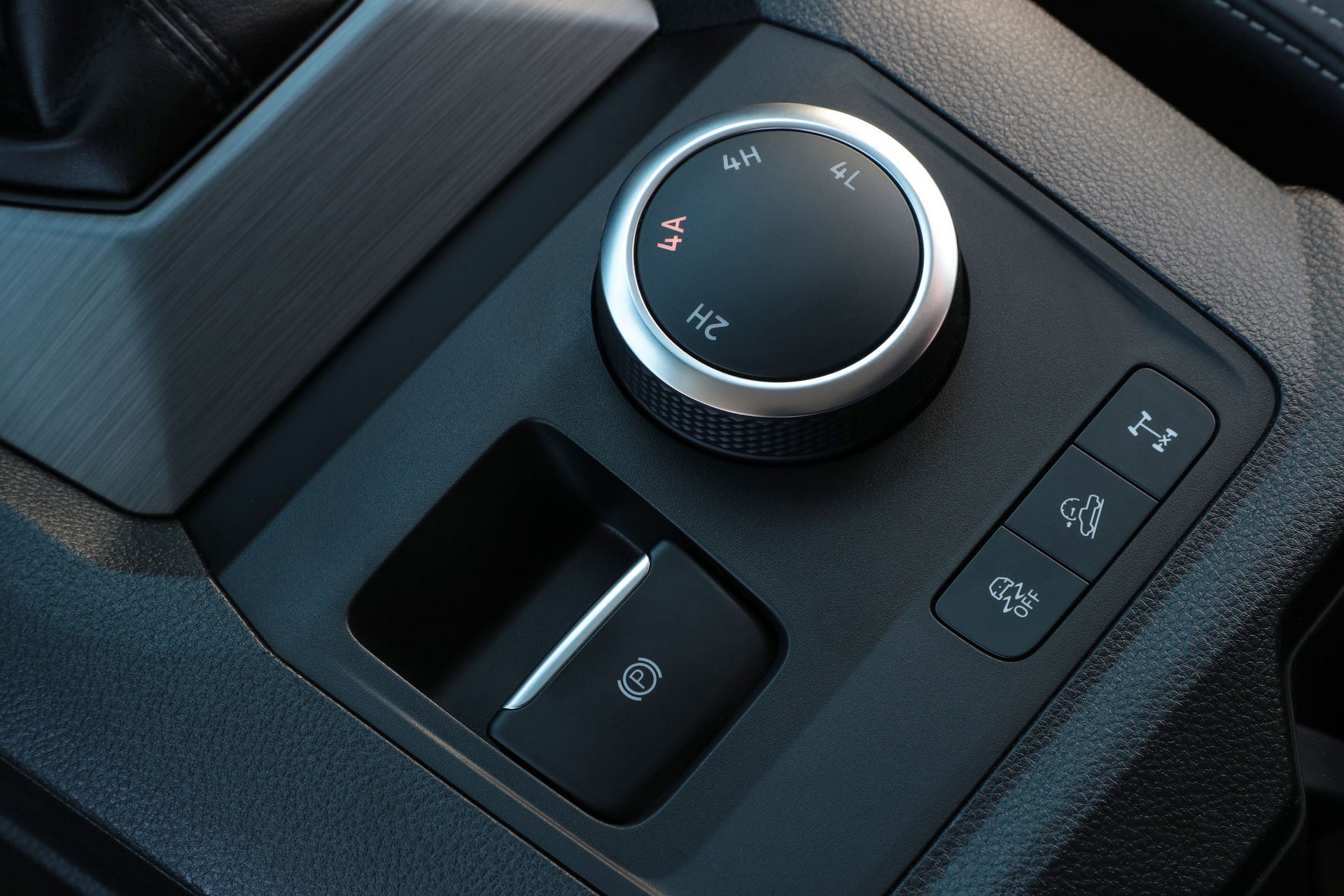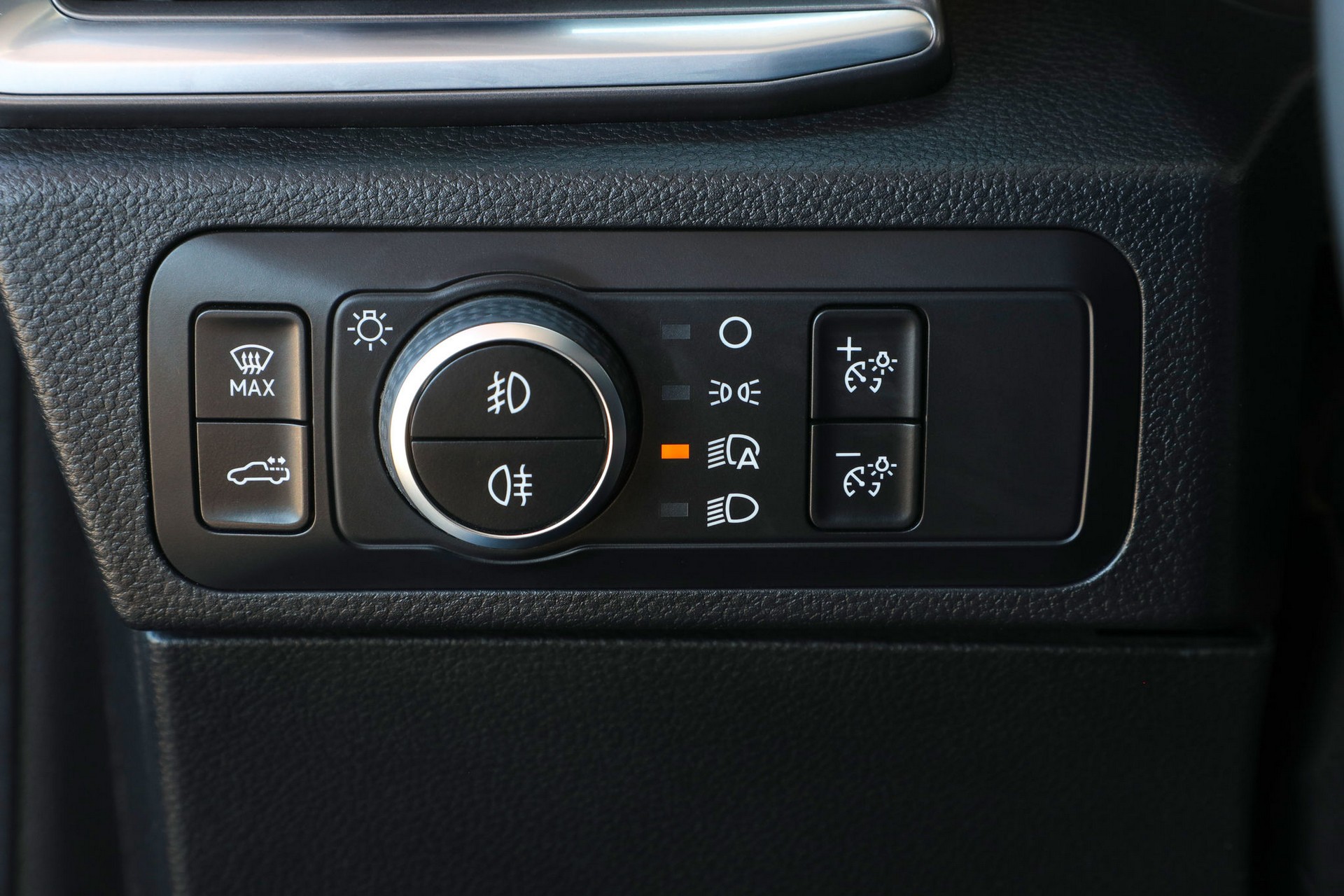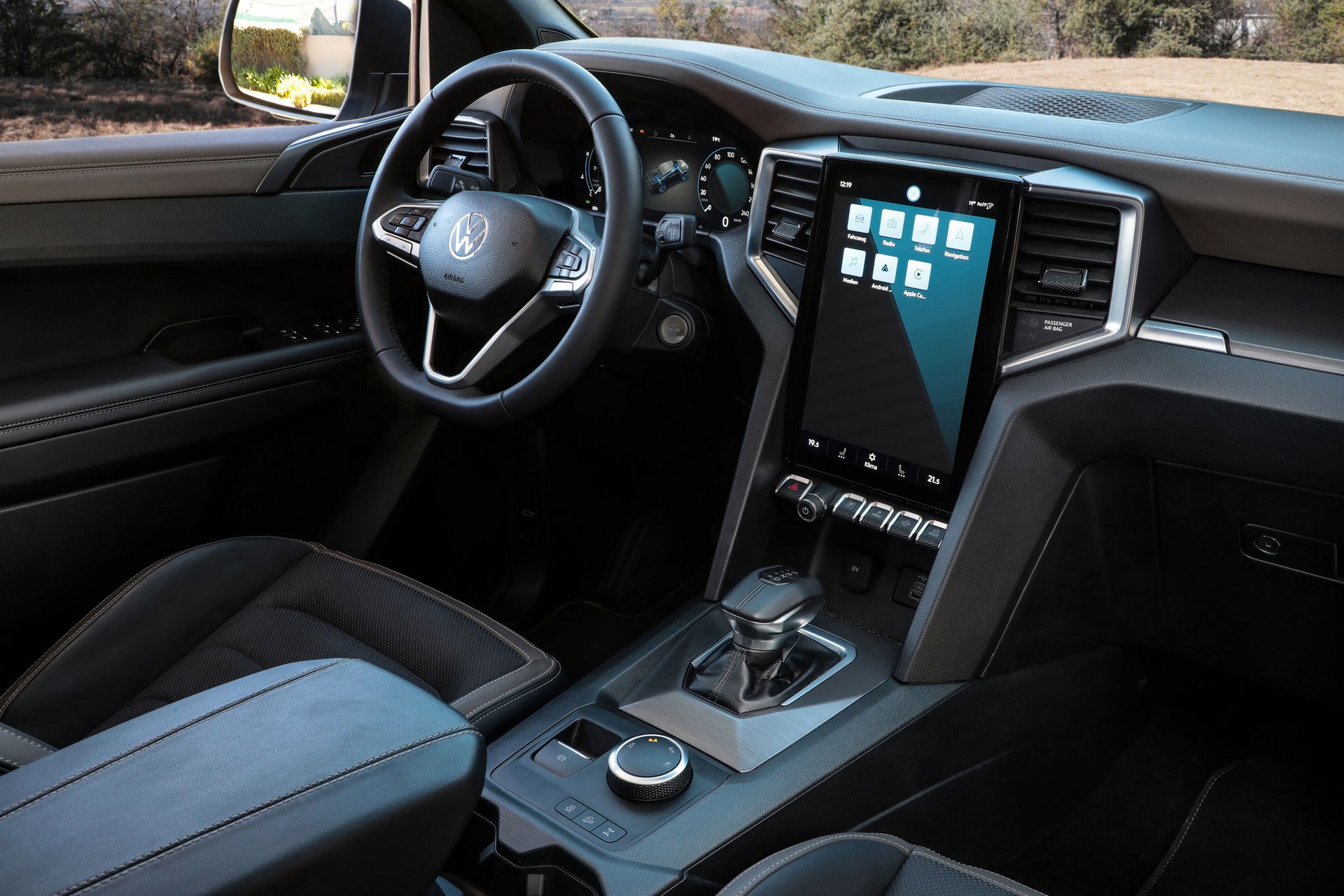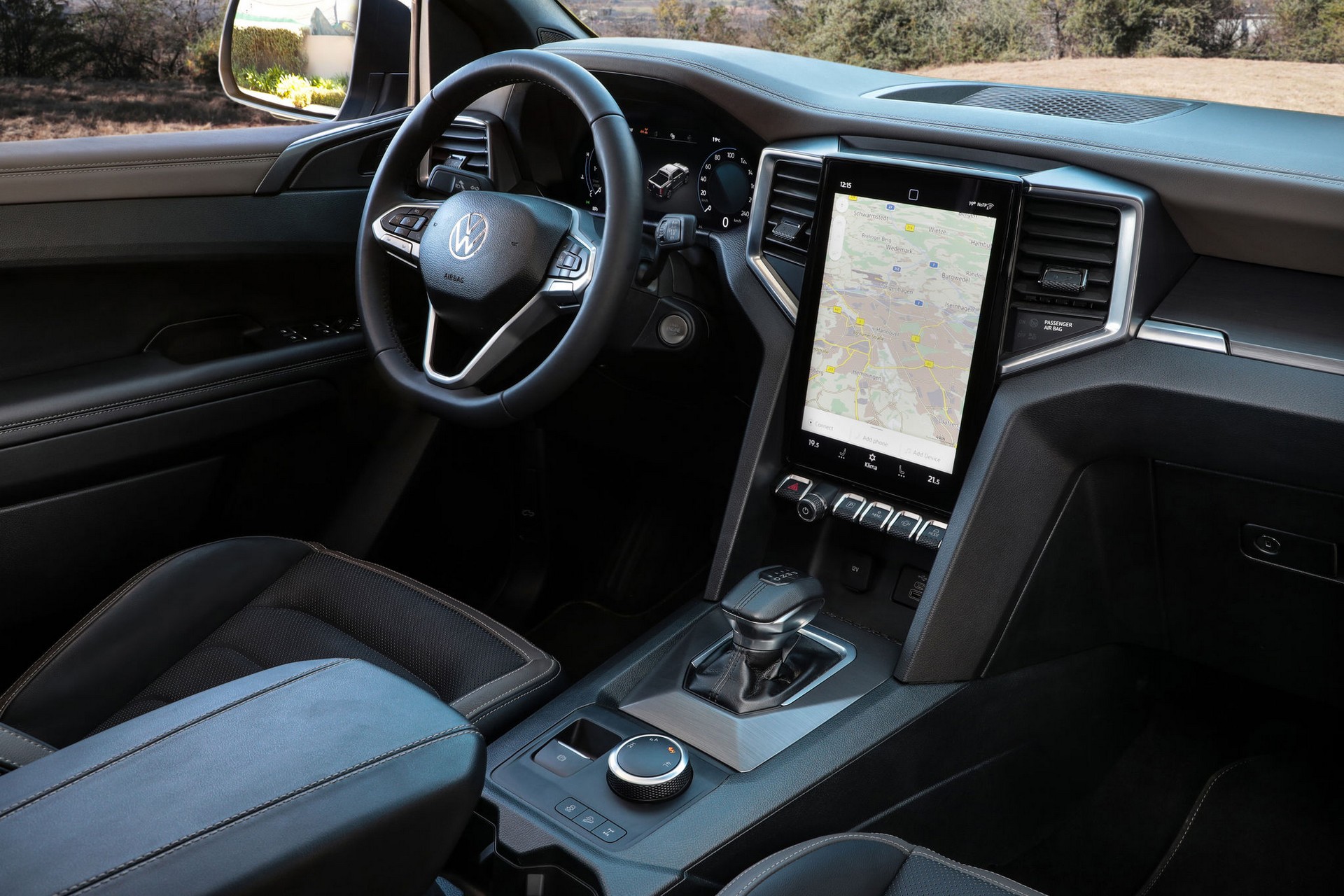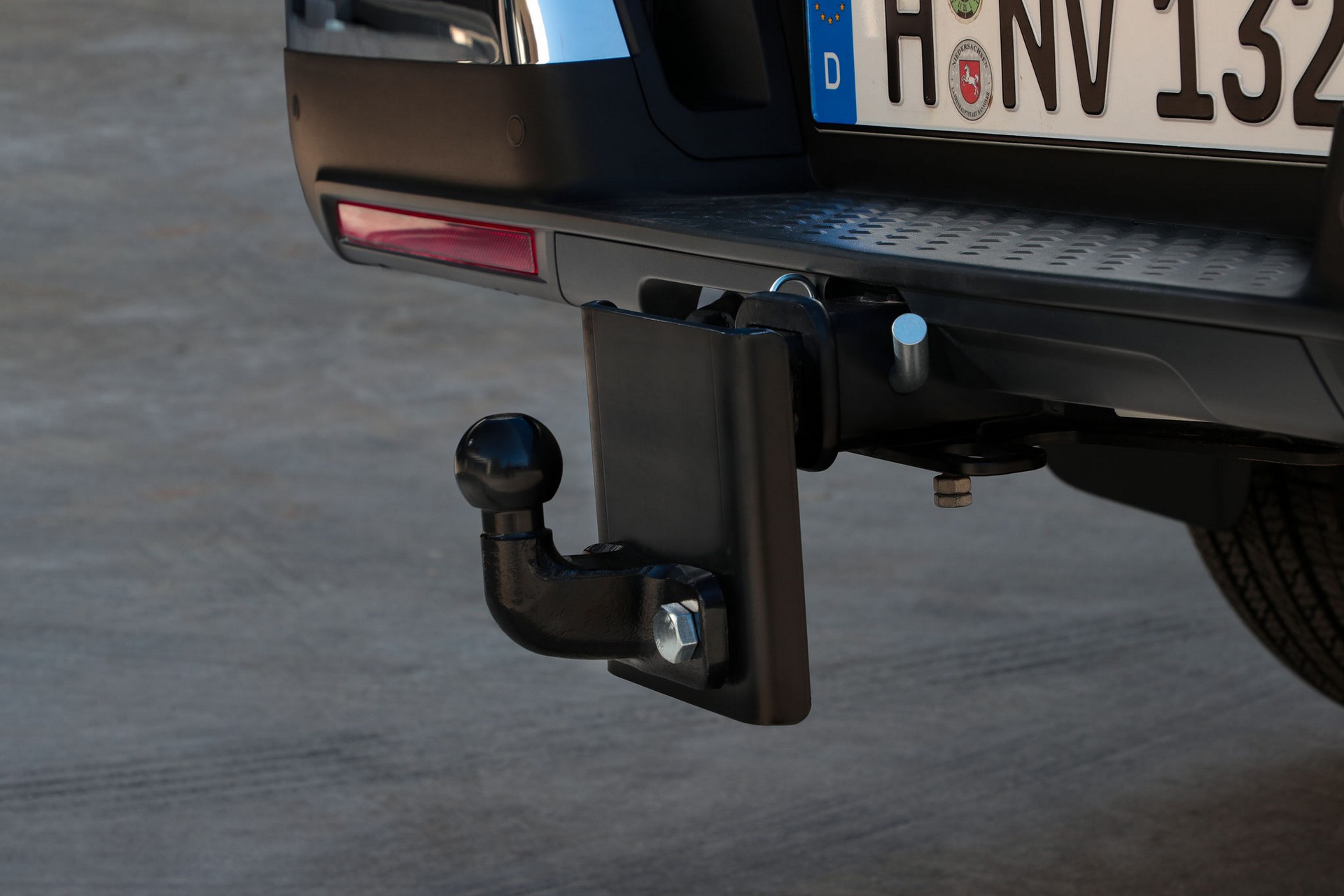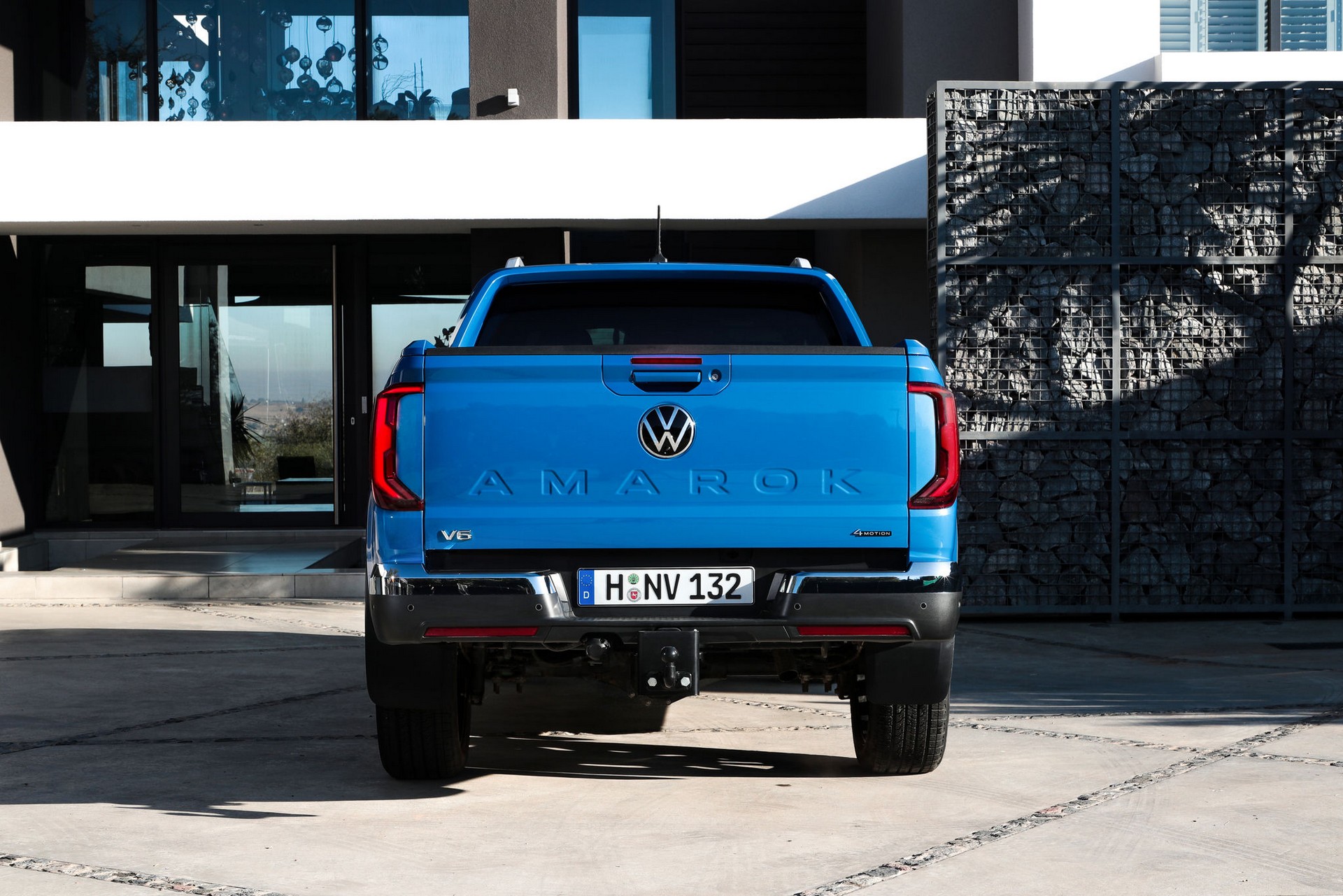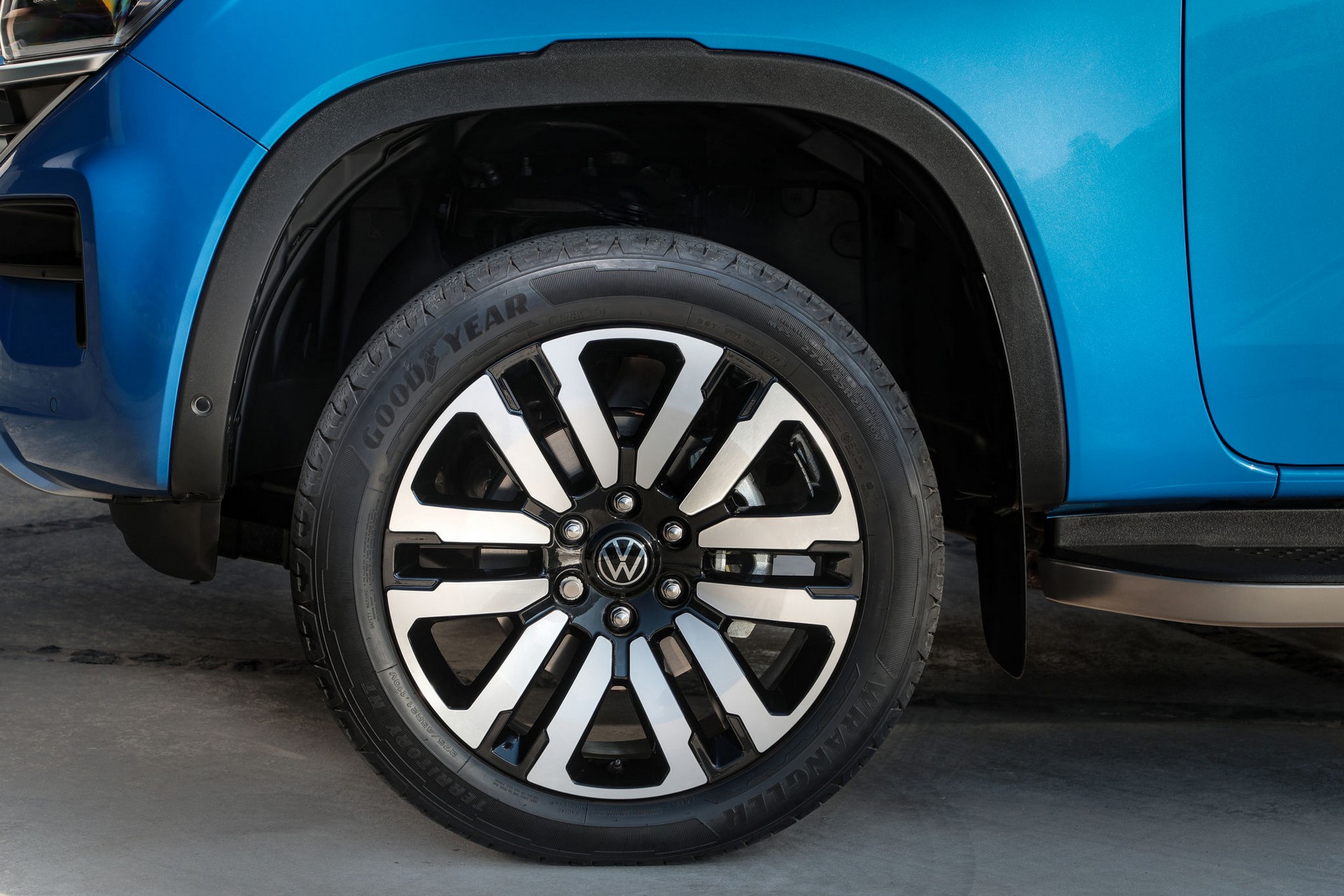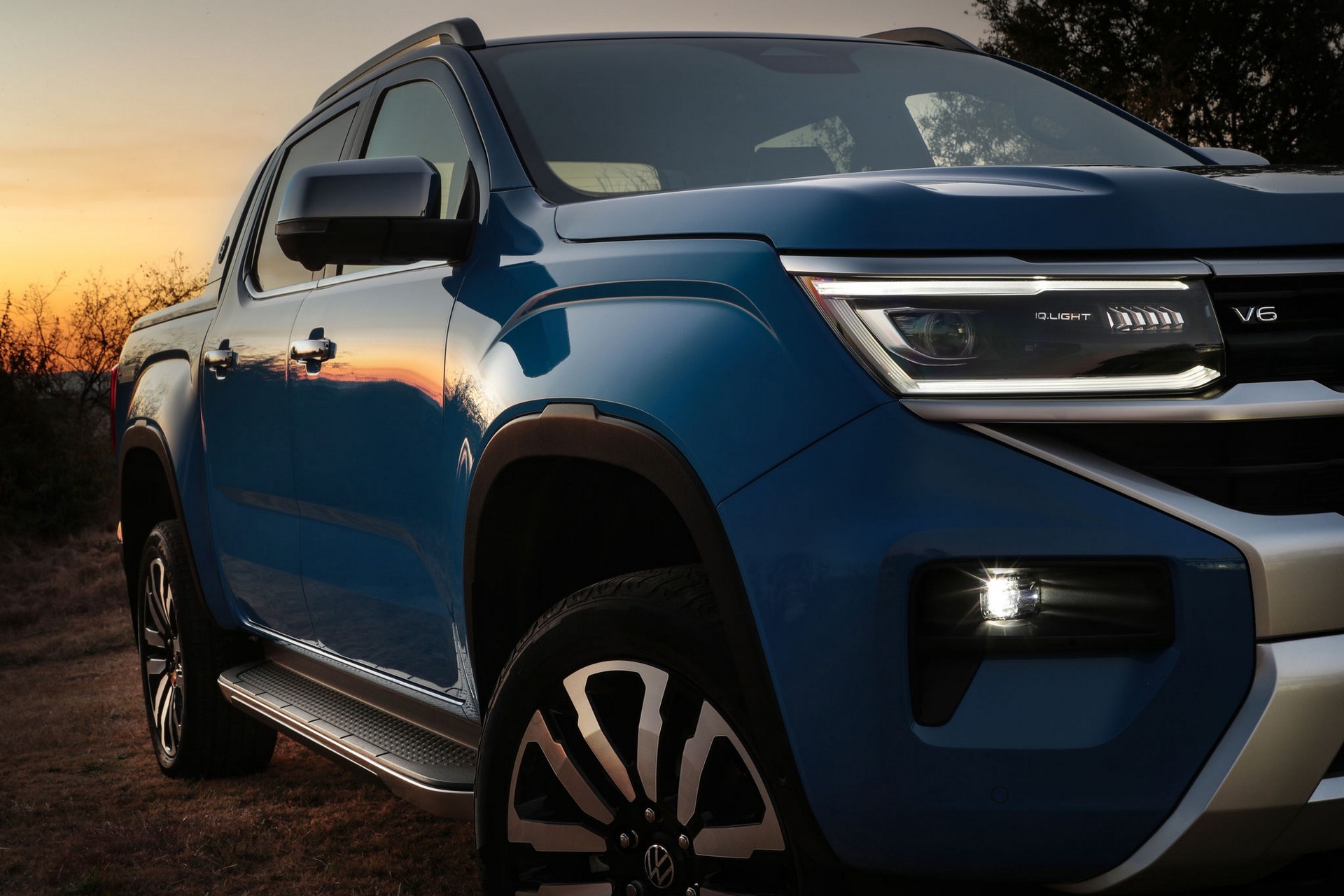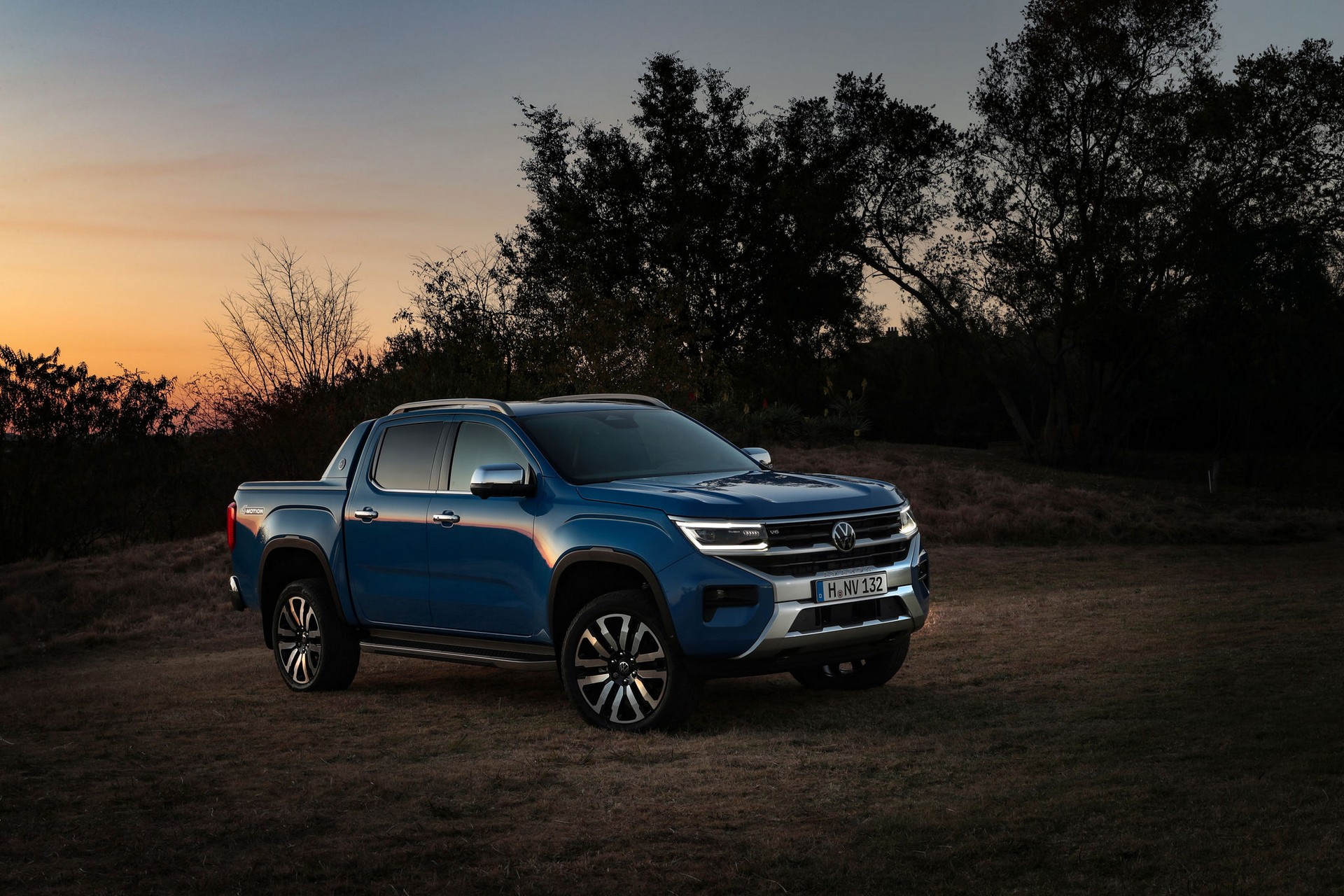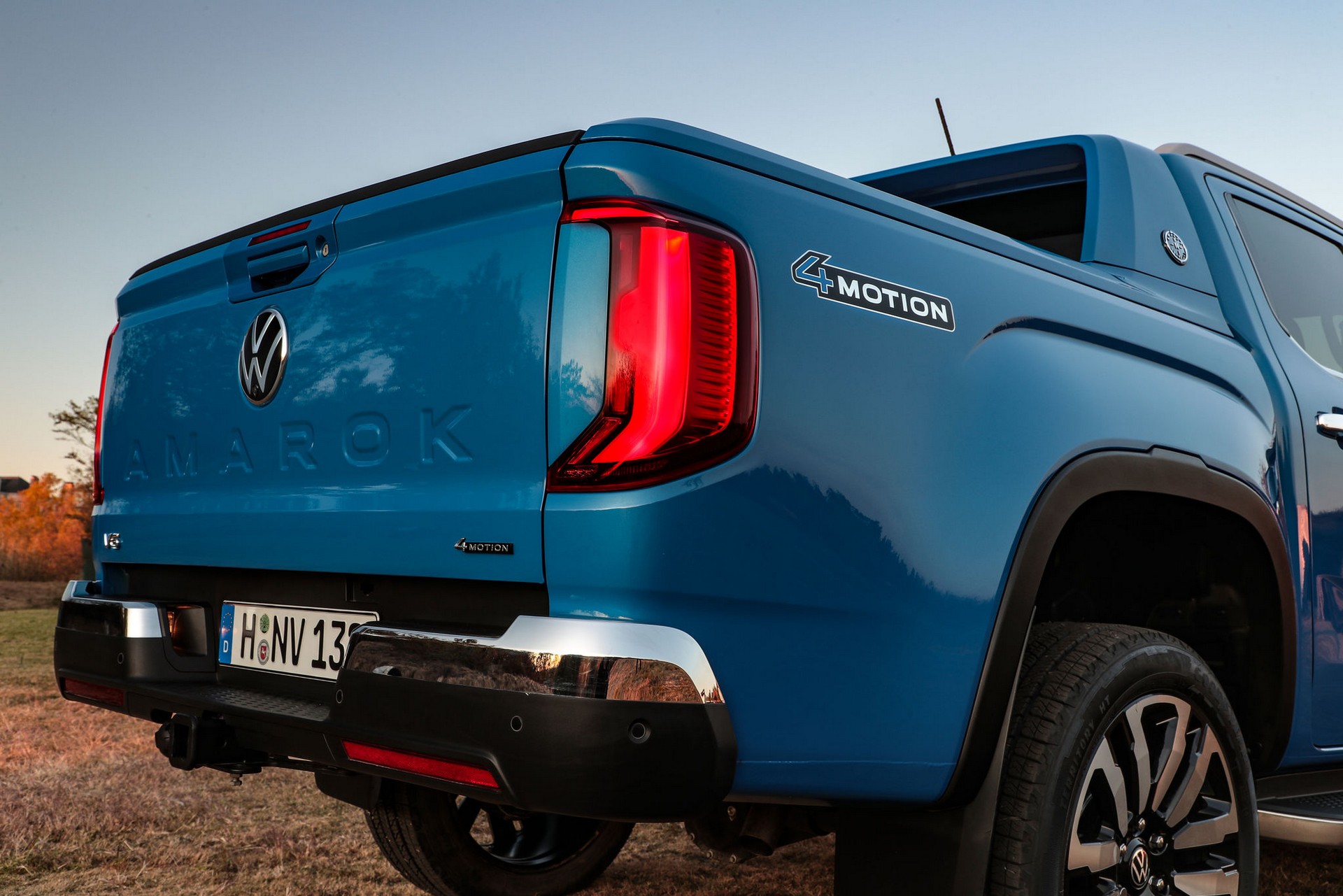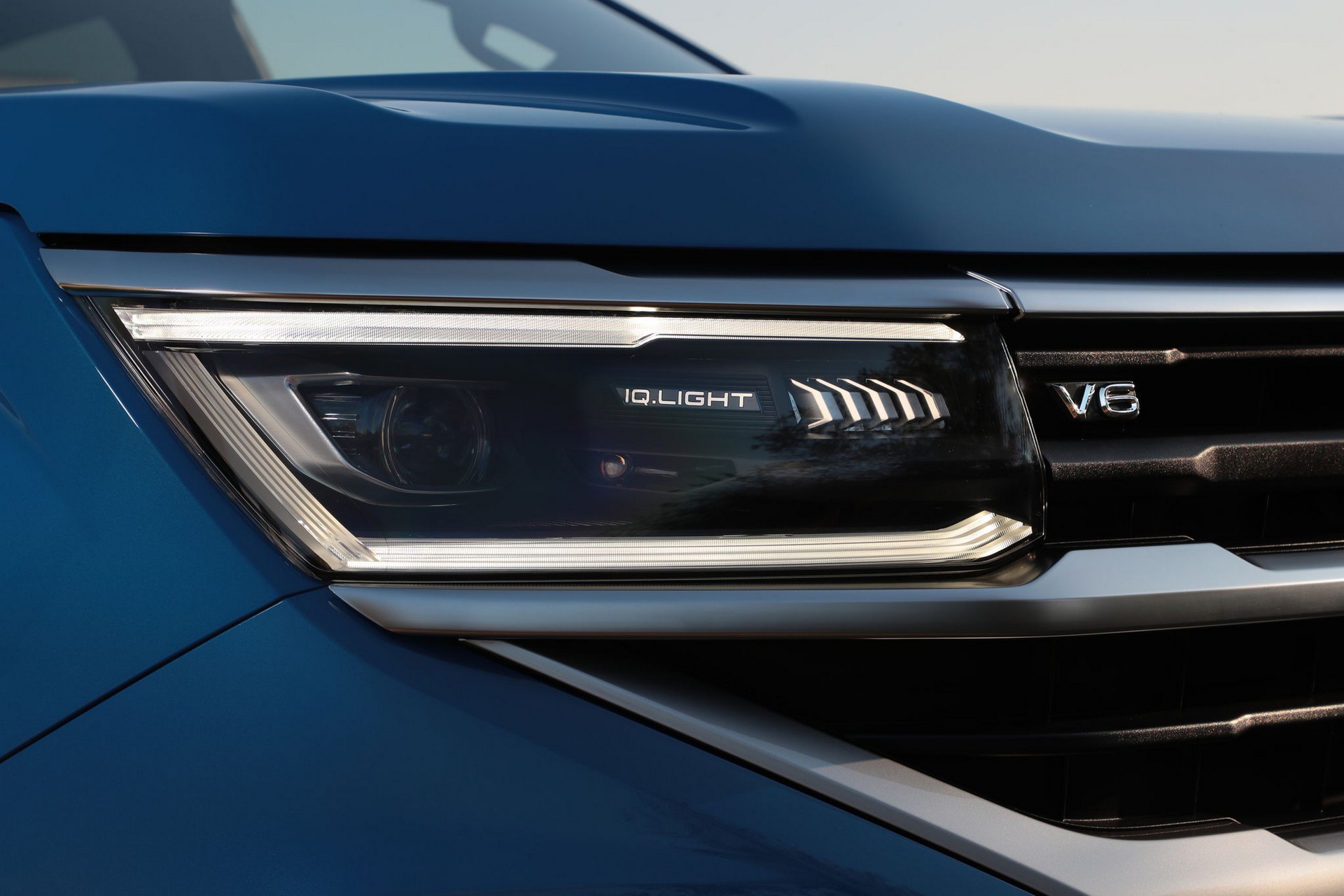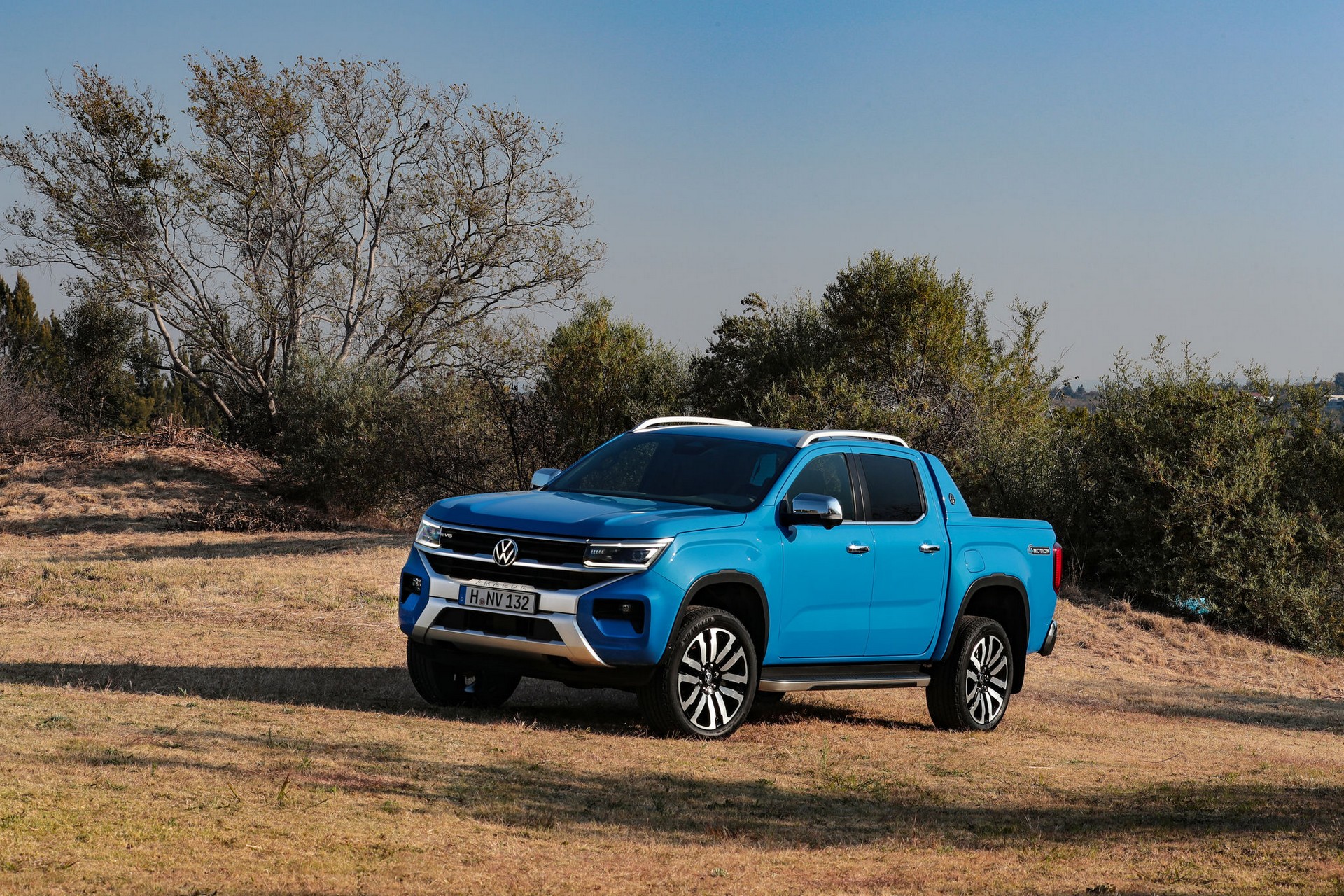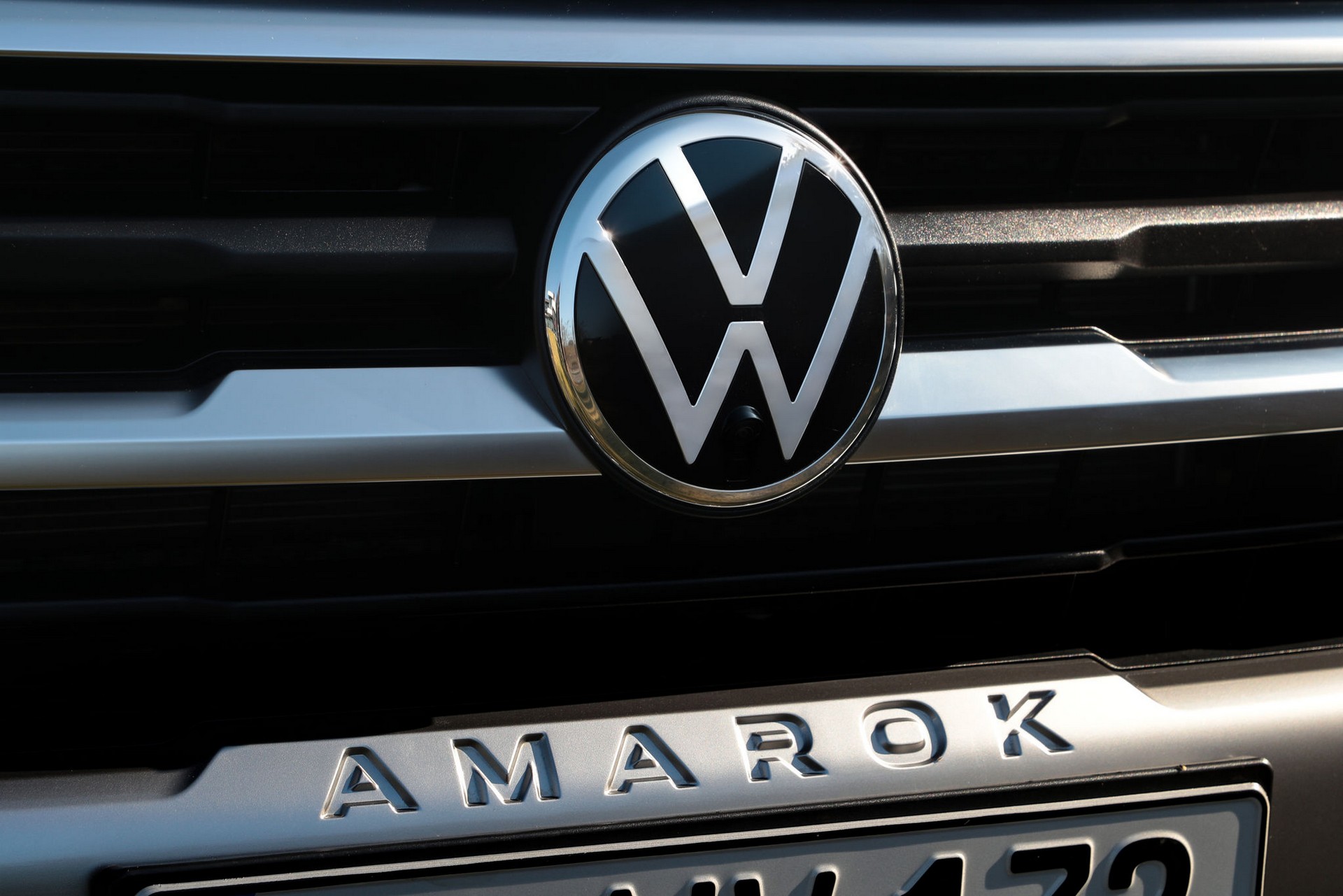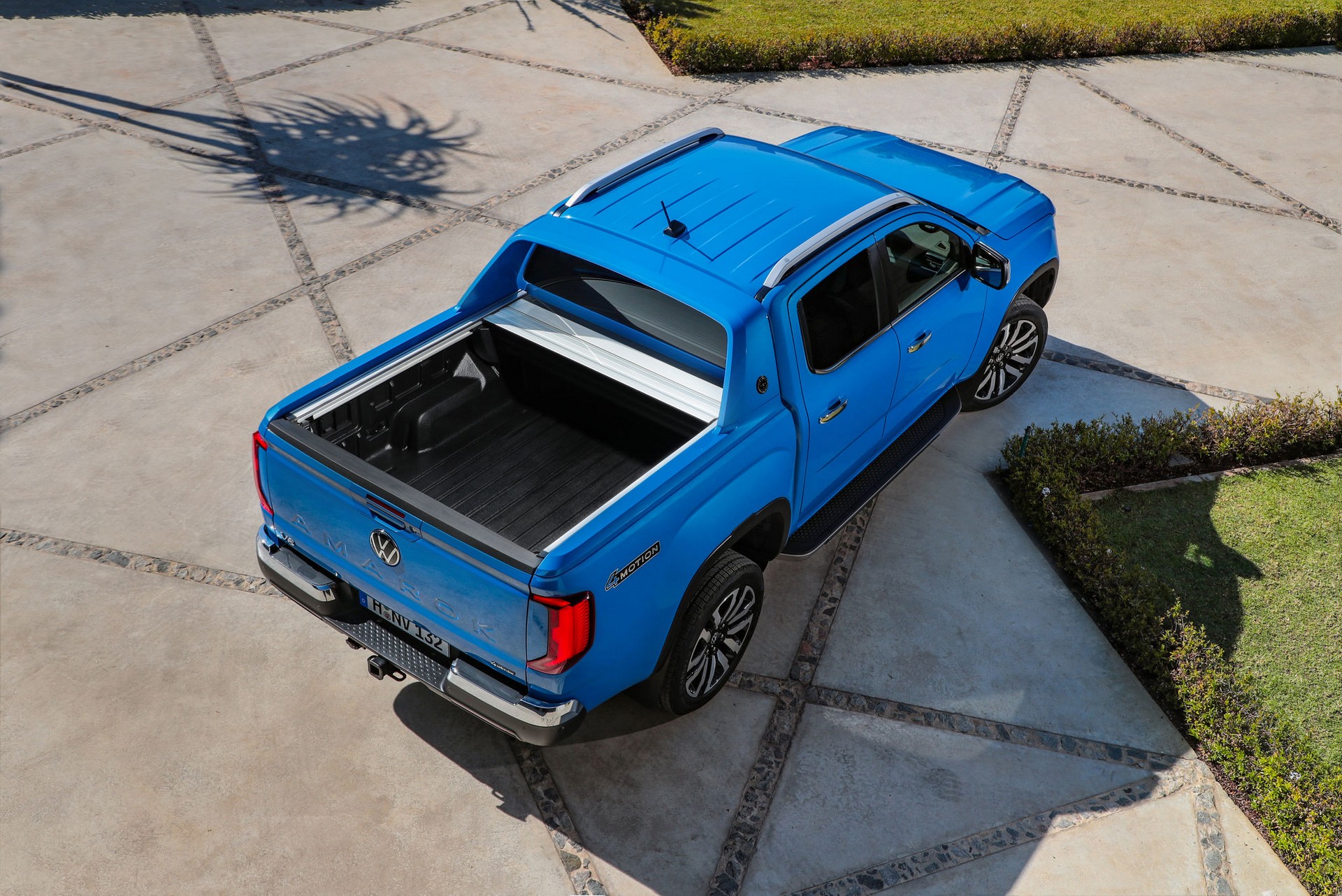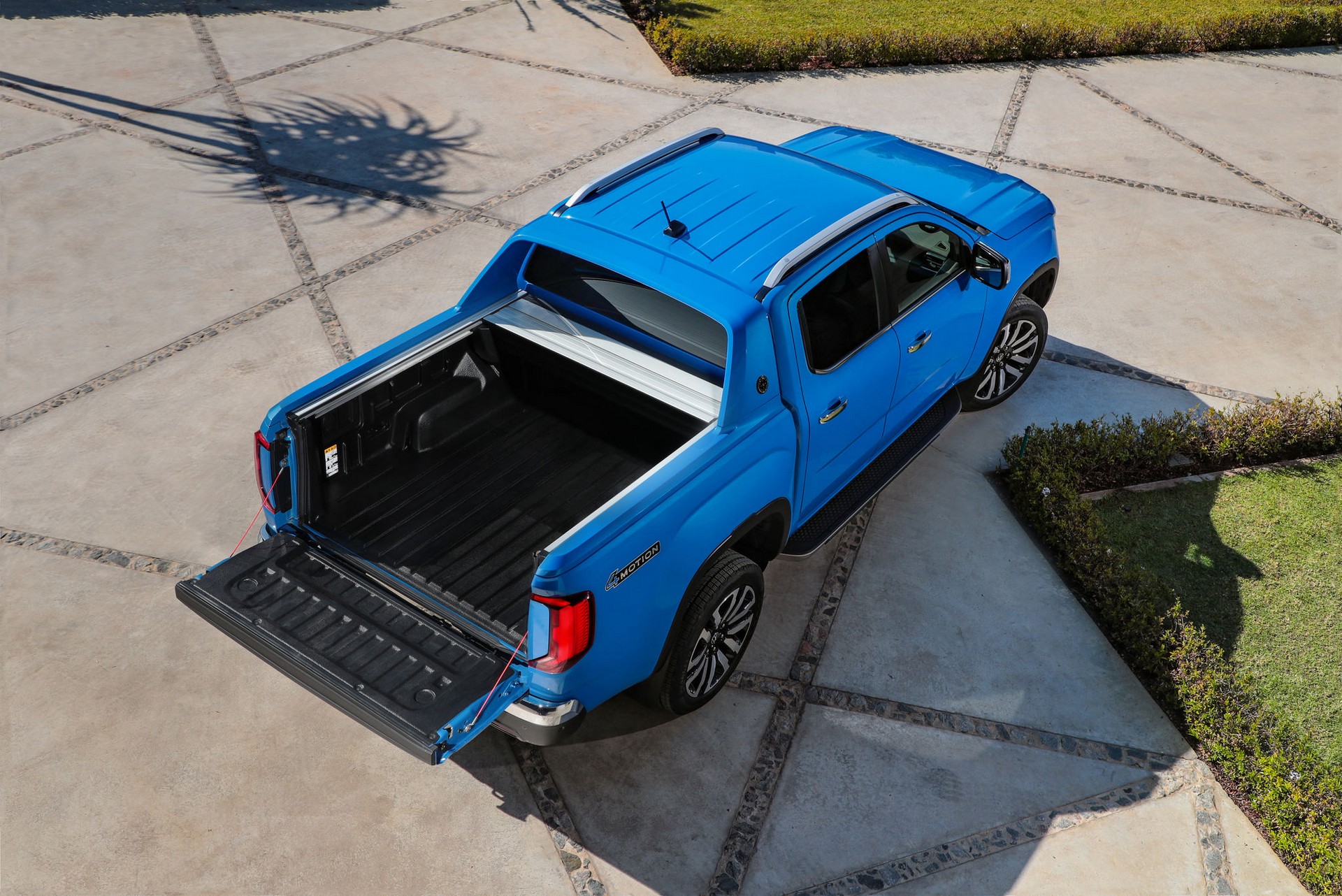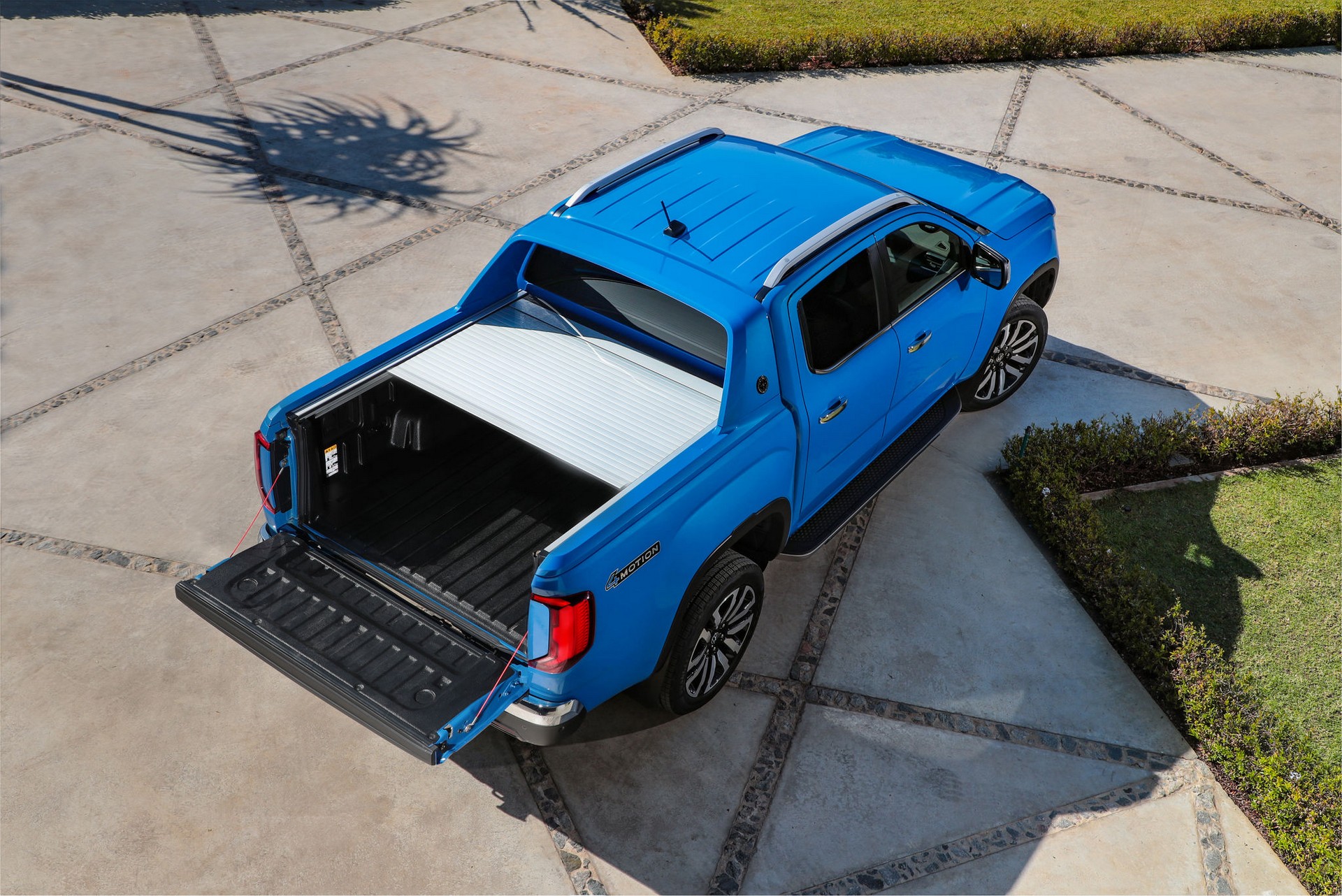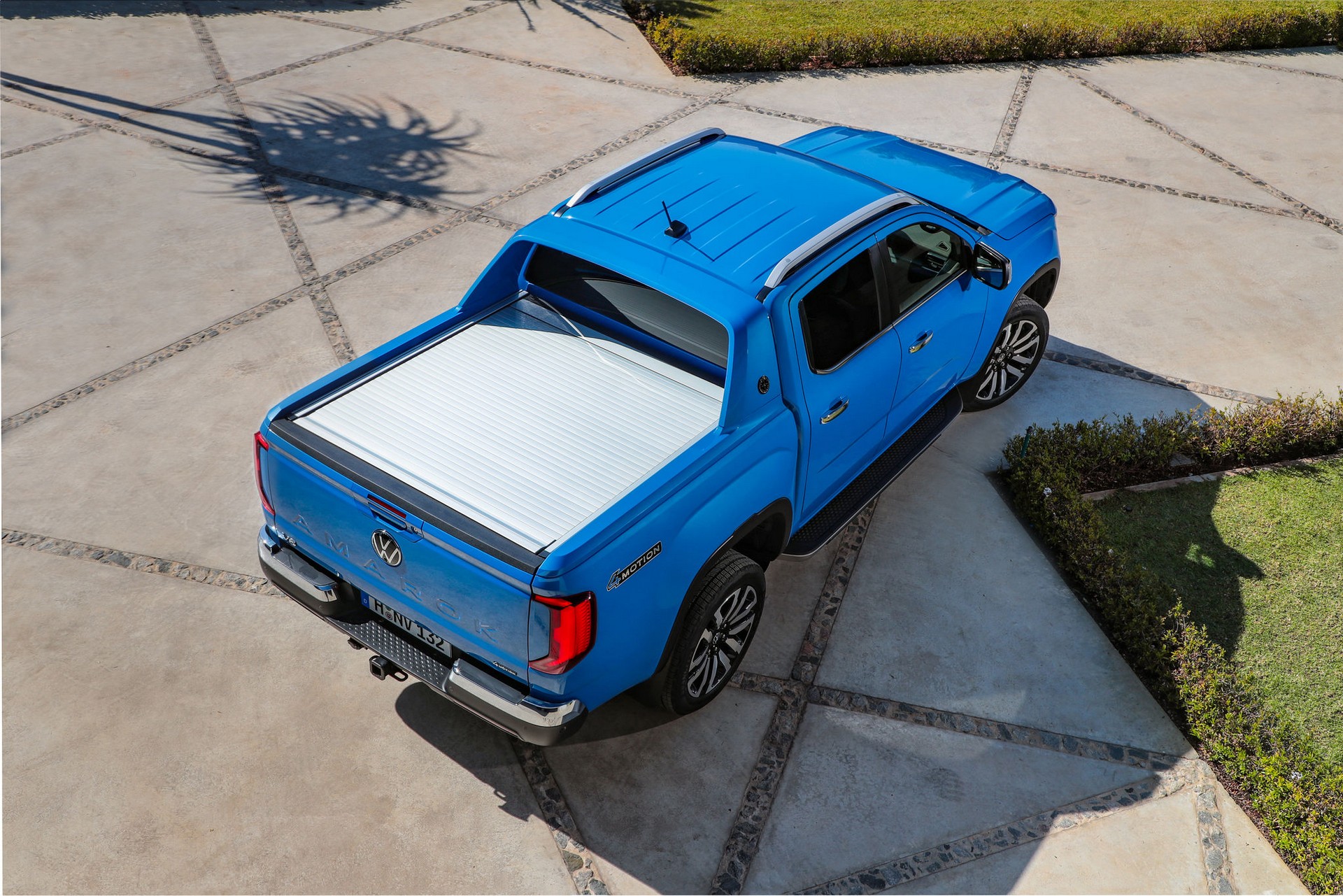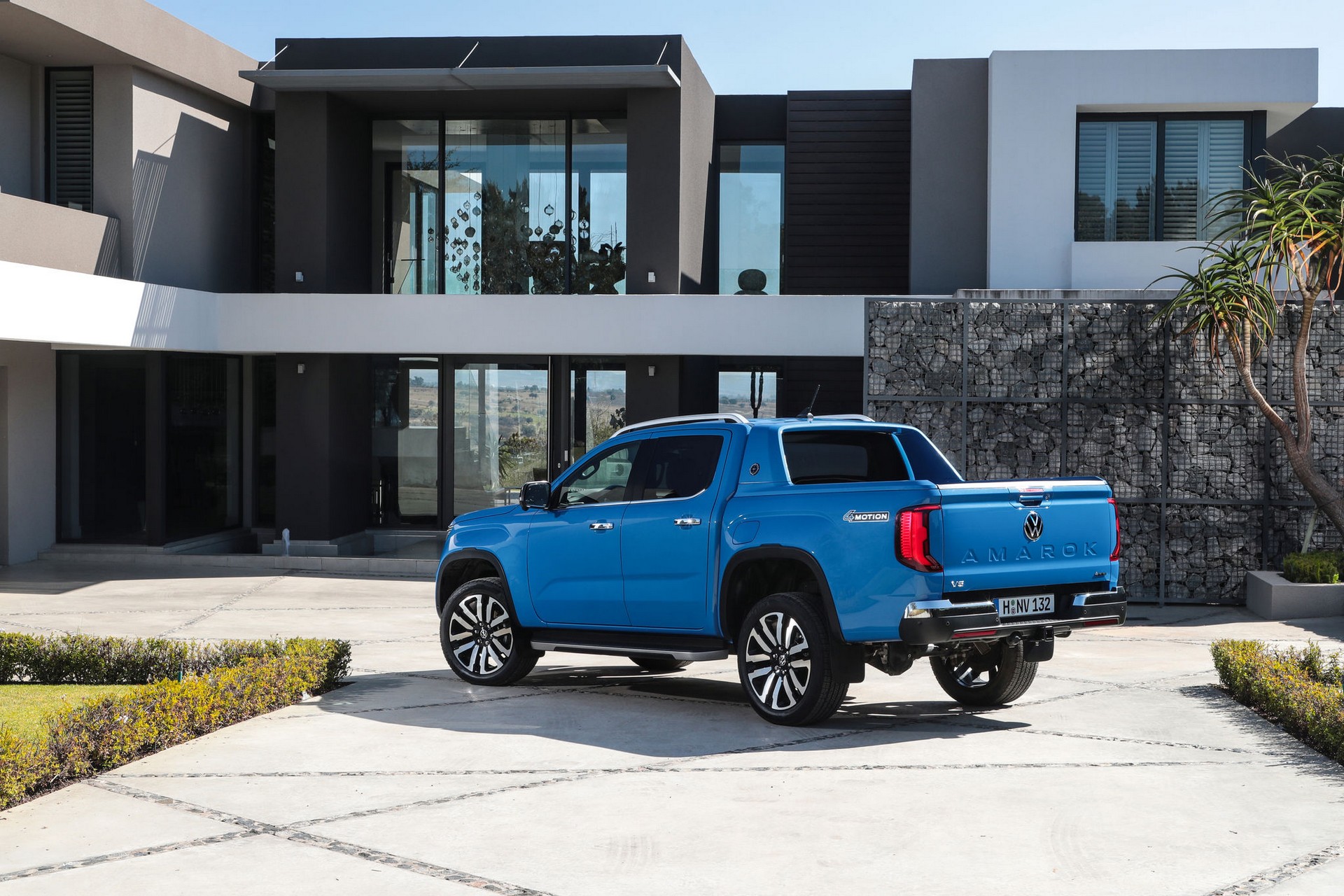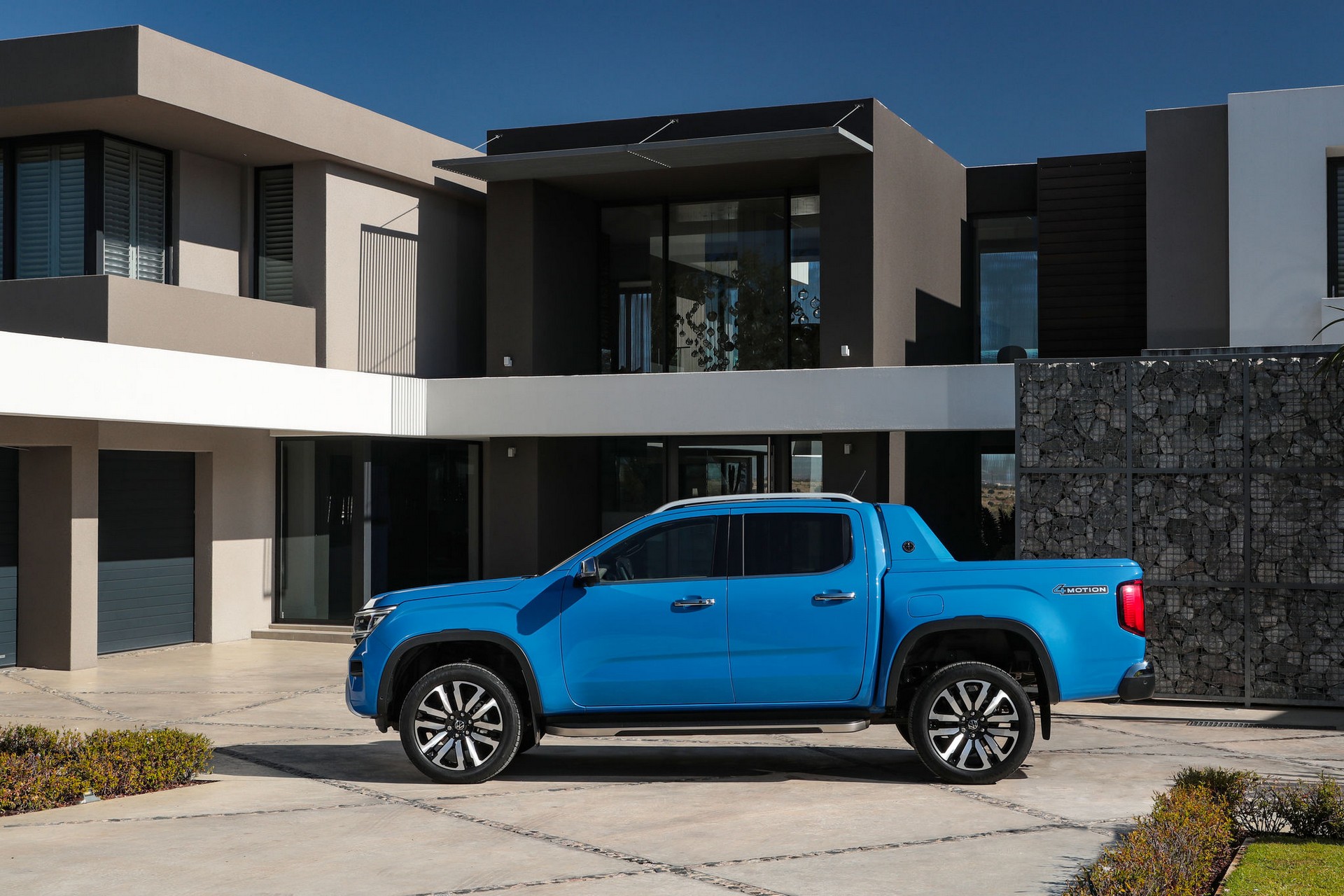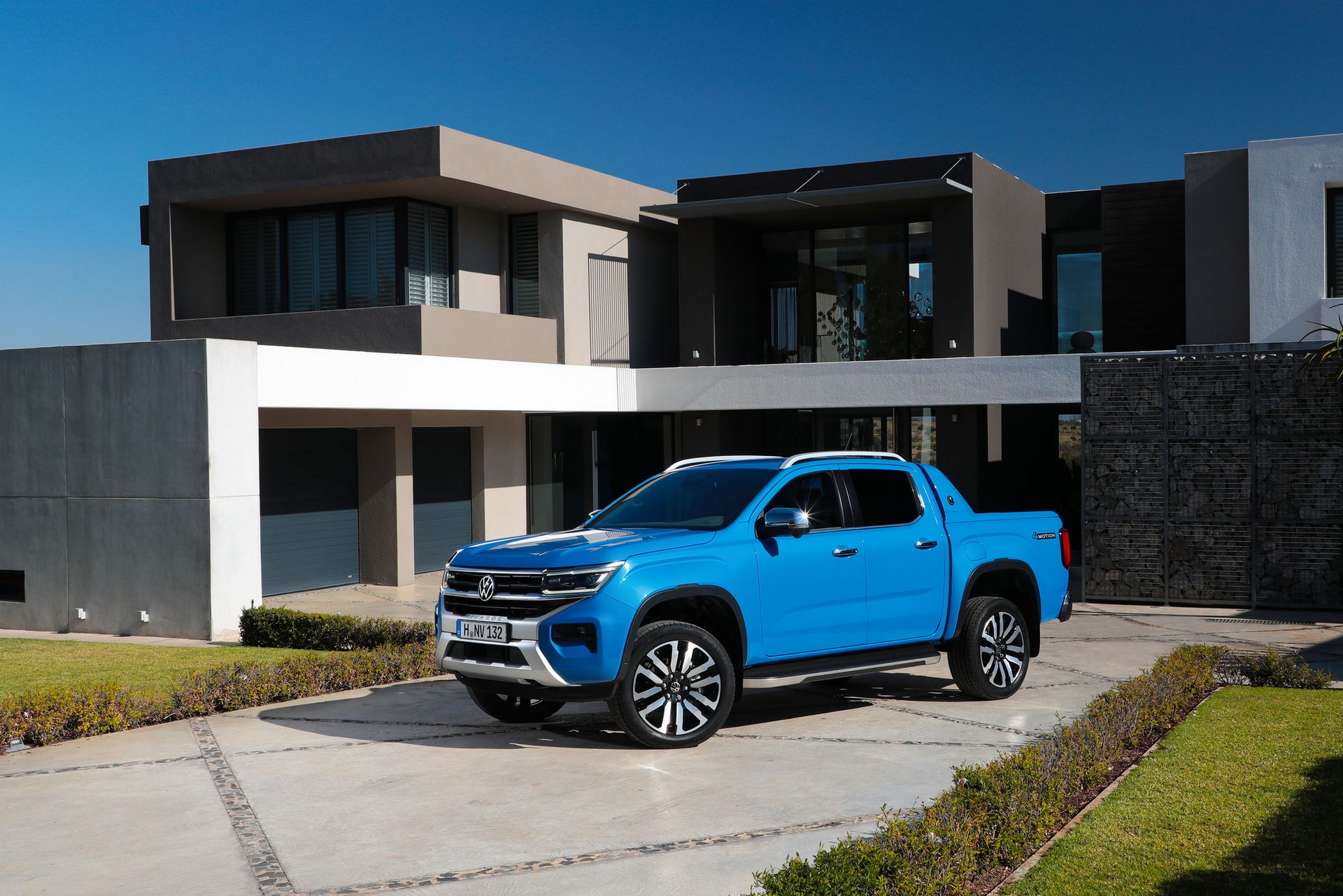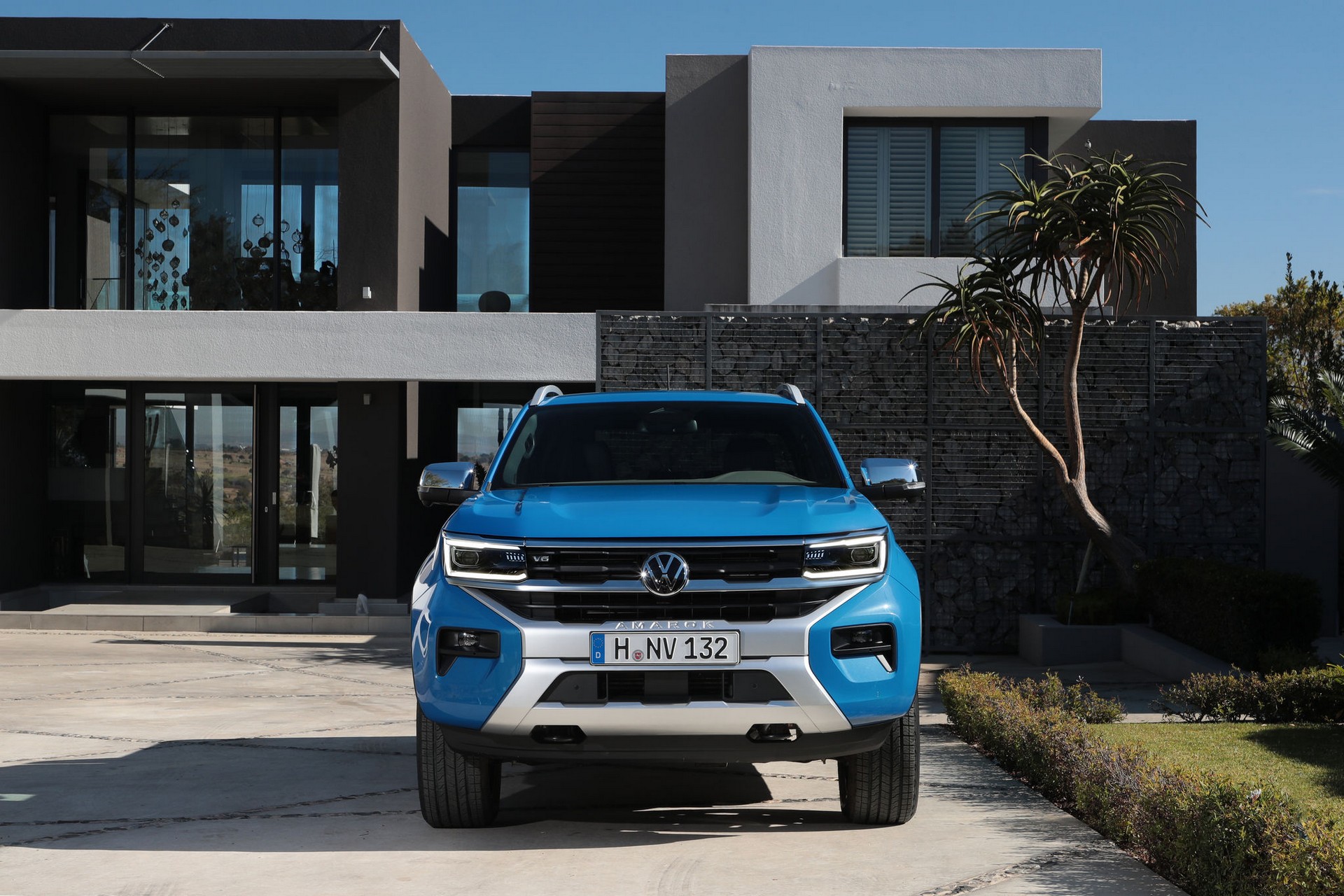Volkswagen has revealed full details of the second-generation Amarok pickup truck, and this time we’re hopeful that North America might get a slice of the action.
The body-on-frame truck is twinned with the new Ford Ranger, but VW’s design team has worked hard to differentiate the two, giving Amarok 2 an X-shape front bumper insert below the VW roundel, standard LED matrix headlights that taper into the tops of the fenders and unique rear light clusters. And just to clear up any lingering doubt, “AMAROK” is stamped into the tailgate.
This new Amarok is certainly more fun to look at than the last one, and it’s bigger too. The wheelbase has grown (6.8-in) 173 mm to (128.7-in) 3,270 mm, which VW says delivers more room, especially for back seat passengers if you go for the optional double-cab layout over the standard single-cab design. But the overall length has only grown by 3.8-in (96 mm) because the overhangs have shrunk, which, together with an increase in wading depth from 19.7-in (500 mm) to 31.5-in (800 mm) should make it more useful off road. VW’s 4-Motion all-paw hardware is standard in some markets, optional in others, and comes in either selectable or permanent all-wheel drive forms, and with six driving modes to help you navigate tricky terrain.
An Extra 357 lbs Of Payload Capacity
But even if you never leave the blacktop the new Amarok should prove more useful than the last. There’s a 7,716 lbs (3,500 kg) towing capacity, maximum payload is up from 2,200 lbs (1,000 kg) to 2,557 lbs (1,160 kg), and as with the old truck you can keep your cargo safe from prying eyes with an electrically operated roll cover. Even the roof has been engineered with practicality in mind. It has a static load capacity of 772 lbs (350 kg), enabling VW to offer a four-person roof tent as an option.
Related: Watch The Live Unveiling Of The 2023 Volkswagen Amarok Here
Four Diesels, One Gas Motor And No Hybrid
The engine lineup changes a little depending on market, though as you’d expect, VW says all available engines have been tuned specifically for torque. African models kick off with a 2.0-liter diesel that makes 148 hp (150 PS), while other regions start with a 168 hp (170 PS) version of the same motor, or buyers can step up to a bi-turbo derivative that whips up 206 hp (209 PS). The top diesel option is a 3.0-liter V6 with 238 hp (241 PS) or 247 hp (250 PS) depending on market, but the most potent Amarok of all, and the only gasoline engine in the lineup, is a 2.3-litre turbocharged Ford EcoBoost four that makes 298 hp (302 PS). Some low-spec models will get a manual transmission option, but order anything over 200 horses and you get a 10-speed auto, which replaces the eight-speeder fitted to the old truck.
12-Inch Touchscreen, 20 Driver Assistance Aids
Arguably the biggest change over the old Amarok, however, is not the number of transmission ratios, but the drastically improved interior and the amount of luxury and safety kit offered. Exactly which goodies you get will depend on how far up the Amarok, Life, Style, Panamericana and Aventura range ladder you climb, but there’s a new digital instrument pack and 12-in tablet infotainment system on all mid-spec models and above, plus 20 new driver assist systems including adaptive cruise control with road sign recognition for the first time.
Is It Coming To The U.S.?
The previous Amarok launched in 2010 was built in Argentina and sold in South America, Europe and Australia, but not the U.S. This time the Amarok is being manufactured in South Africa, and while VW’s Germany HQ hasn’t confirmed North American sales we know that the U.S. division recently trademarked the Amarok name in the region and that Ford is bringing the Ranger to the U.S.




